Visit to Lausanne
DIDIER HEUMANN, ANDREAS PAPASAVVAS

The beautiful Lausanne, jewel of the canton of Vaud, stands proudly as the fourth most important city in the Swiss Confederation, after Zurich, Geneva, and Basel. In this great Lausanne, where more than 400,000 souls mingle, the city itself, nestled in the hollow of its valleys, hosts around 140,000 residents. It rises like an intellectual beacon, housing within its walls a university campus, a university hospital, and a prestigious federal polytechnic school, all shining with worldwide renown. Moreover, it radiates an international aura thanks to its numerous international schools, making it a leading educational hub. Since the year of grace 1994, Lausanne has boasted the title of Olympic capital, the sacred seat of the International Olympic Committee (IOC), where sporting dreams come to life and soar into eternity. Like a goddess with many faces, Lausanne majestically extends from the hilltops to the shimmering shores of the lake, defying gravity with a dizzying elevation change of over 450 meters, from the heights of Chalet à Gobet to the gentle undulations of Ouchy, a veritable bustling epicenter of urban life in the summer.
Tomorrow, you will depart from this Lausanne from the picturesque port of Ouchy, where the lake whispers gently to travelers tales of ancient times and dreams yet to come. The calm waters of Lake Geneva, a mirroring reflection of the city’s soul, will cradle you in their gentle tranquility, while the Alps in the background lazily stretch towards the horizon, like slumbering giants under the benevolent gaze of the sky. And as our steps lead you from the wooded heights of Lake Sauvabelin to the enchanting shores of the lake, you will plunge into a dizzying descent, a ballet choreographed by nature and humans alike. A descent of 280 meters, where each turn, each twist, is an invitation to contemplation, an embrace with the very essence of life. With each step, you will draw closer to this majestic lake, to its crystalline waters that sparkle under the gentle kiss of the sun. You will then understand that Lausanne is much more than just a city. It is a hymn to beauty, to the grandeur of nature, and to the human soul flourishing in this alpine jewel, like a rare flower under the benevolent protection of mountain and lake.
The elevation change from Lake Sauvabelin is 280 meters downhill to the lake.
If you only want to consult lodging of the stage, go directly to the bottom of the page.
Section 1: From Lake Sauvabelin to Lausanne-Barre.
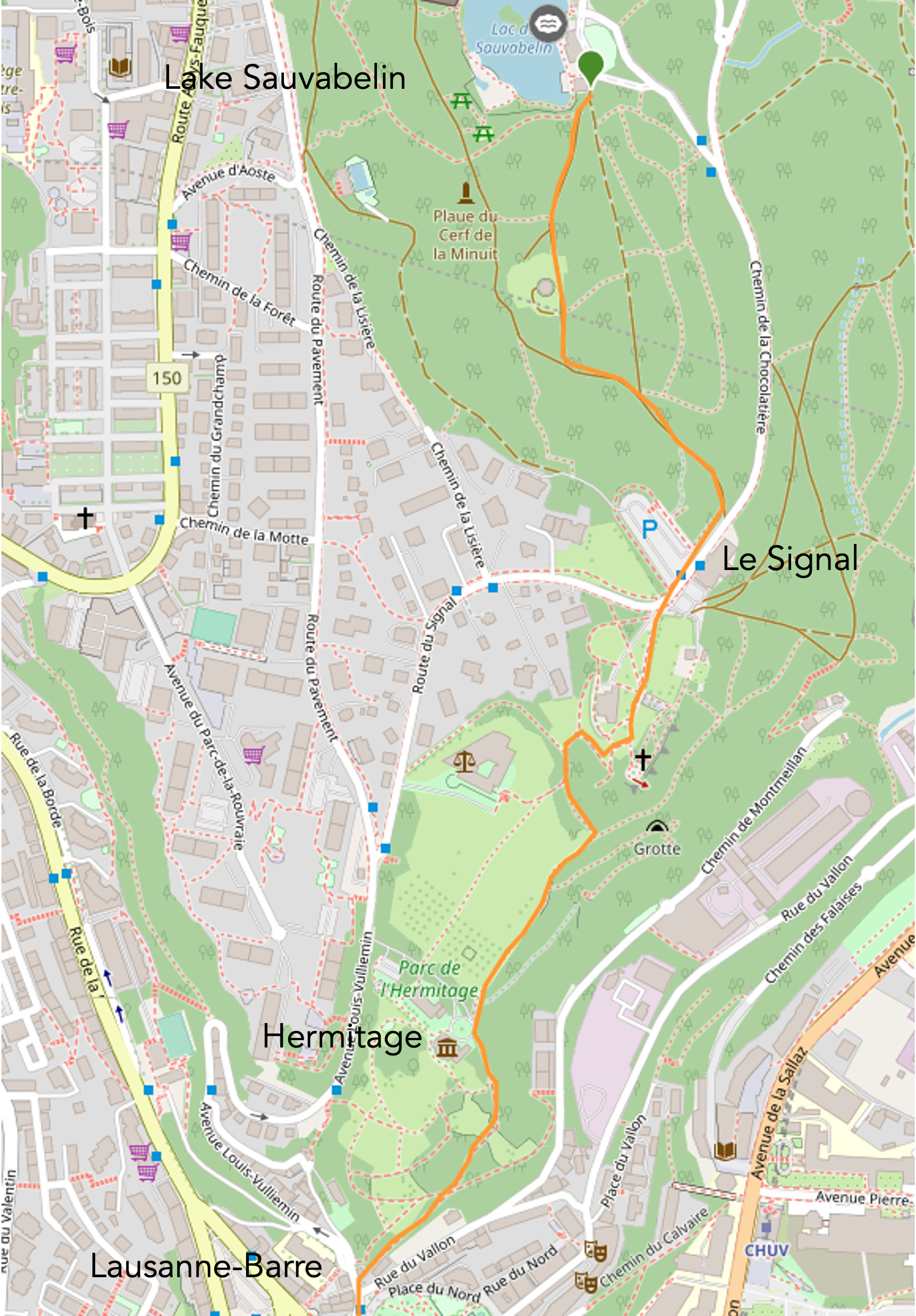
| At the edge of Lake Sauvabelin, strollers are often captivated by the tranquility of the terrace overlooking the calm waters. Here, they let themselves be lulled by the soothing murmur of the ripples. |
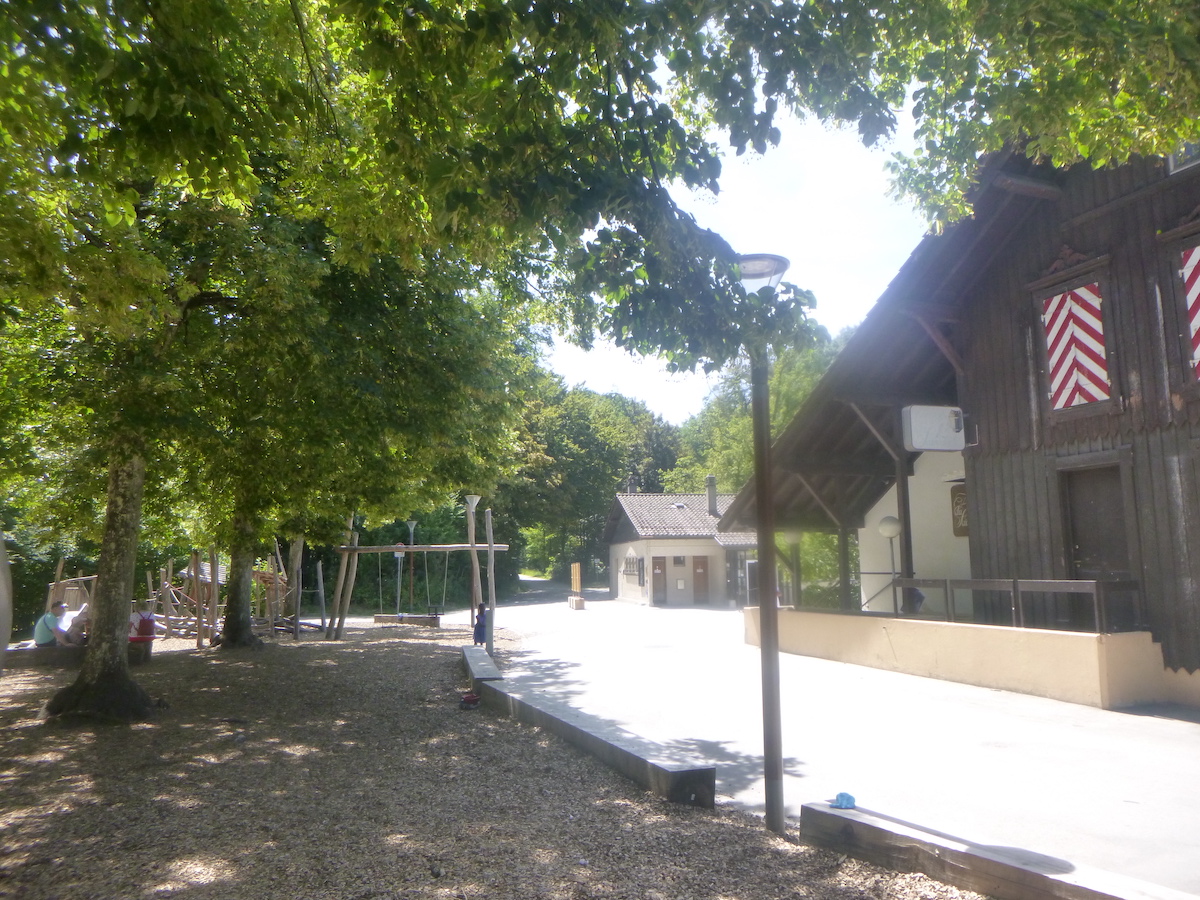 |
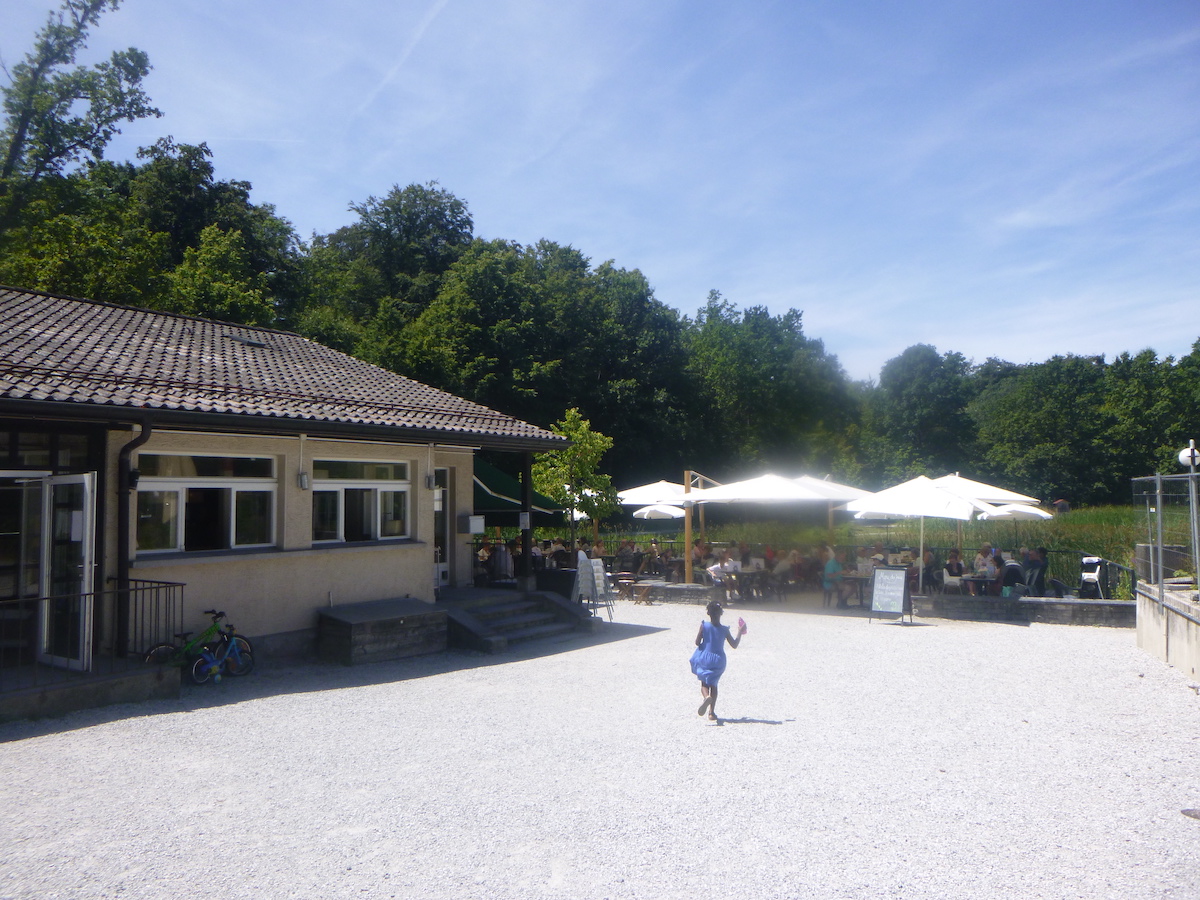 |
| At the edge of Lake Sauvabelin, strollers are often captivated by the tranquility of the terrace overlooking the calm waters. Here, they let themselves be lulled by the soothing murmur of the ripples. |
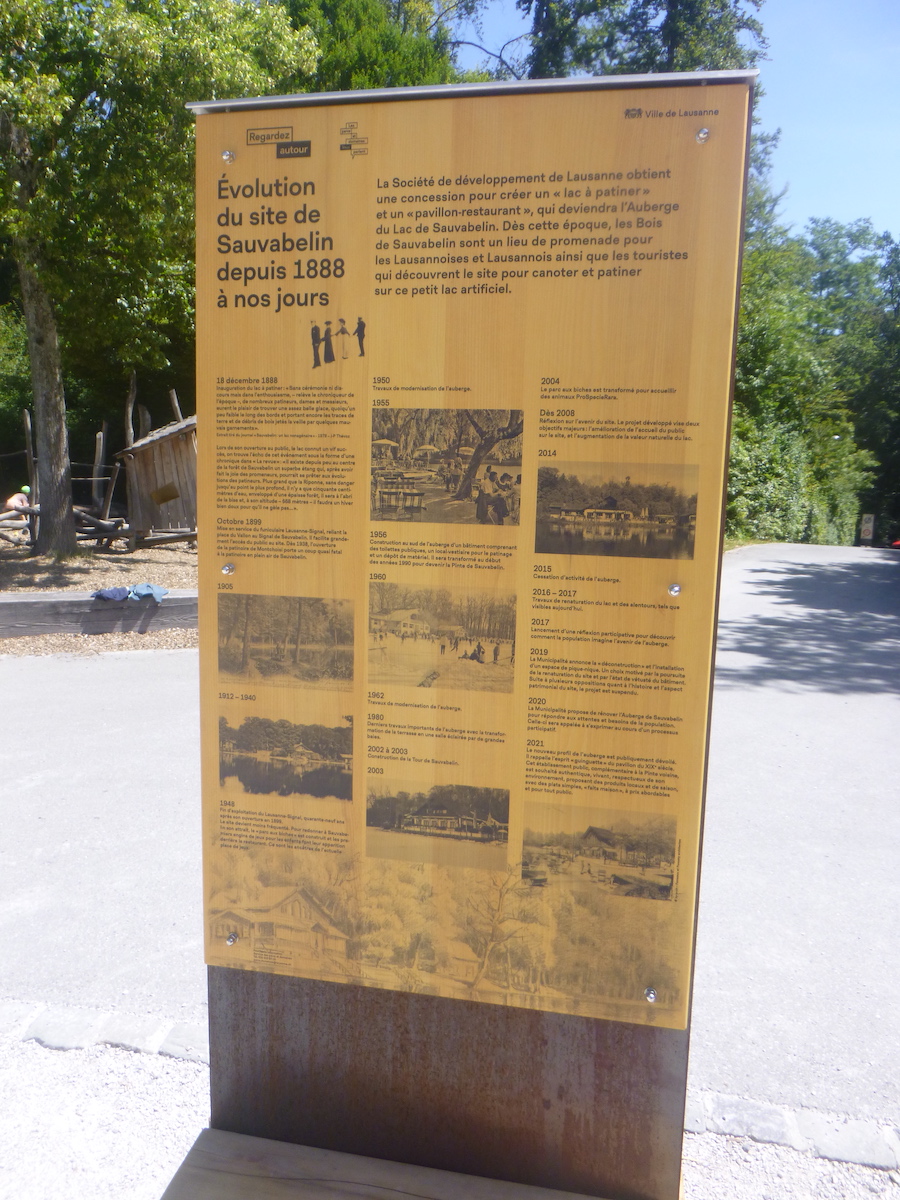 |
 |
| The Via Jacobi winds its way towards this imposing tower, marking a significant stage in its journey. |
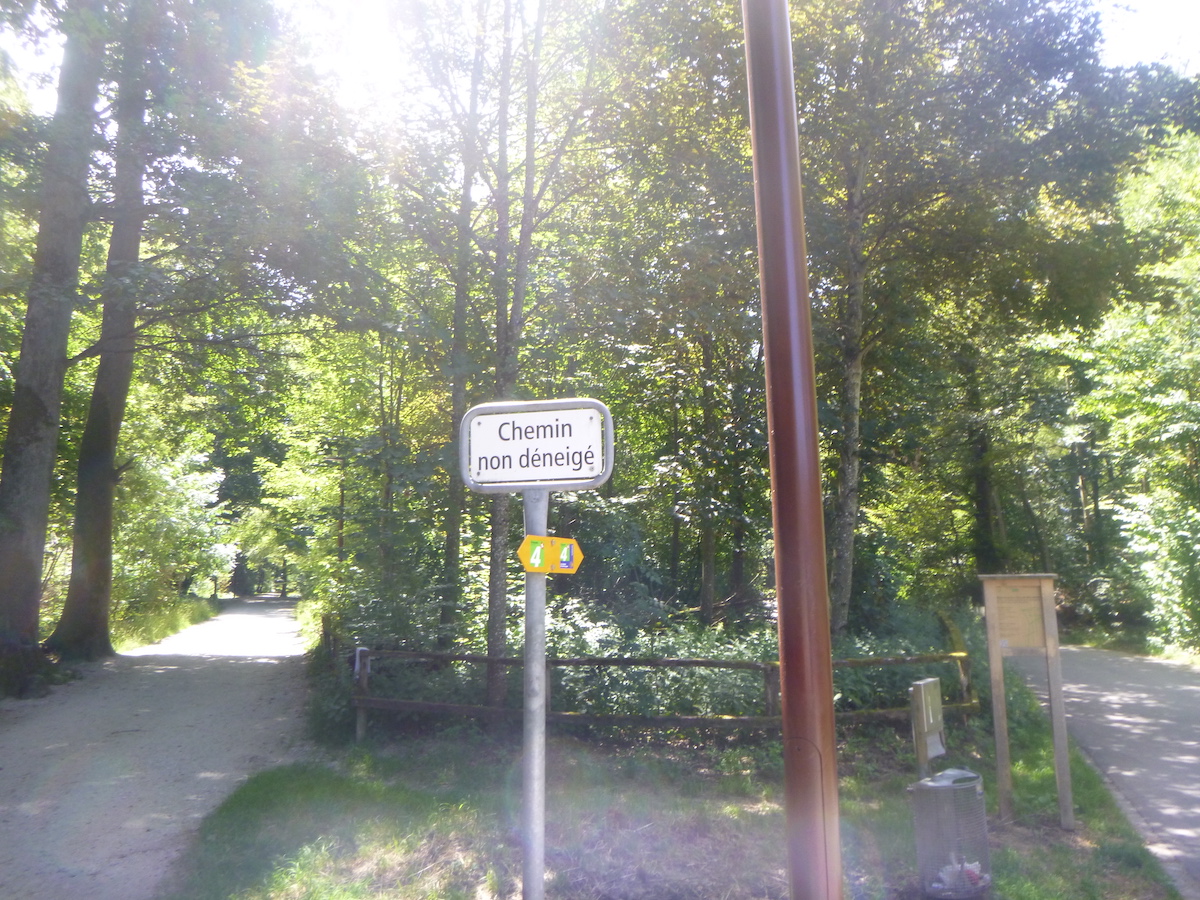 |
 |
| Dominating the horizon with its slender silhouette, the solid wooden tower, with its 302 steps and dizzying 35 meters of altitude, rises like a beacon in the landscape. Since its opening to the public in 2003, it offers every visitor the privileged chance to gaze upon the splendid heights of Lausanne, when open. |
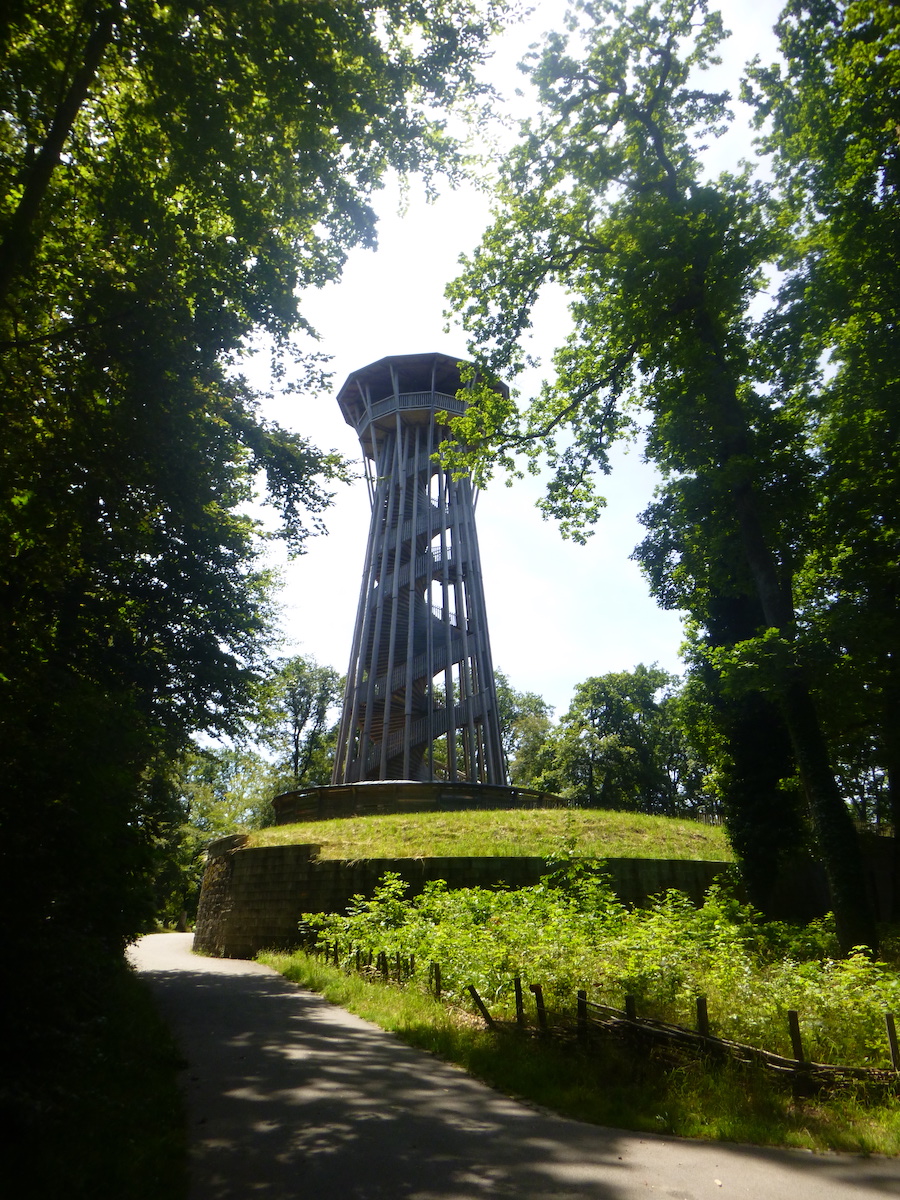 |
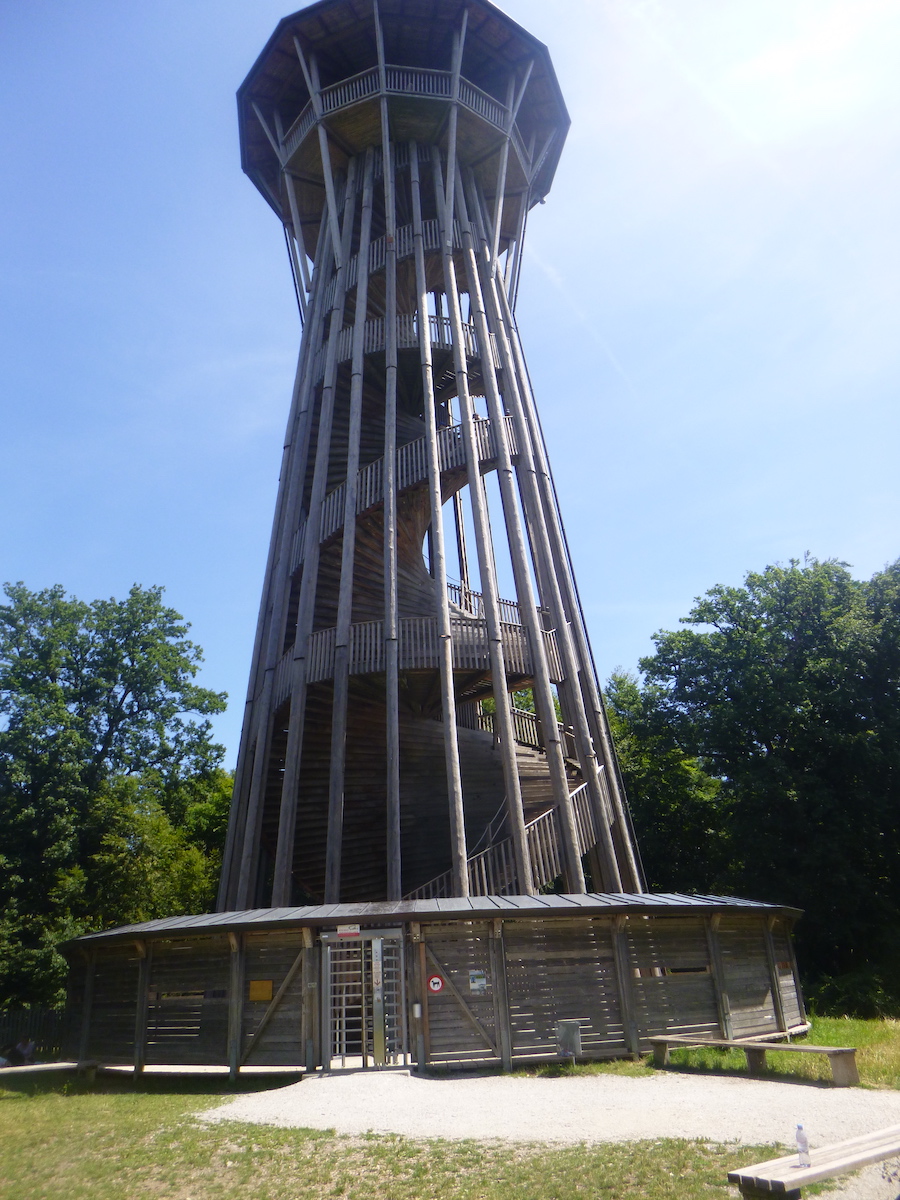 |
| The ascent, both challenging and exhilarating, proves to be a challenge on a spiral wooden staircase. Each step climbed is a victory over gravity, each stride an advancement towards the heavens. One railing for going up, another for going down: such is the incessant ballet of souls in search of altitude. |
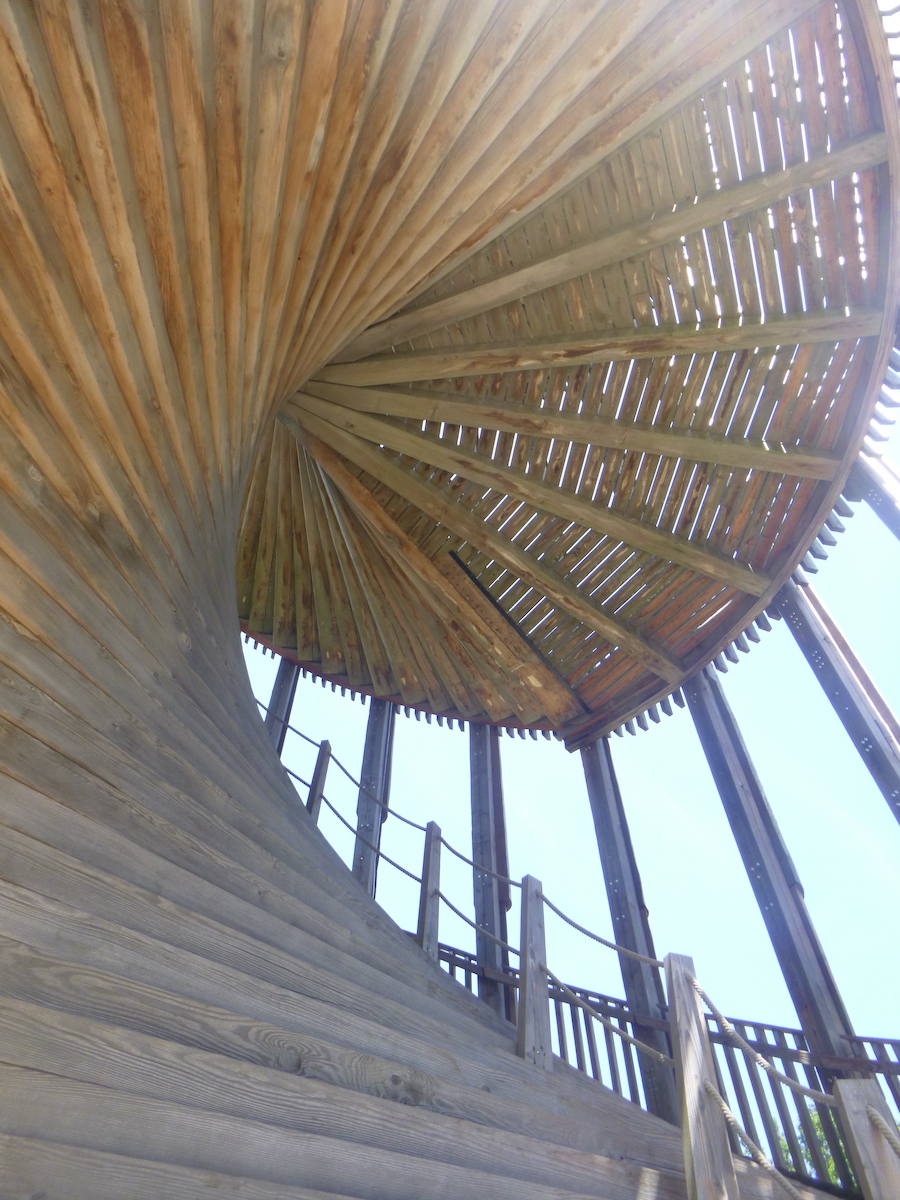 |
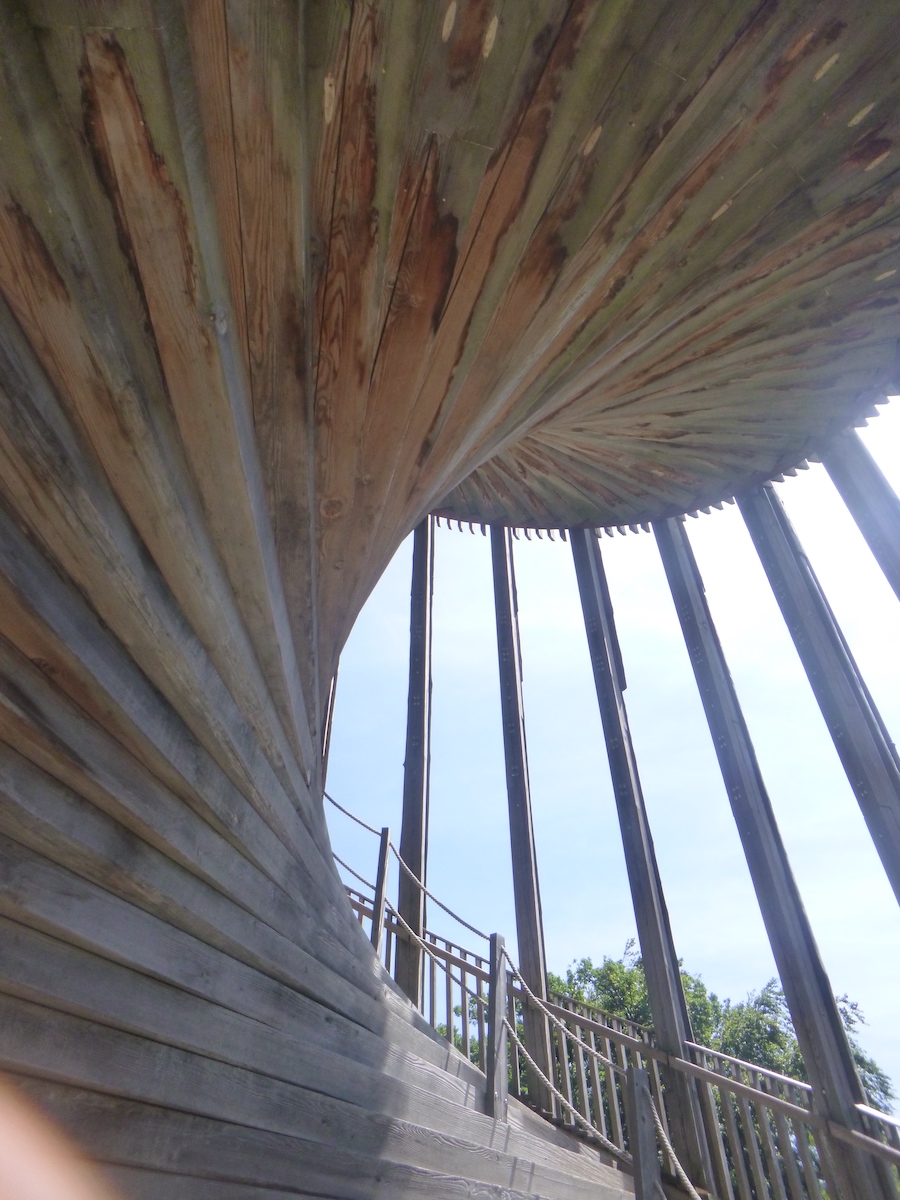 |
| To enhance the climb, travelers can immerse themselves in the slogans inscribed on the wooden steps or lose themselves in contemplation of the surrounding nature, while time dissolves into the effort to be made. For climbing 35 meters is like ascending ten stories of an imposing building. |
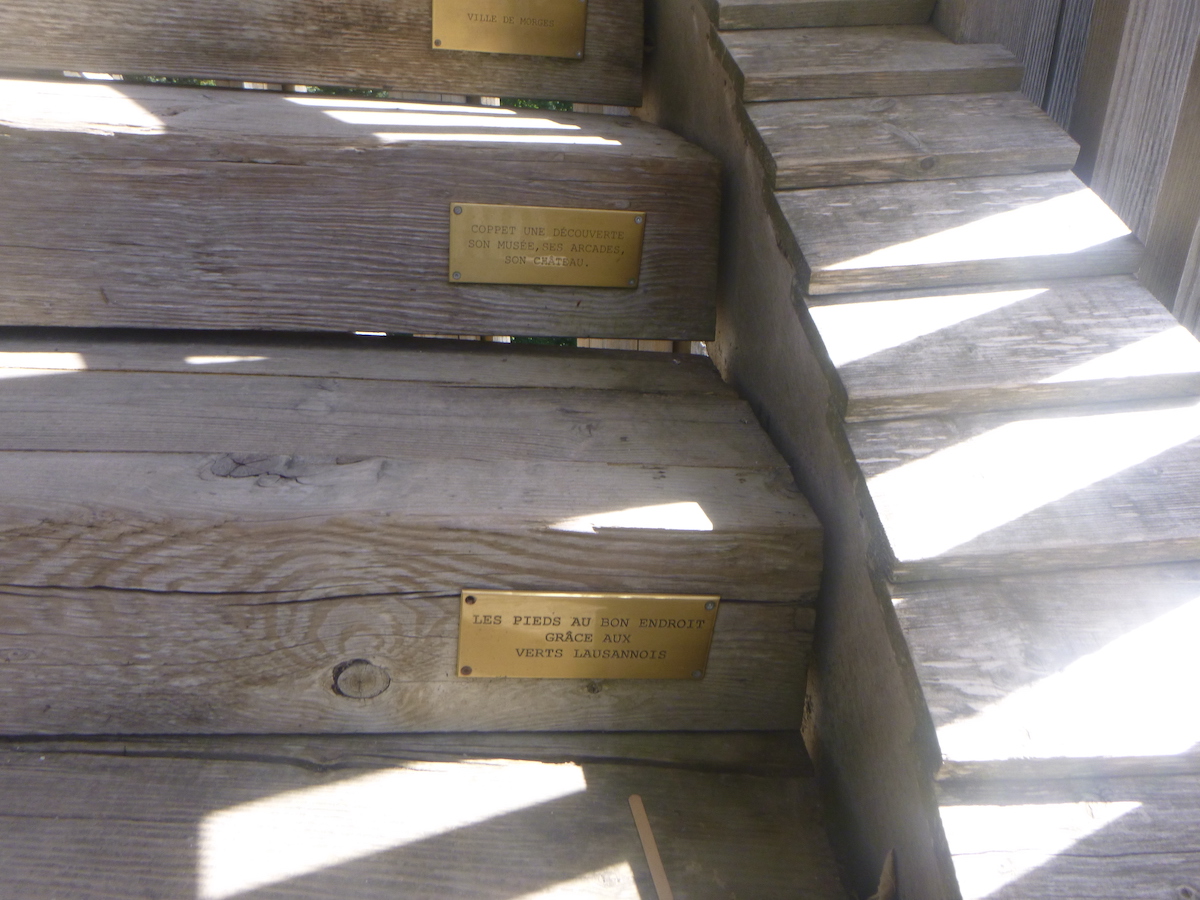 |
 |
| From the summit, the world seems reduced to its simplest expression, humans becoming tiny figurines moving in a grandiose setting, dominated by the immensity of the sky and the vastness of the lake. |
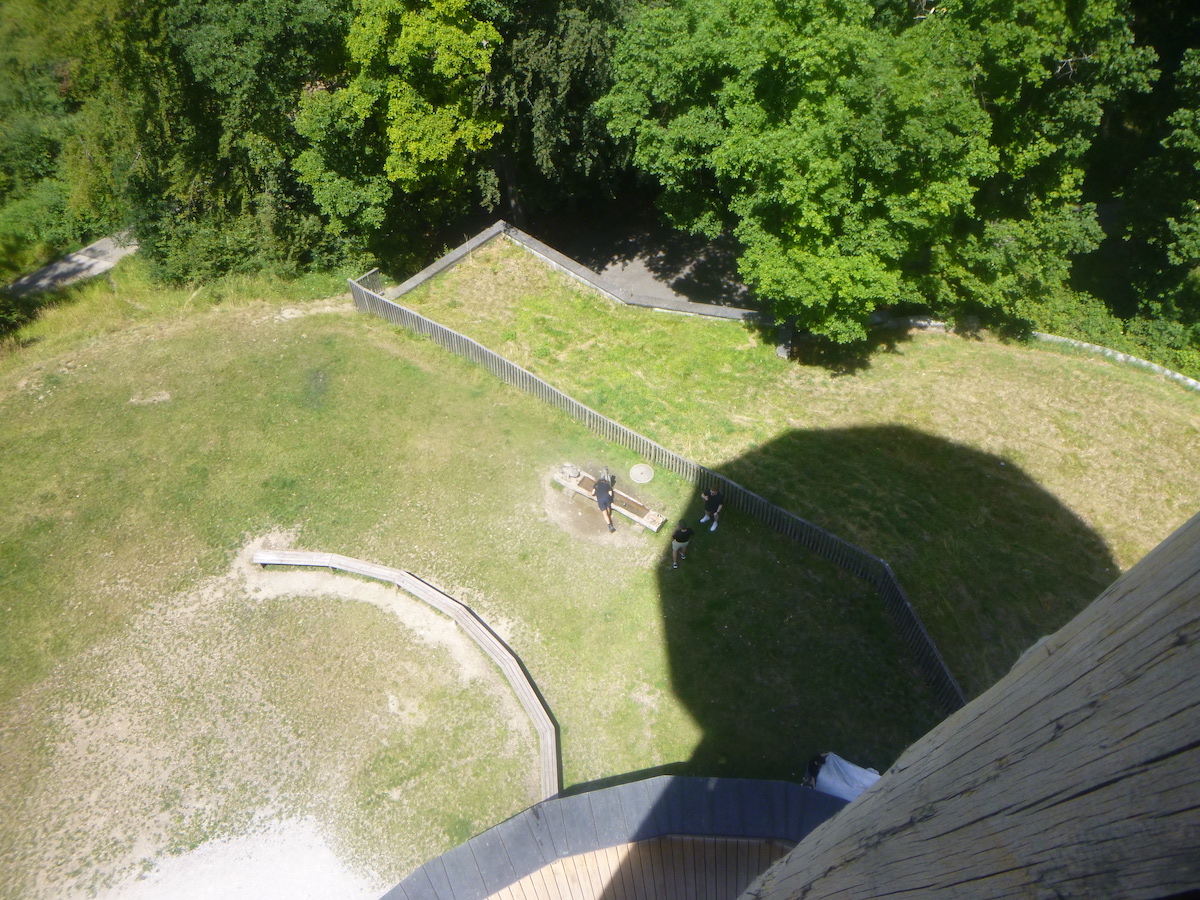 |
 |
| From the panoramic terrace, the gaze fully embraces the living tableau of the sleeping city, the shimmering lake, and the forest, offering an invaluable reward for the effort expended. |
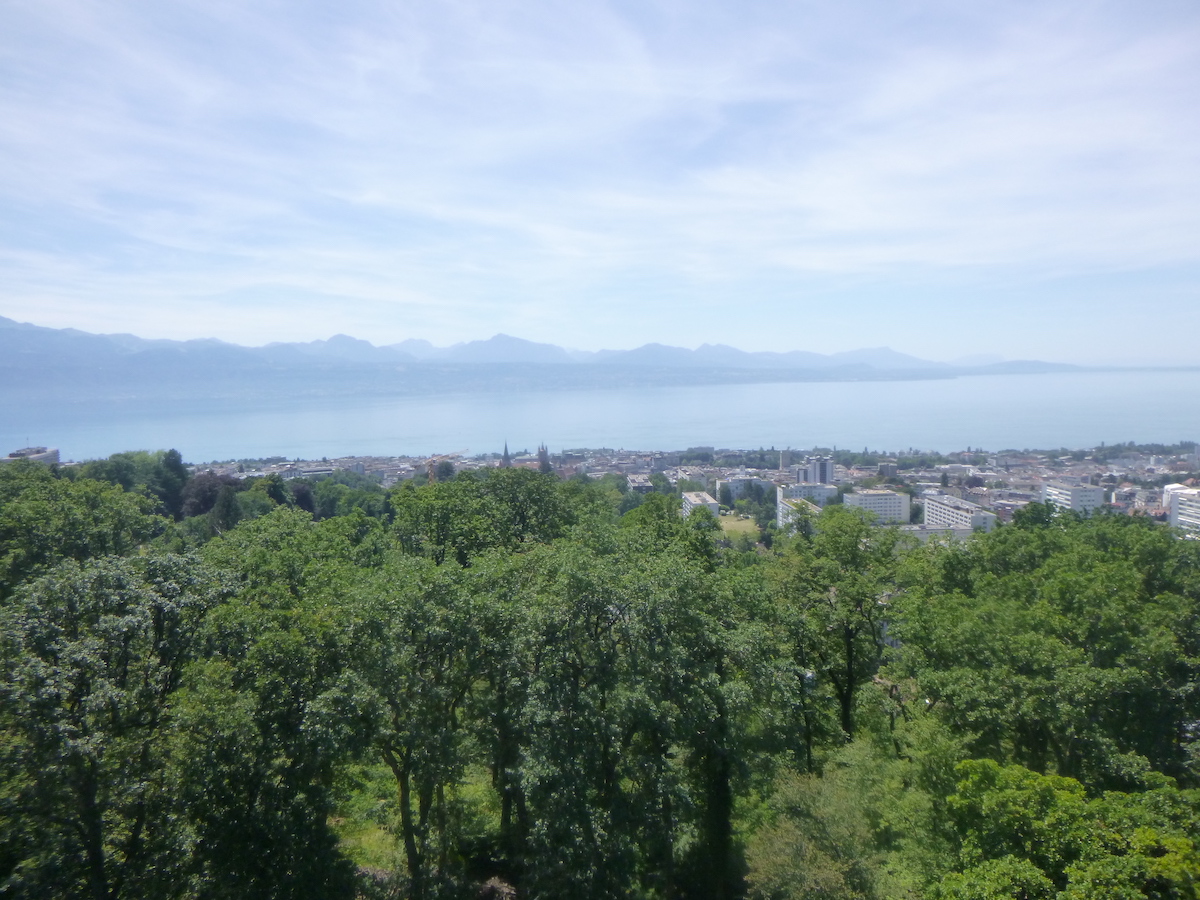 |
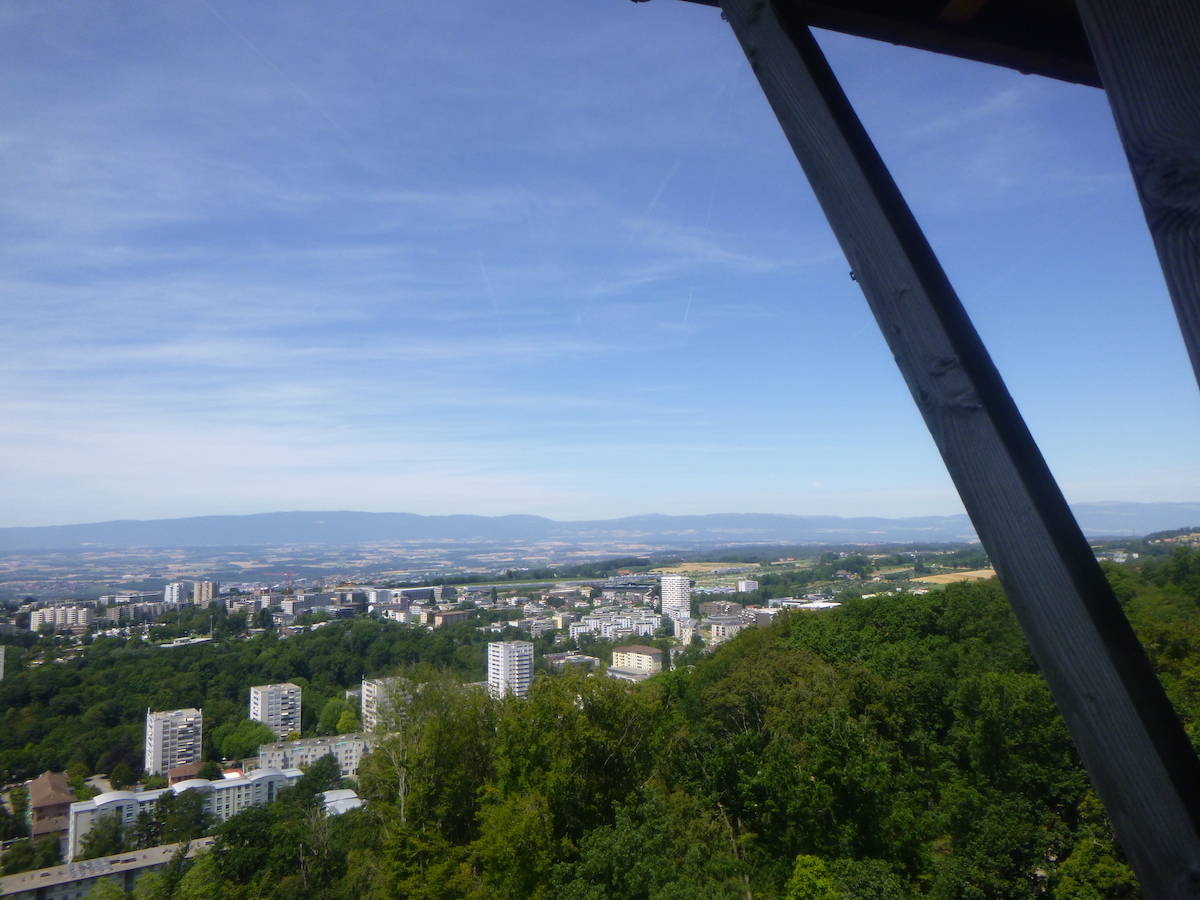 |
| Descending from the tower, a small road winding through the woods leads travelers to the Signal, where a procession of majestic trees unfolds, like centennial guardians watching over the secrets of the Jorat-Woods. |
 |
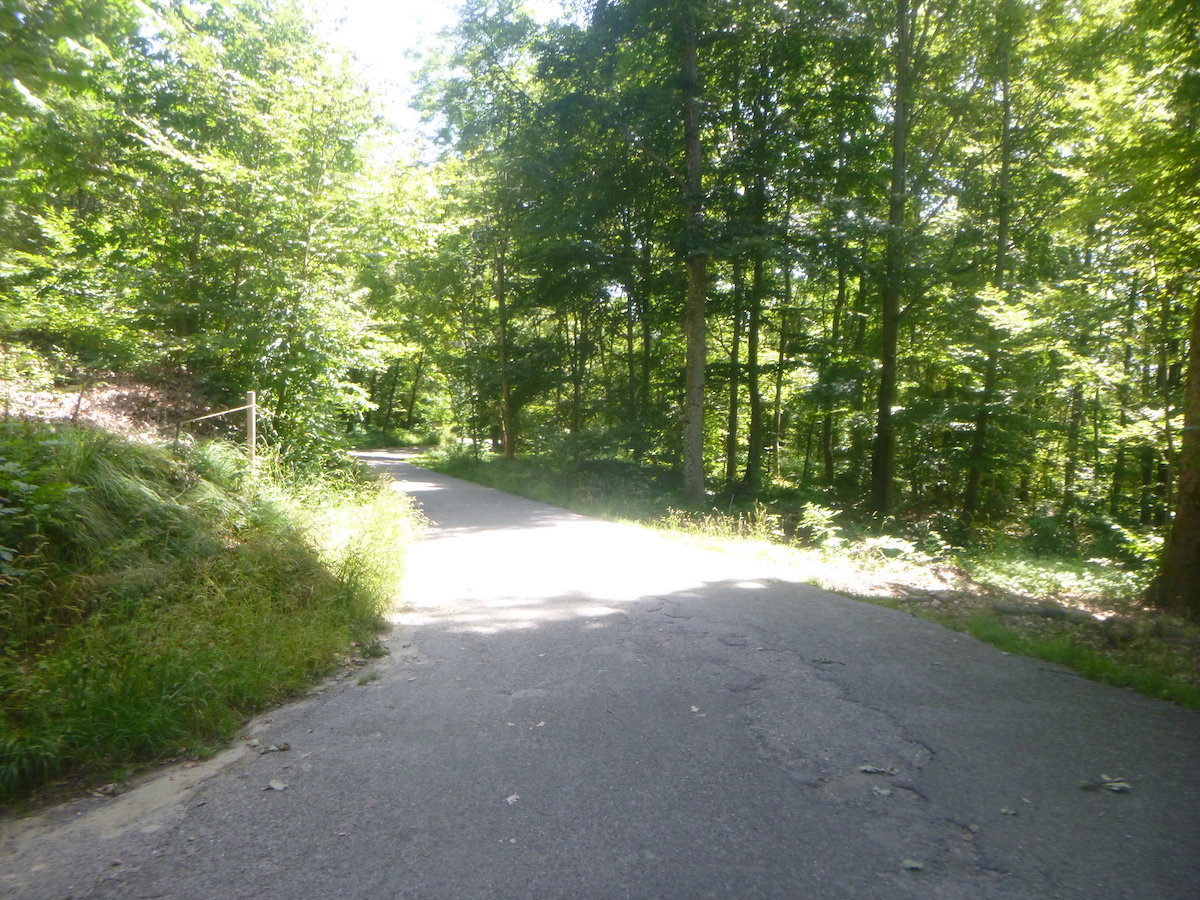 |
| Near a large parking lot stands the vast refuge of the Signal, a covered canteen capable of accommodating up to 560 standing or 360 seated people. Despite its imposing capacity, this space often remains deserted, patiently awaiting joyful festivities or significant events that will animate its wooden walls. |
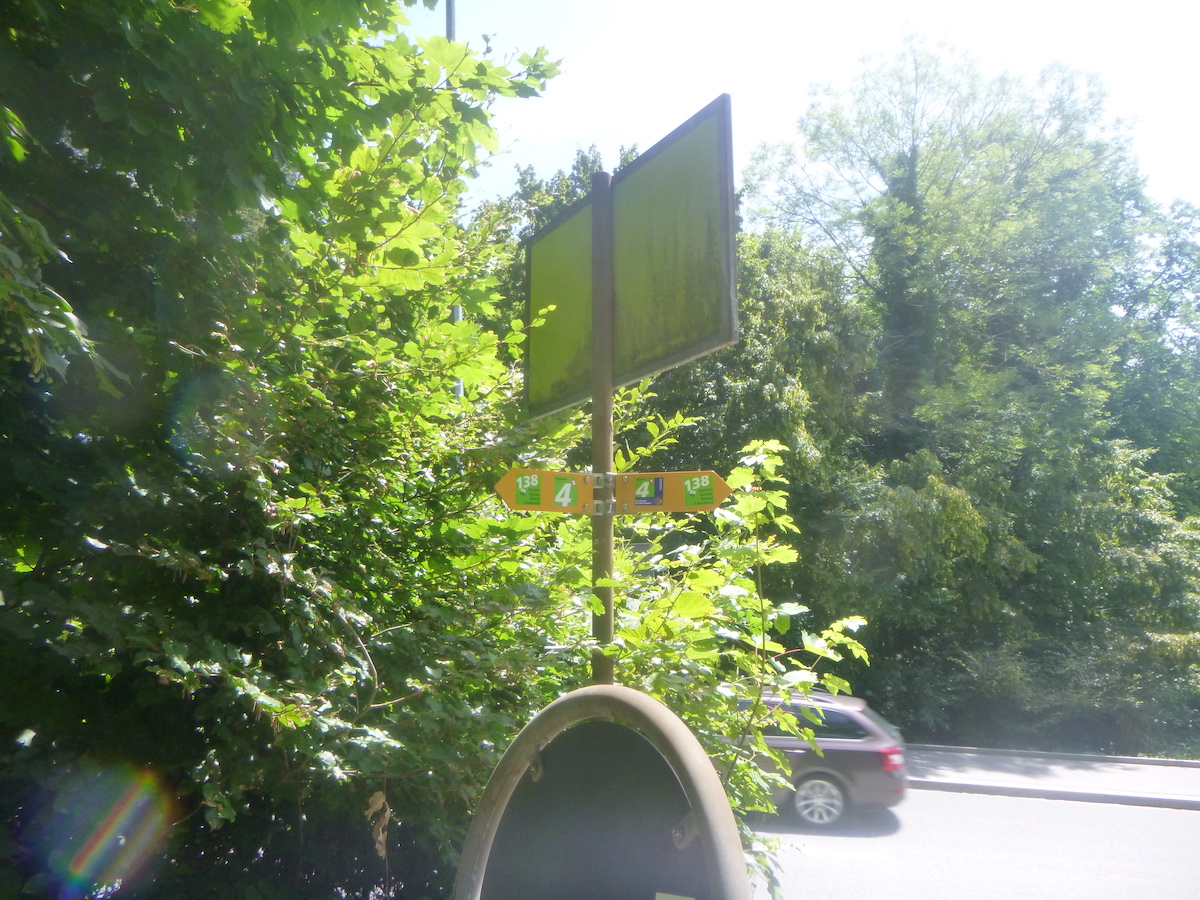 |
 |
The Via Jacobi now reveals itself as a well-trodden path, a reliable guide pointing straight to the majestic edifice of the cathedral, an imposing beacon in the landscape.

| The route ventures through the Signal estate, passing by a humble chapel, near a belvedere standing like a silent guardian. |
 |
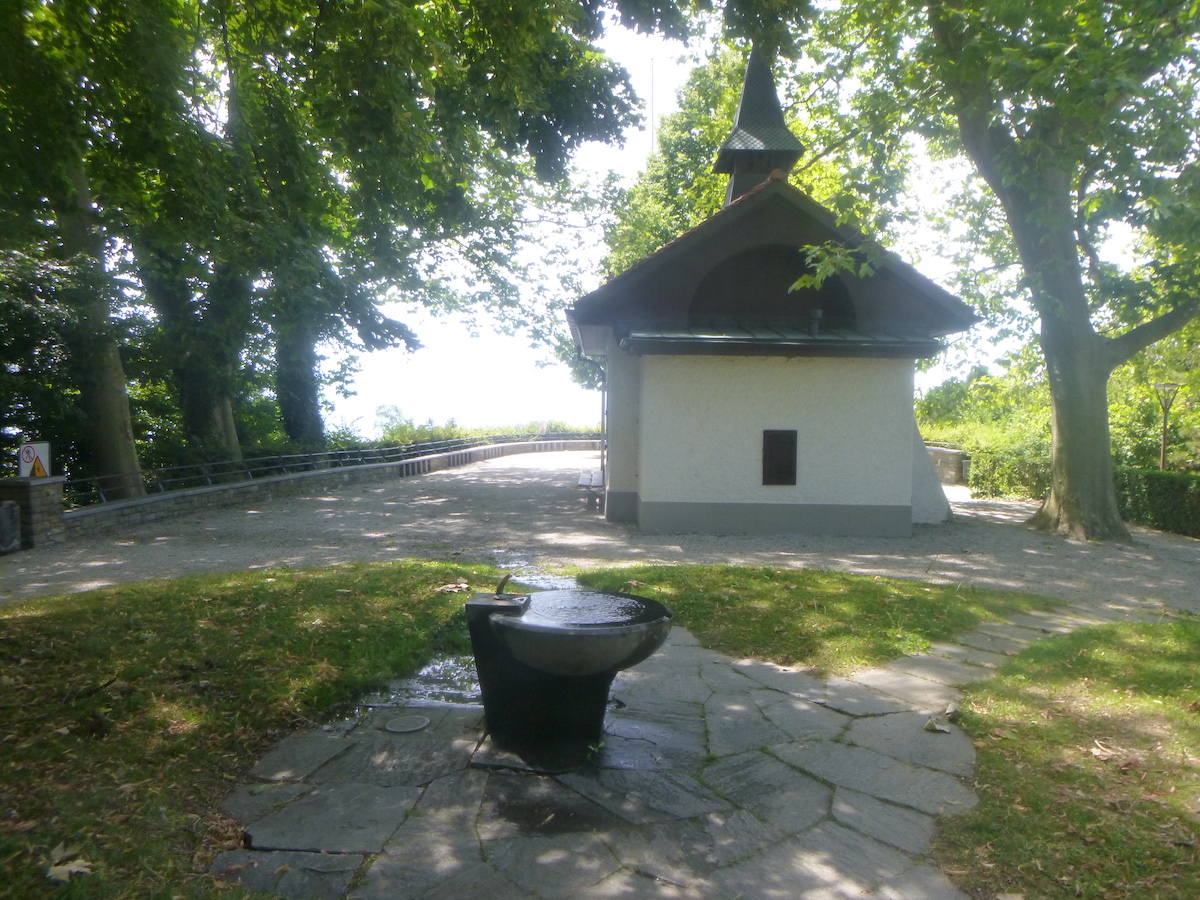 |
| Here, your eyes are treated to a breathtaking panoramic view that embraces Lausanne in its entirety, Lake Geneva sparkling like a jewel, and the majestic Alps, guardians of the horizon. In the background, the hospital sits atop the heights, while the cathedral gently recedes behind the foliage, like a mystery waiting to be discovered. |
 |
 |
| Beyond the esplanade, the path snakes past the elegant Signal restaurant, then slips again through the foliage of an undergrowth, as if it wants to jealously guard its secrets. |
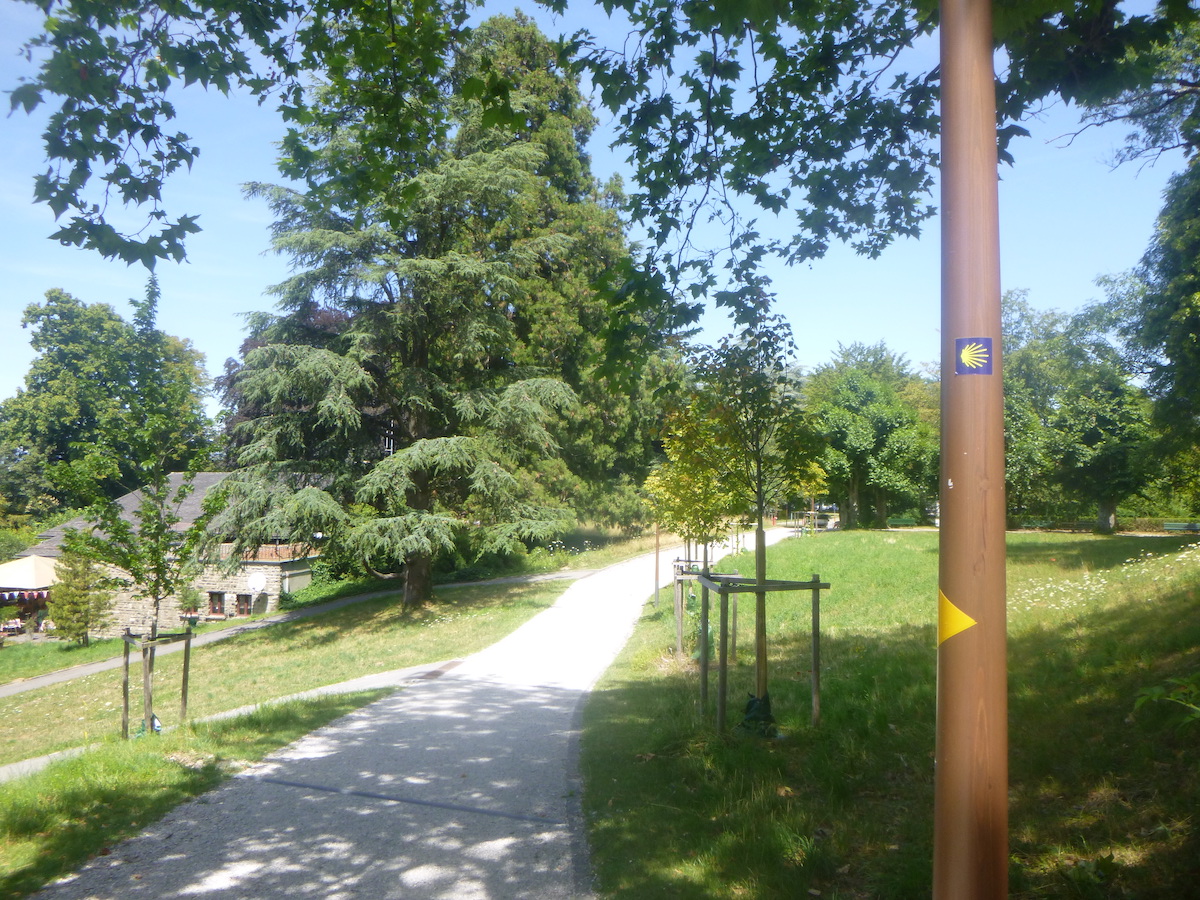 |
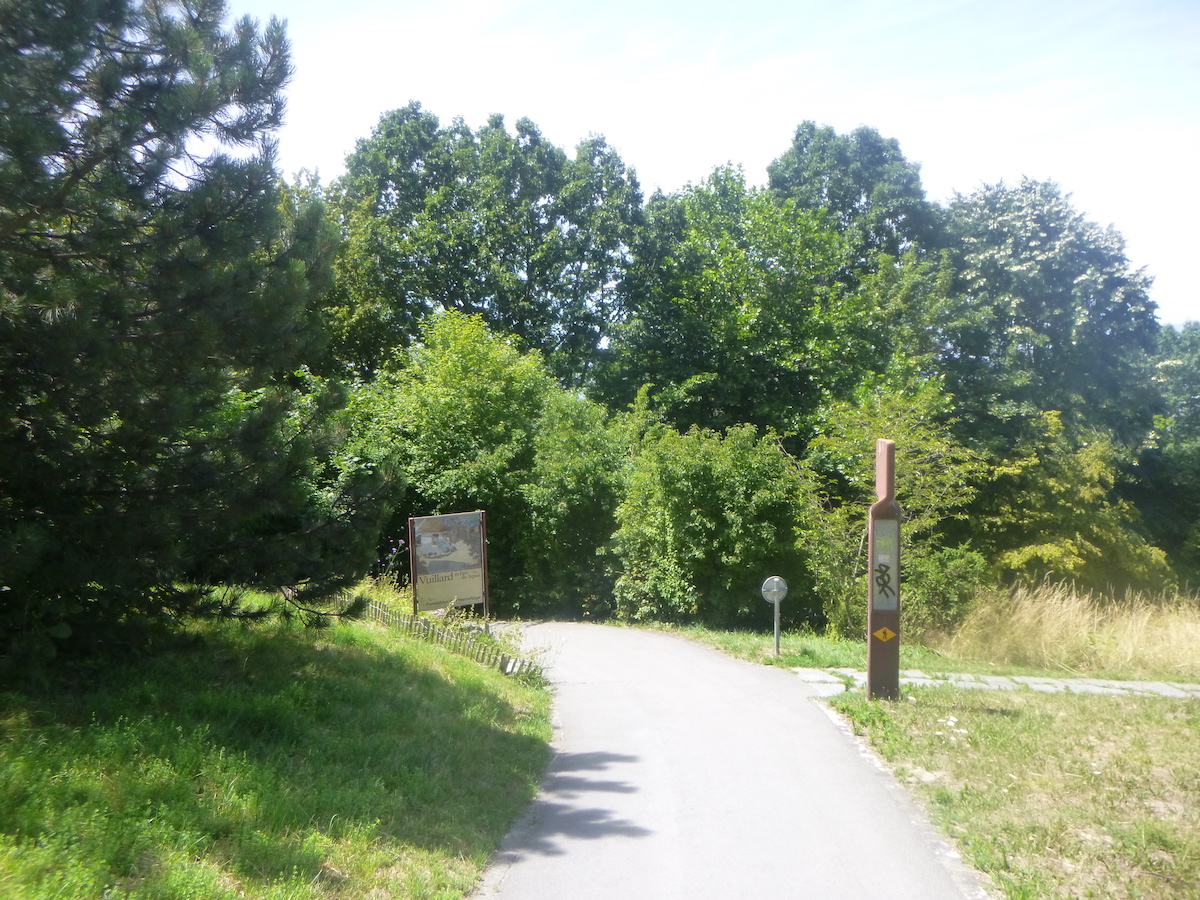 |
| Secondary paths offer an alternative route to reach the Hermitage estate or the Cantonal Court. However, it is preferable to remain faithful to Via Jacobi 4, like a promise to oneself. |
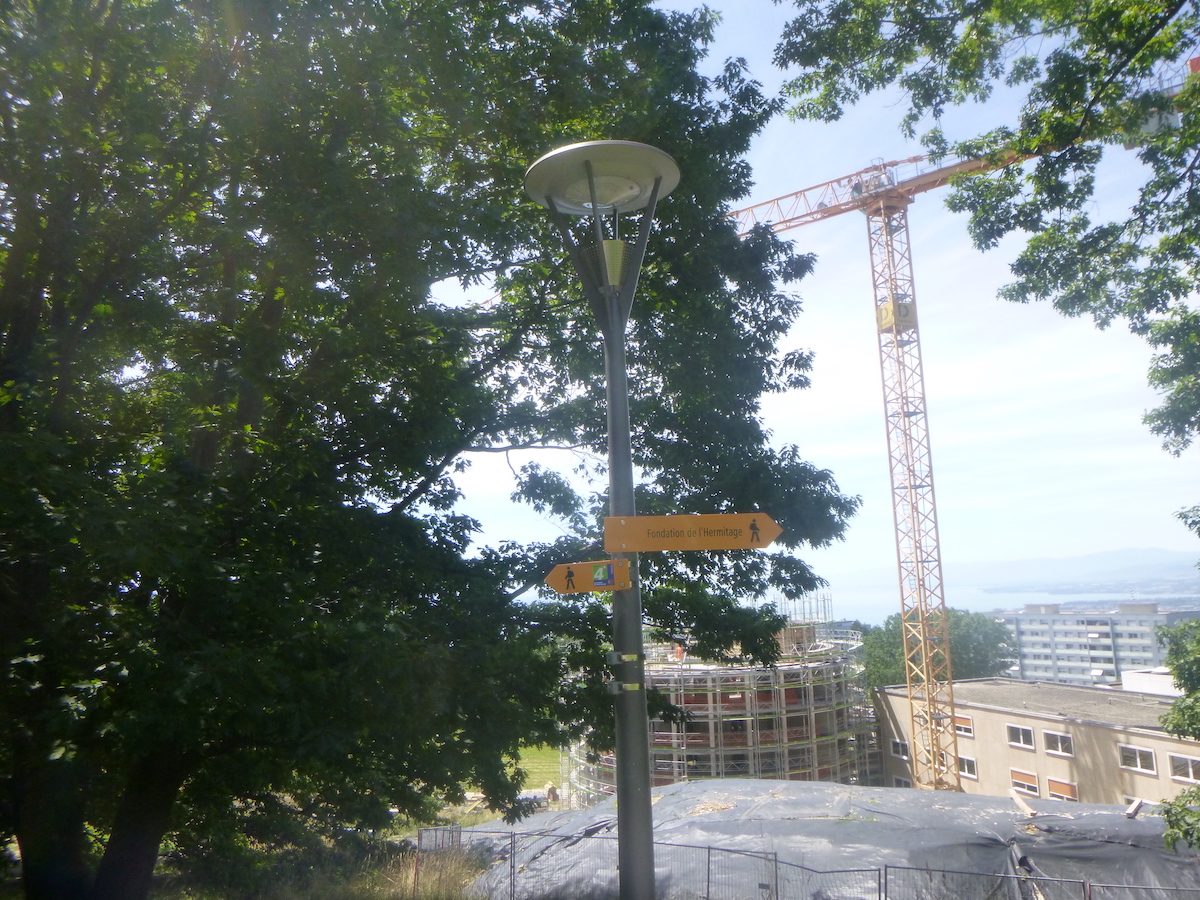 |
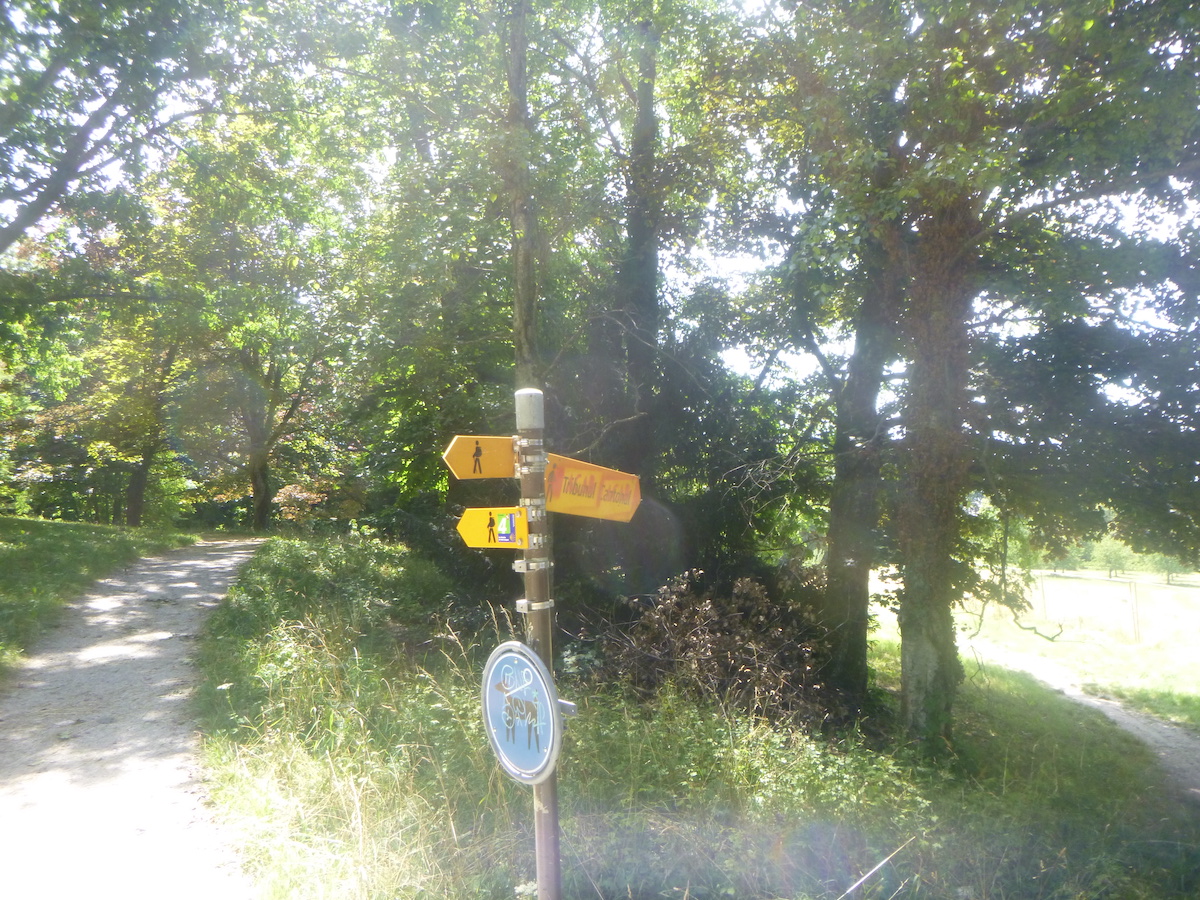 |
| Further down, the path meanders between shaded woods and green meadows, descending towards L’Hermitage. This enchanting estate proves to be an extension of the Signal Woods, offering just a 15-minute walk from the urban bustle, a gem of tranquility to lose oneself in. |
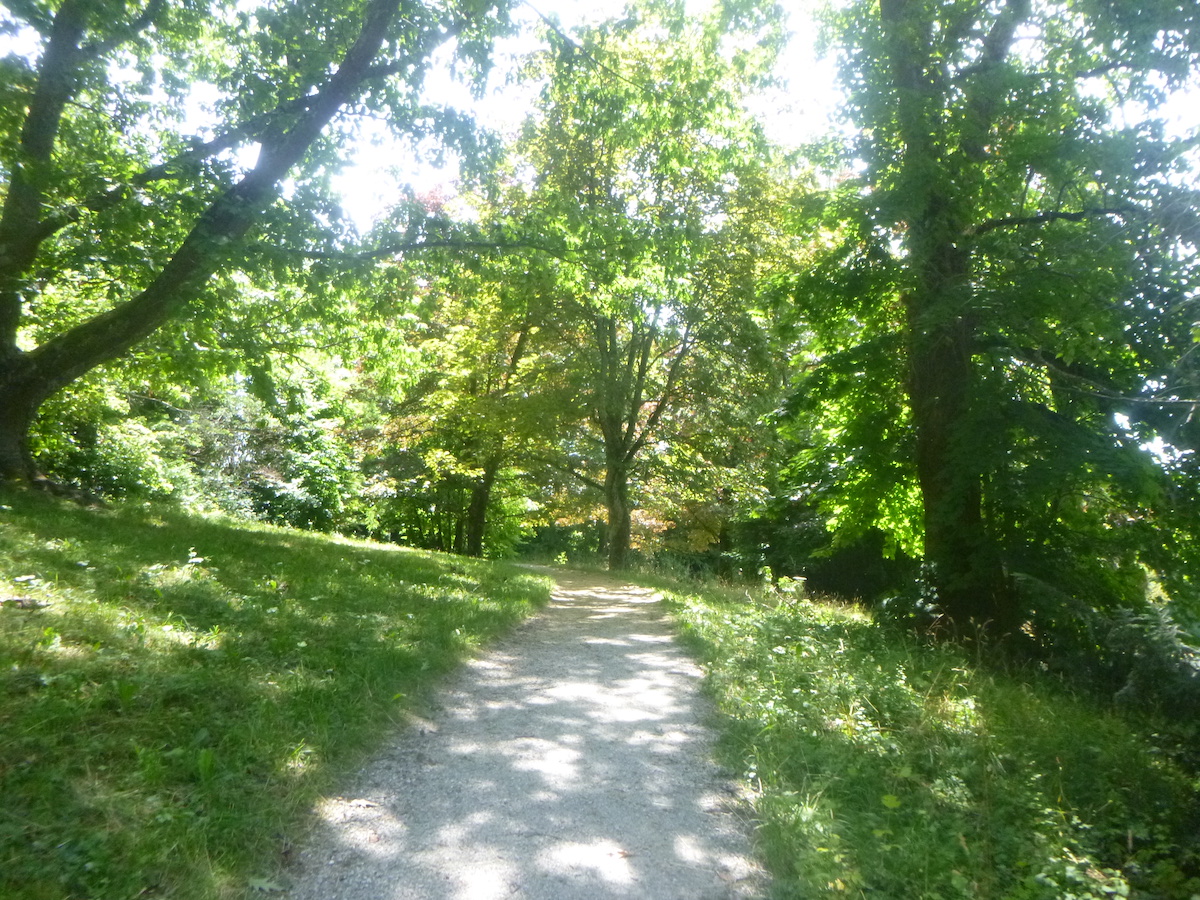 |
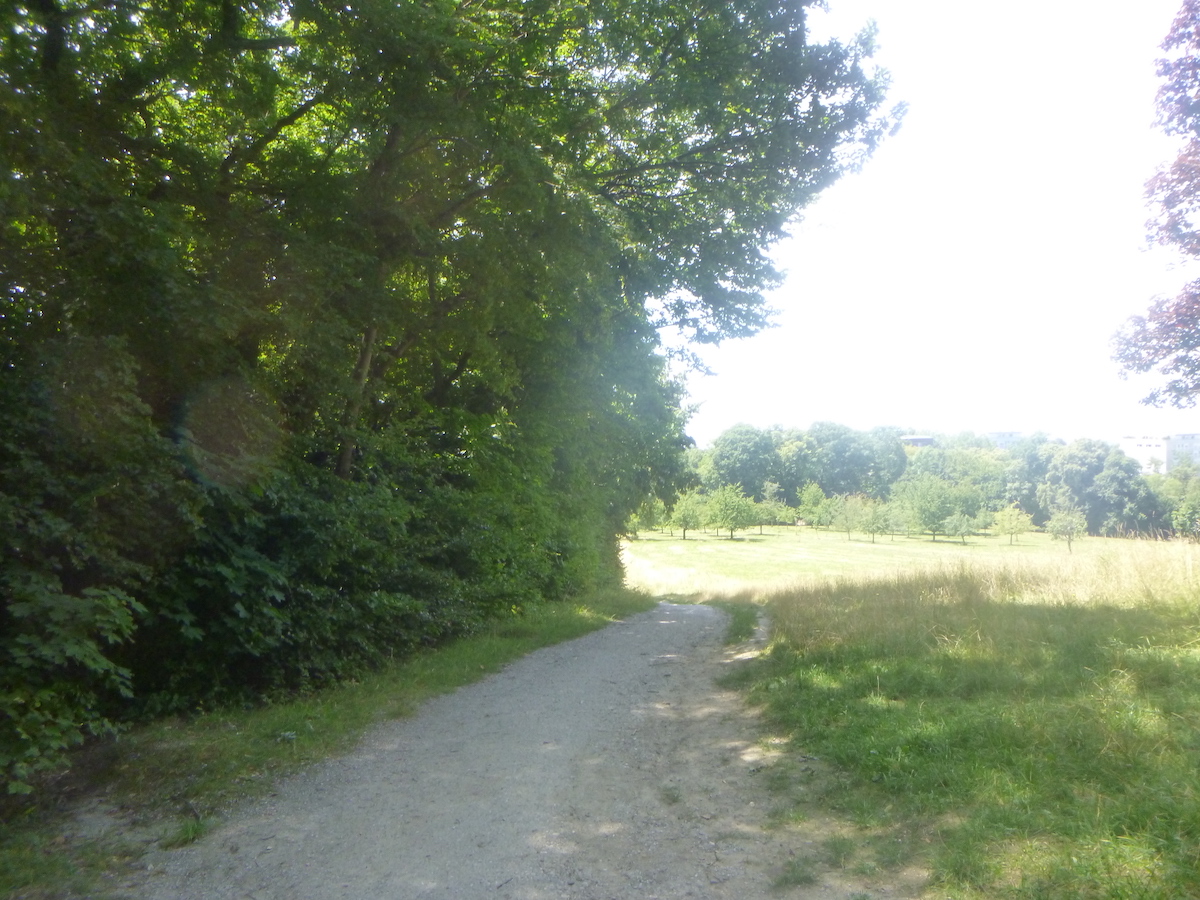 |
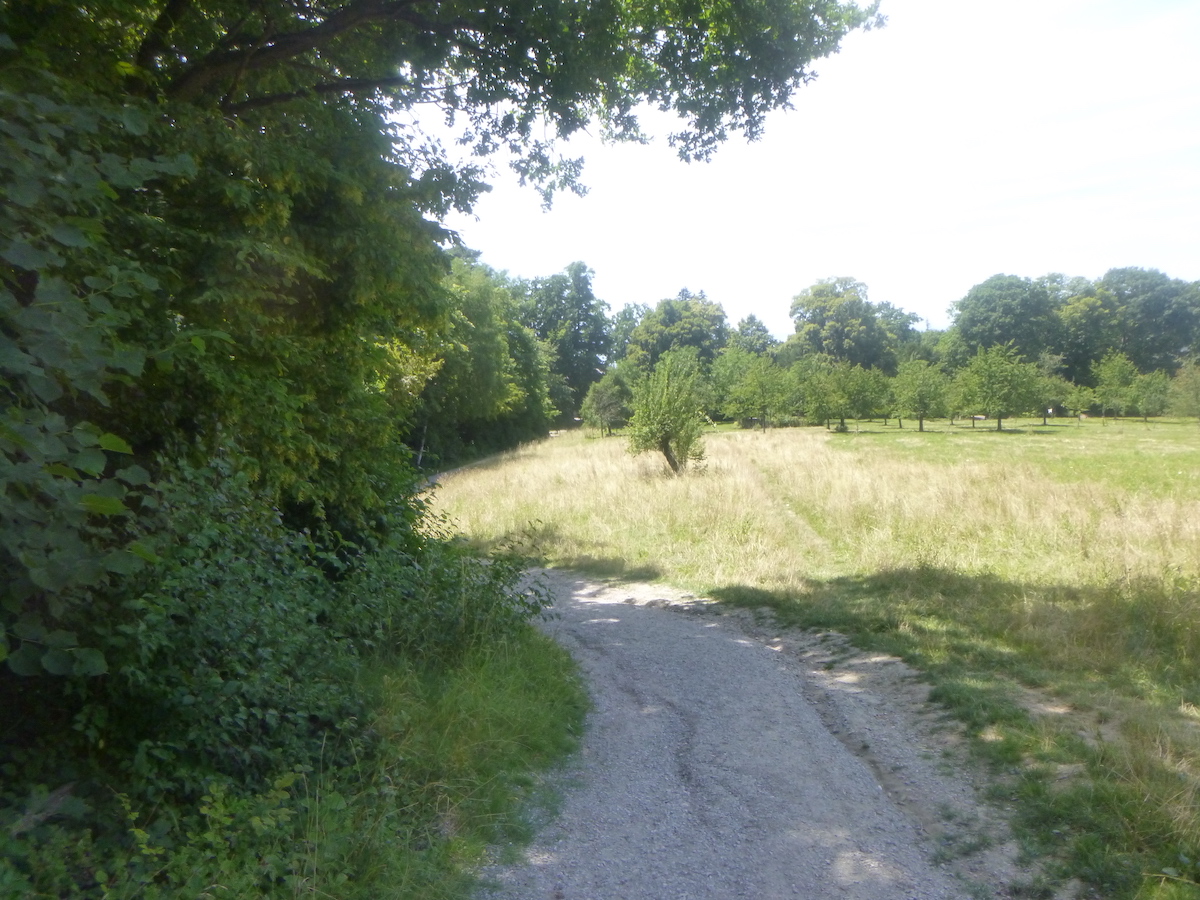 |
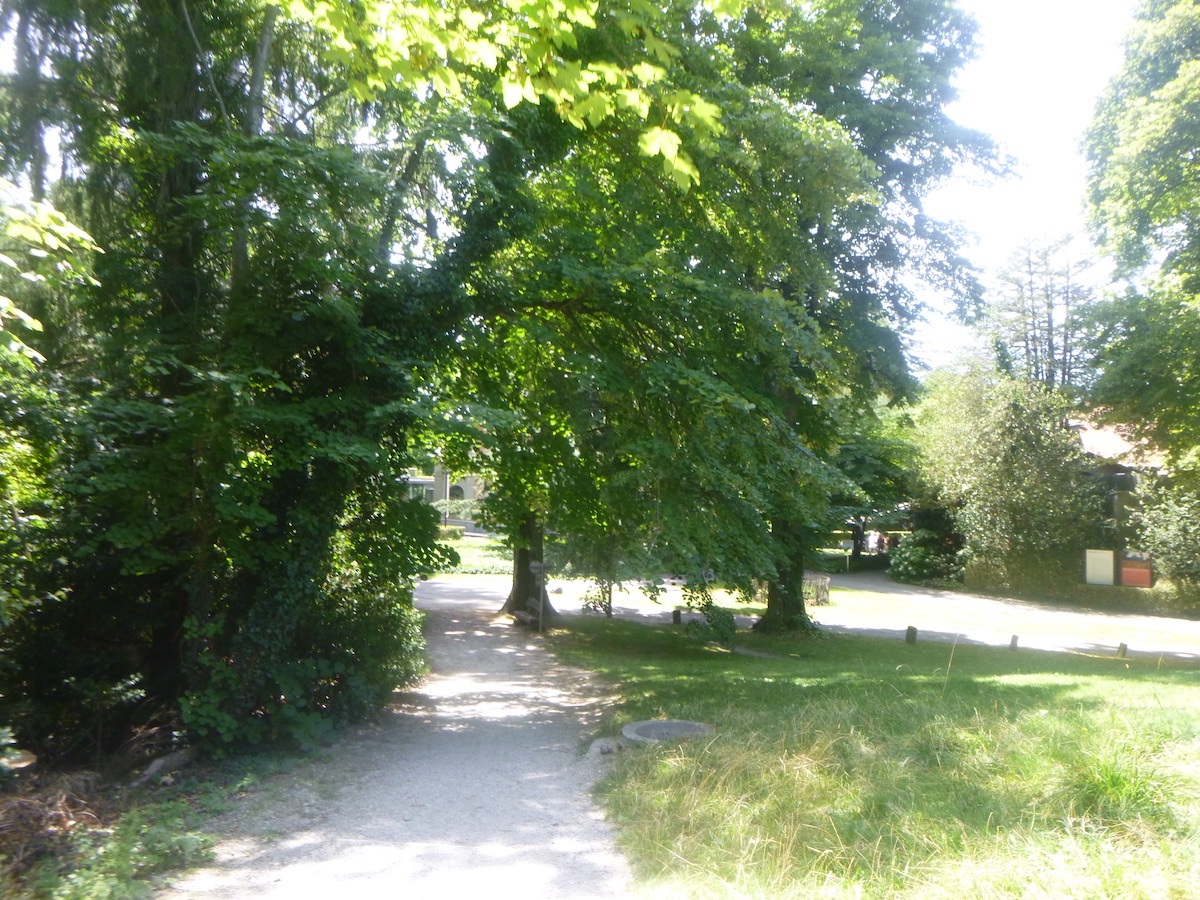 |
| The history of this magical place takes root in 1842, when the enlightened banker Charles-Juste Bugnion decided to acquire these rural lands to erect an exceptional residence. It was in 1976 that the City of Lausanne became the new guardian of this precious heritage, gradually transforming the estate into a public park accessible to all since 1985. But the renown of this park is not only due to its peaceful expanses. It is also due to the imposing presence of the Hermitage Foundation, established in Bugnion’s former residence. The Bugnion family, keen to perpetuate this legacy, ceded the central part of the estate to the City, in exchange for the creation of a public interest foundation. The house was then carefully restored, becoming the cradle of a museum opened in 1984. Since then, exhibitions, true cultural beacons, regularly illuminate these exceptional places. |
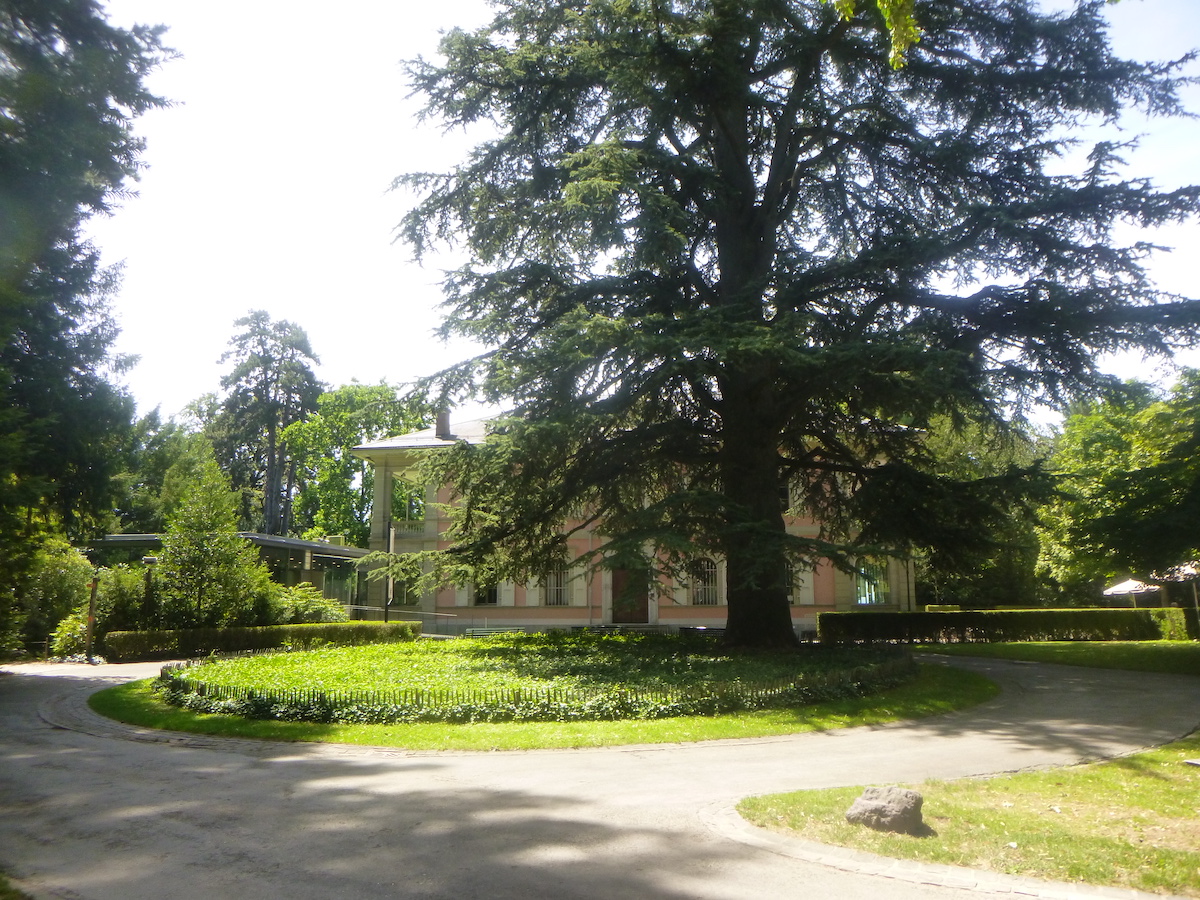 |
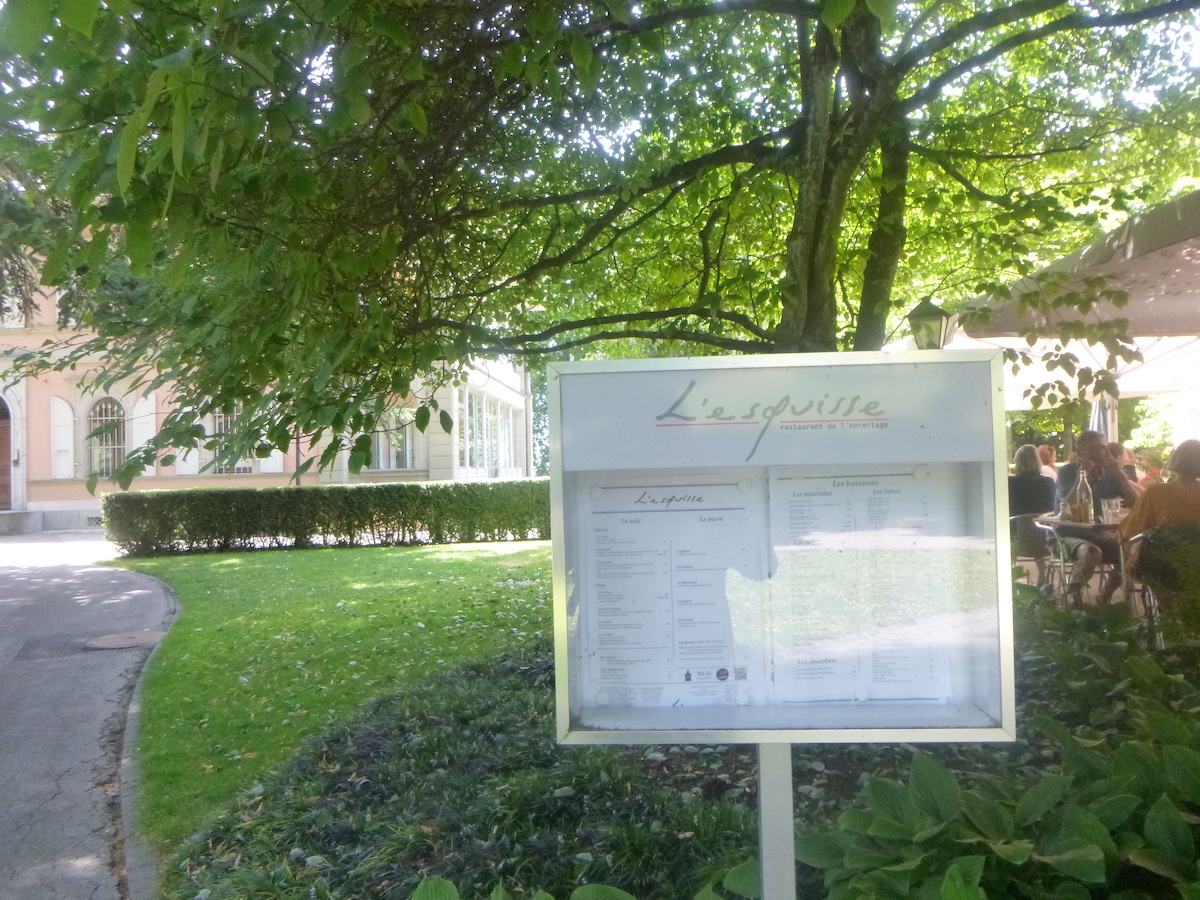 |
 |
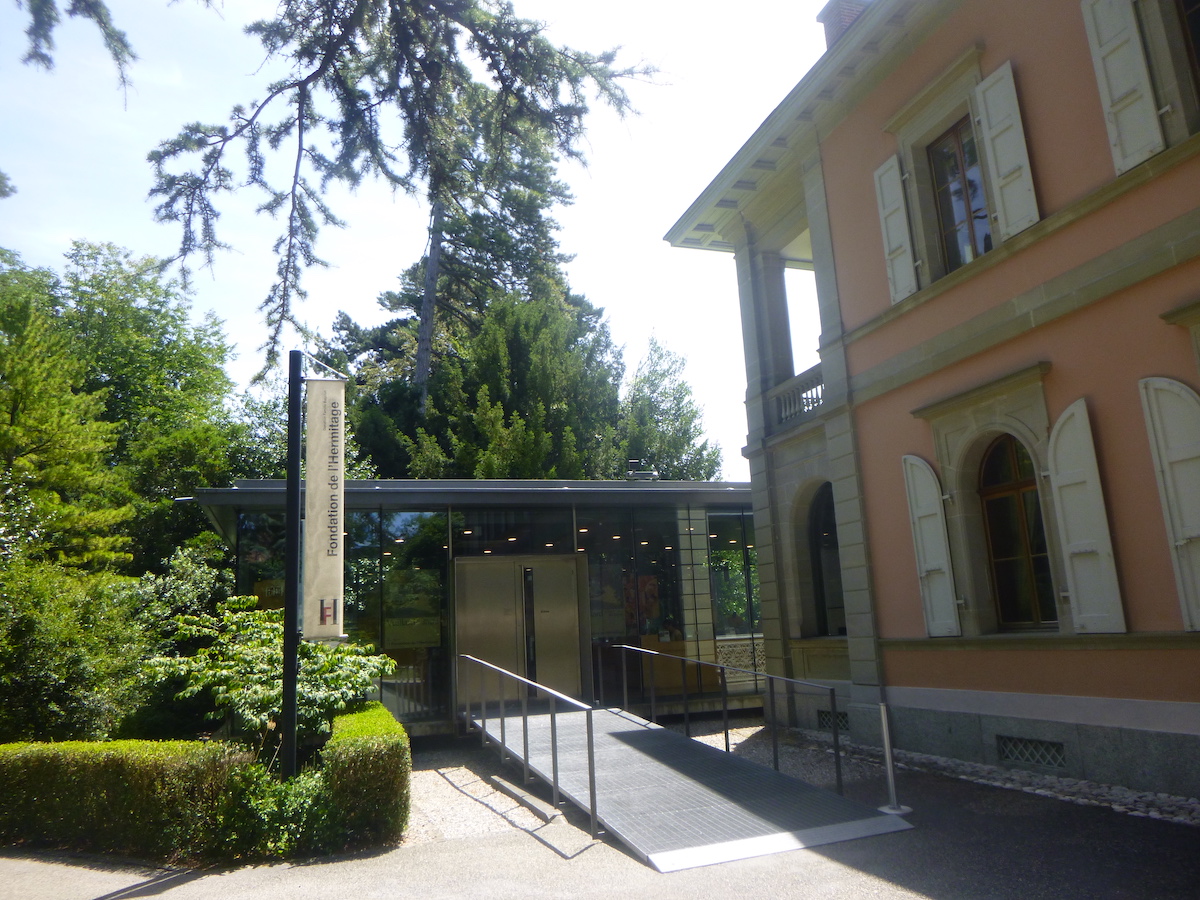 |
| From the Hermitage, a barely perceptible trail descends, like a whispered lament from the dark undergrowth. The air is filled with mystery, where every beam of light tries to pierce the thick veil of ancient trees. |
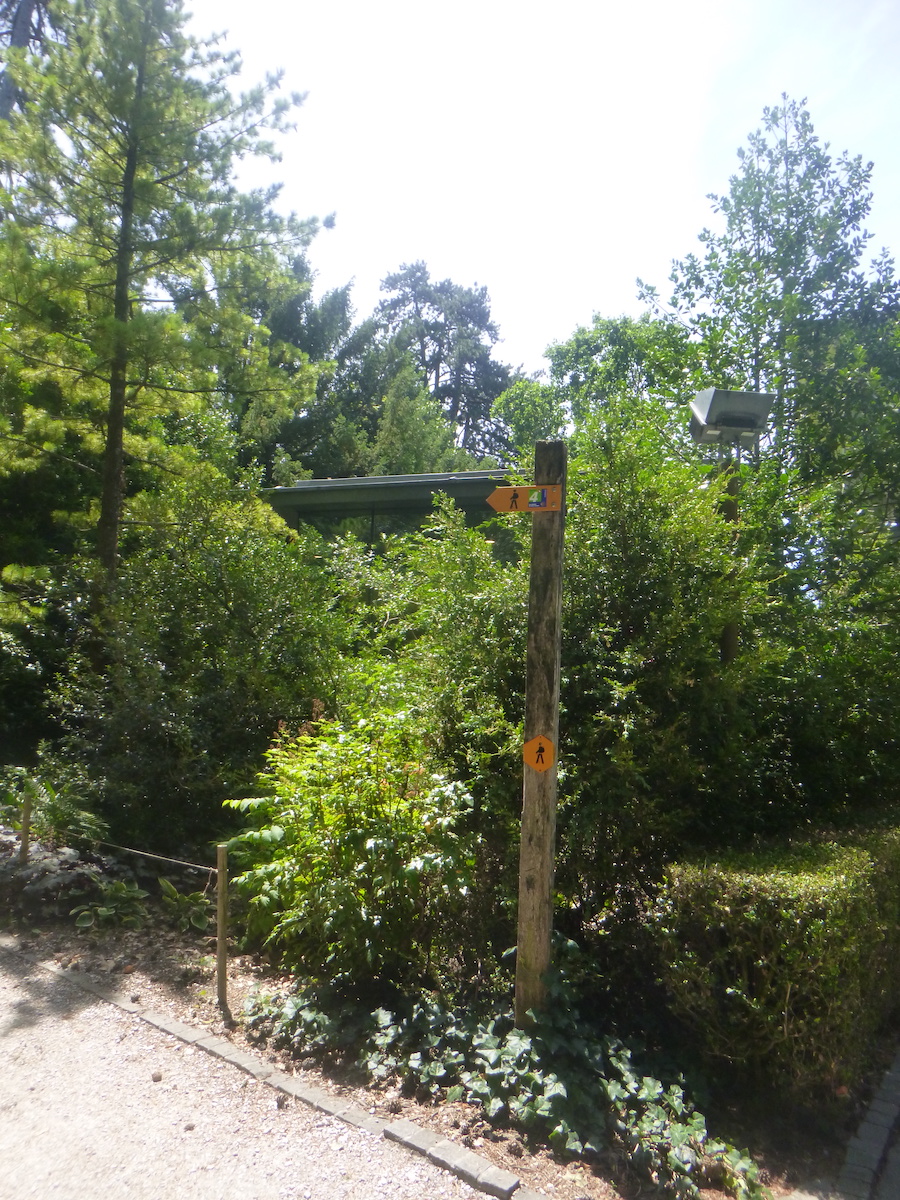 |
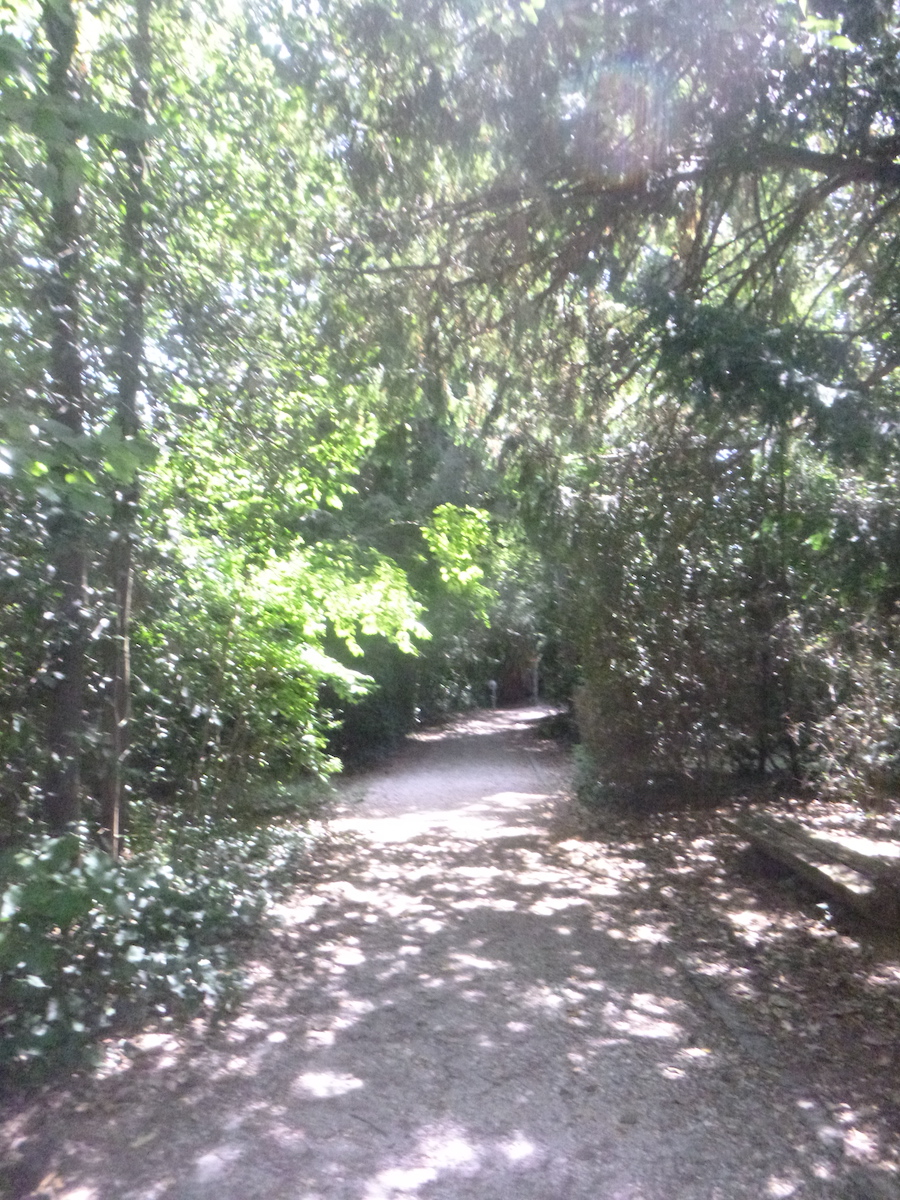 |
| In a sudden clearing, the majestic silhouette of the cathedral emerges, like a beacon rising from the ocean of green trees. |
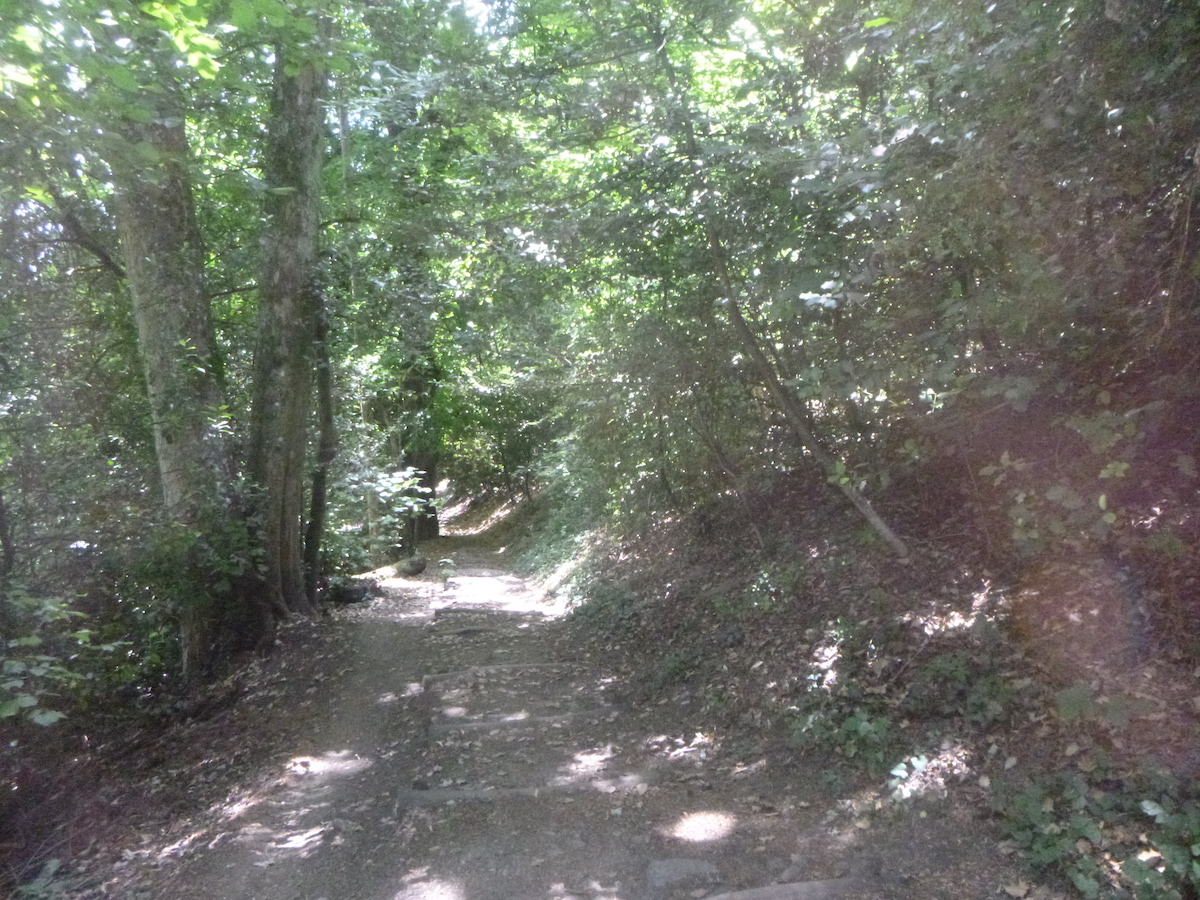 |
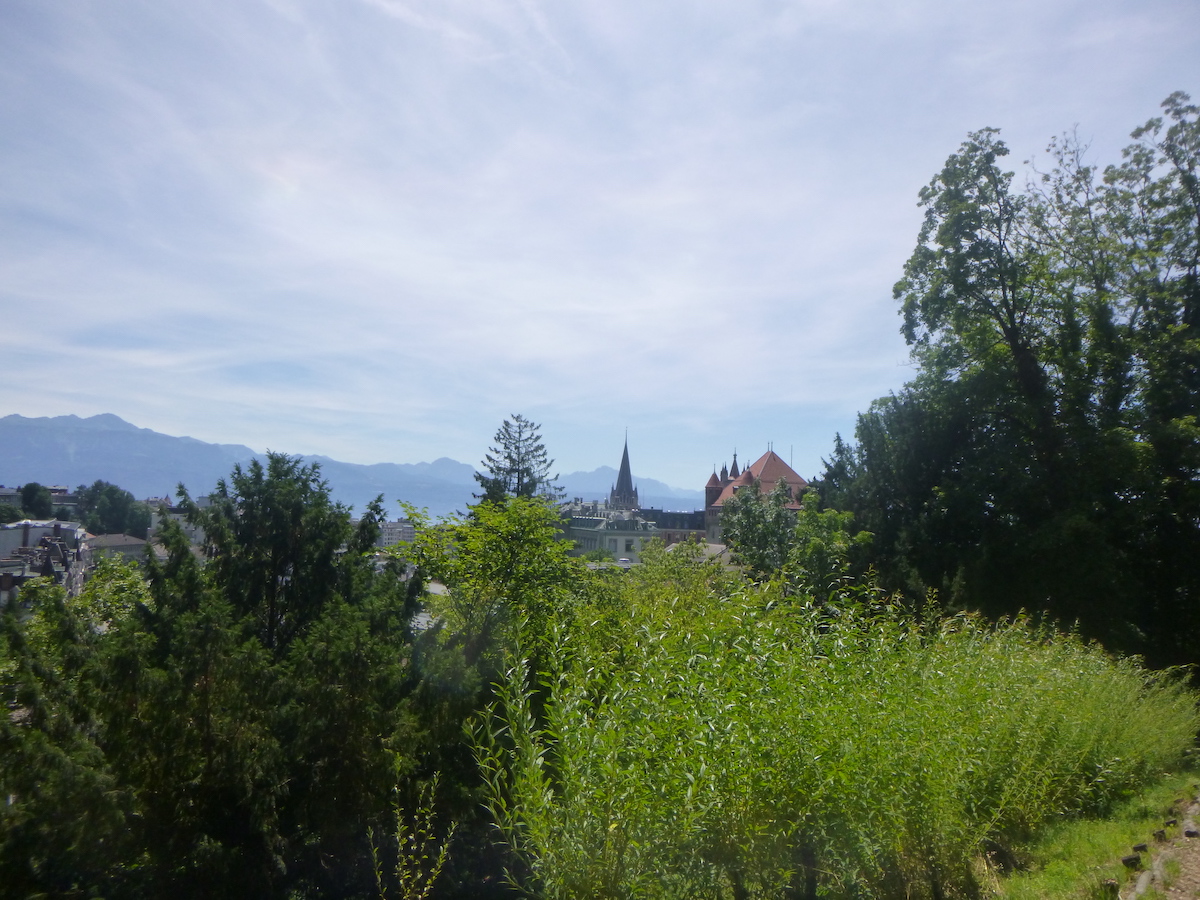 |
| Continuing their journey, the walkers delve further into the maze of forest paths, surrendering to the whimsical twists and turns of the trail. Sometimes, they bypass imposing tree trunks, or lean on old logs worn by time to negotiate the steep slope of the path. |
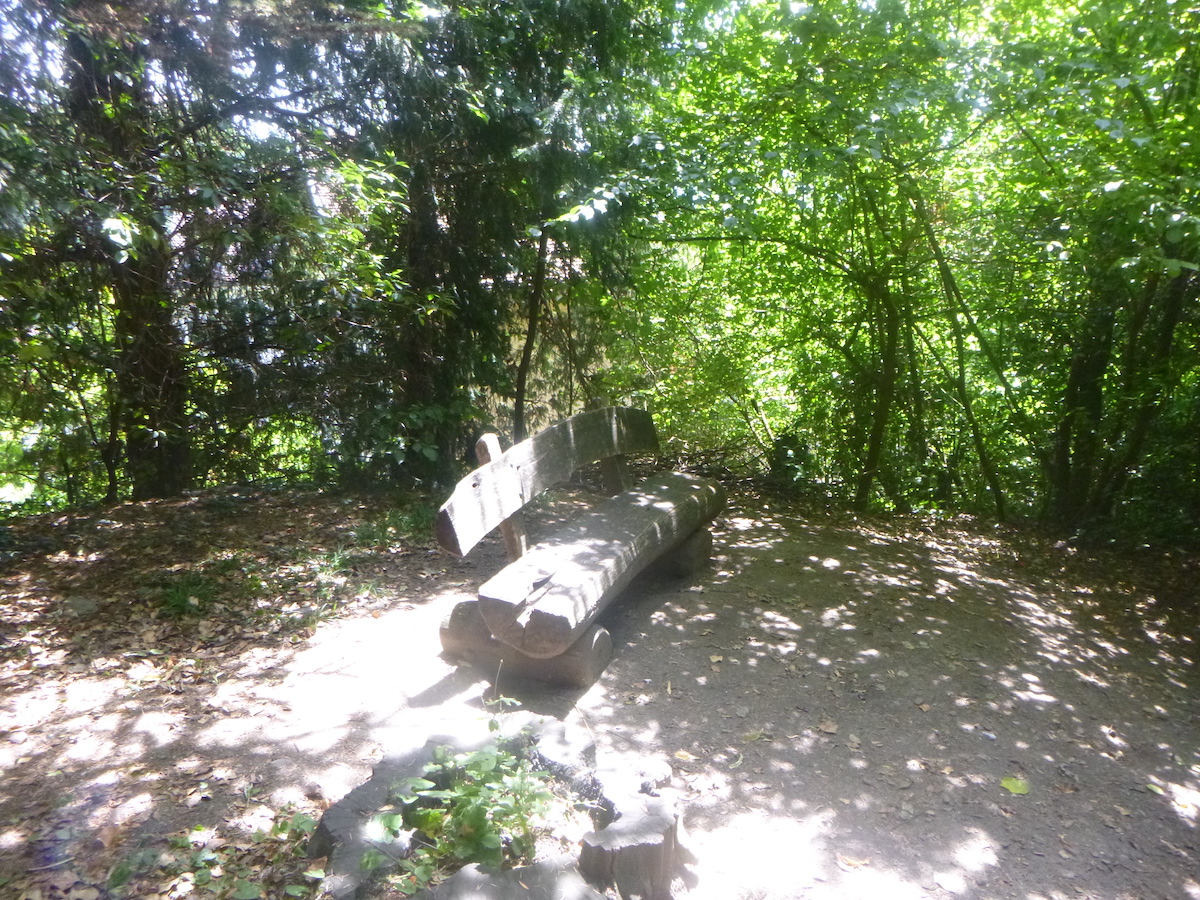 |
 |
| Descending still, the path reveals its secrets to the La Barre district, where the alleys whisper of dormant legends. Nearby, the cathedral stands proudly, an immutable witness to the passage of centuries and human stories. |
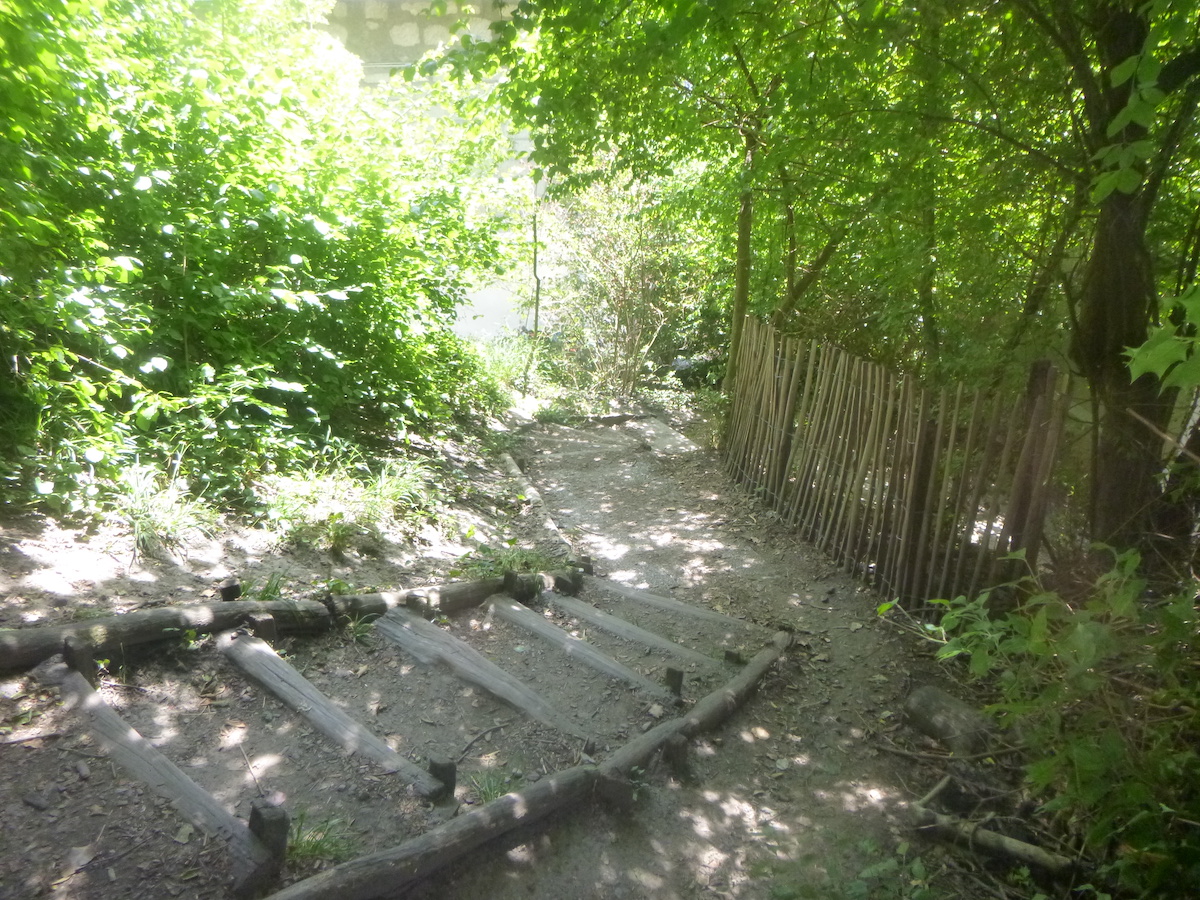 |
 |
Section 2: Brief visit of the historic center.
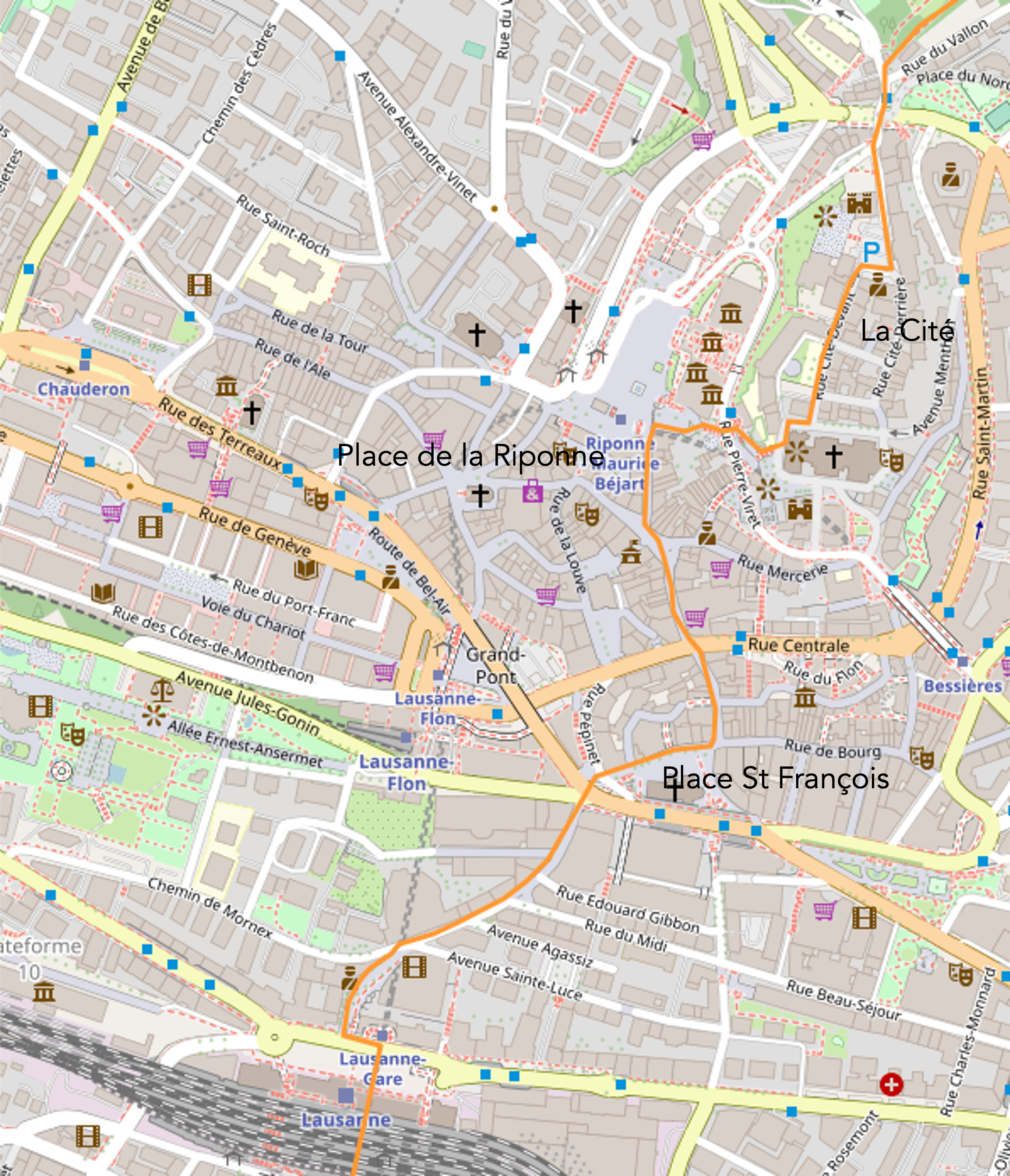
| Just nearby majestically extends what the inhabitants of Lausanne call La Cité, a maze of small winding streets intertwined around the castle and the cathedral. The Saint-Maire castle, perched atop the rocky promontory, stands like an age-old guardian of history. Built in molasse in the heart of La Cité in the Middle Ages, this bastion was erected offering a strategic position to build a fortress overseeing the city to the south and protecting its northern flank. Once adorned with a keep in the 12th century and several walls, adorned with drawbridges, this testimony of the past has long since given way to the Château, now invested with an administrative vocation, housing the seat of the State Council of the canton of Vaud. |
 |
 |
Opposite the castle proudly stands a memorial dedicated to Major Davel. This valiant Vaudois patriot dared, at the beginning of the 18th century, to defy Bernese oppression to liberate his beloved country of Vaud. Betrayed by his own, he breathed his last, his head falling under the inexorable axe at Vidy, near the shores of the lake. This epic saga, as rich in bravery as in tragedy, may seem distant to the ears of Asian visitors or anyone unfamiliar with local history. Because Lausanne, despite its charms, does not occupy the forefront of Swiss tourism.
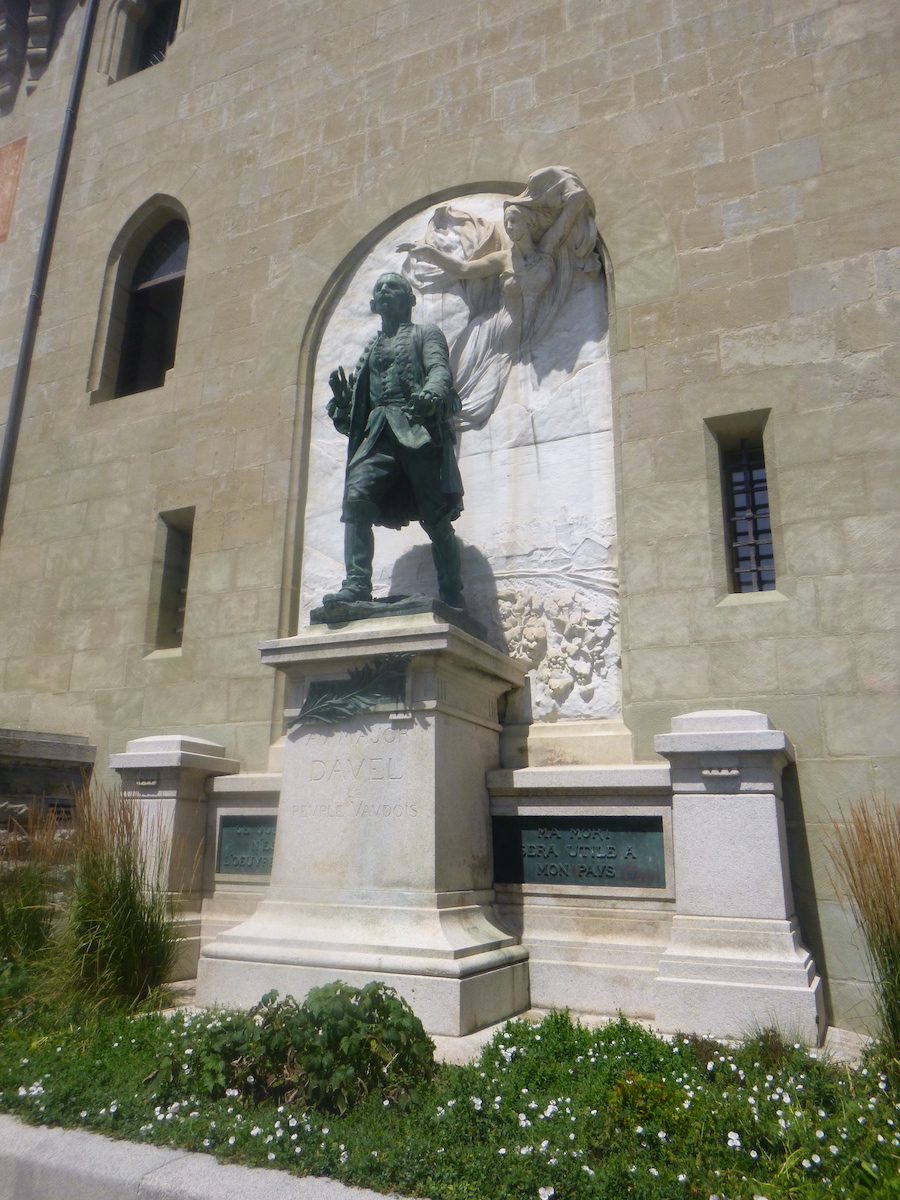
| From the ordinary Place du Château, Rue Cité Devant gracefully unfolds towards the cathedral. All along this artery, imposing Haussmannian buildings rise, robust witnesses of a bygone era, most of them now housing the administrative machinery of the canton. |
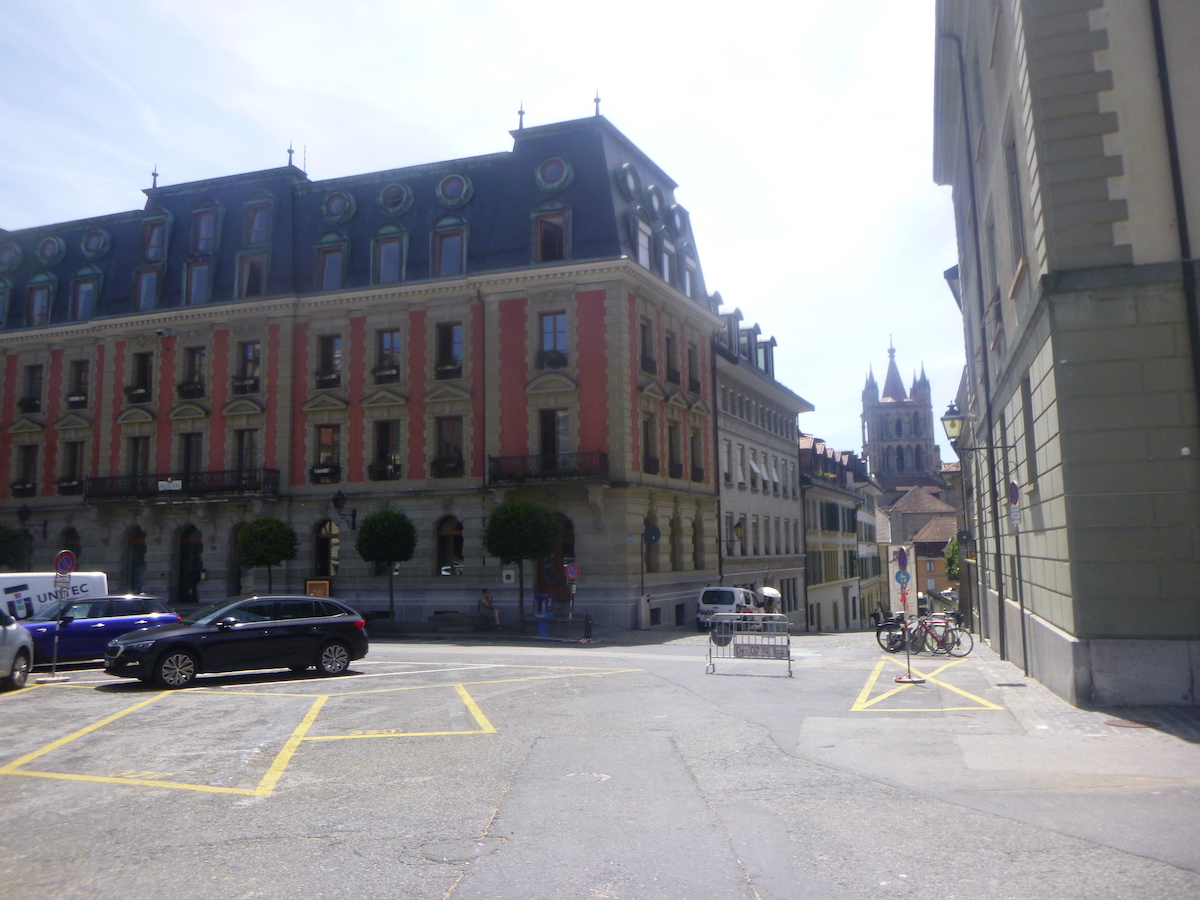 |
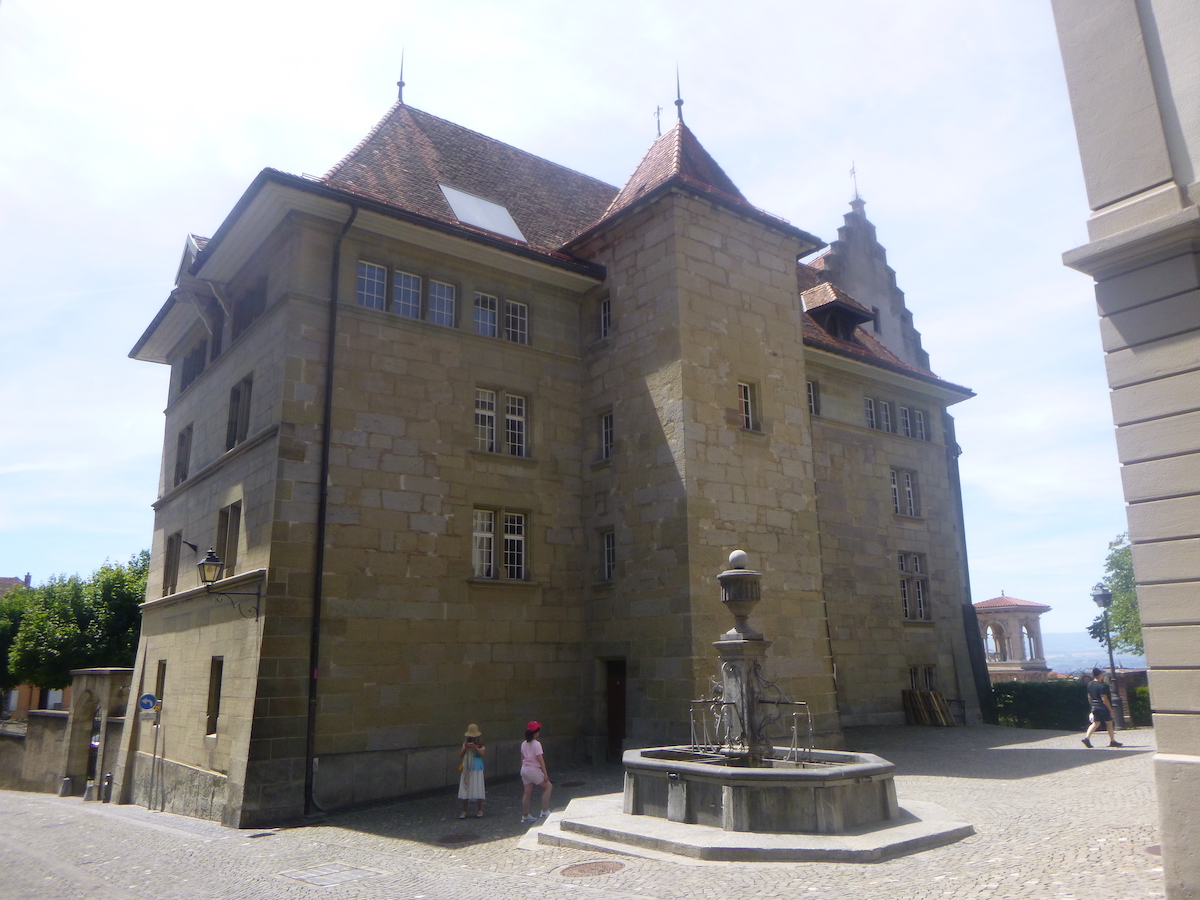 |
| But La Cité is not limited to its administrations and educational institutions. It also offers its charms to a handful of privileged people who choose to reside in its narrow-cobbled lanes. These lucky residents are the guardians of Lausanne’s very soul, imbuing every stone with the living history of the city. |
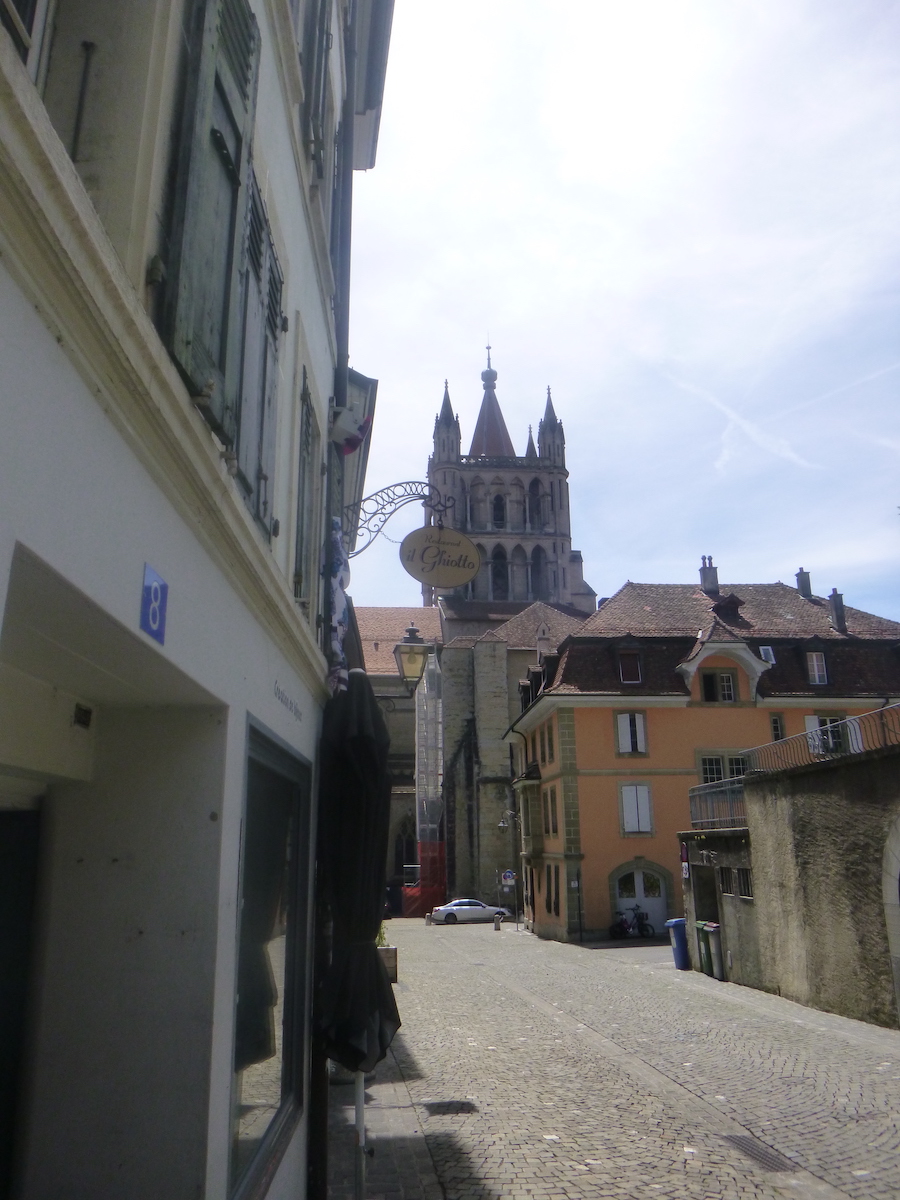 |
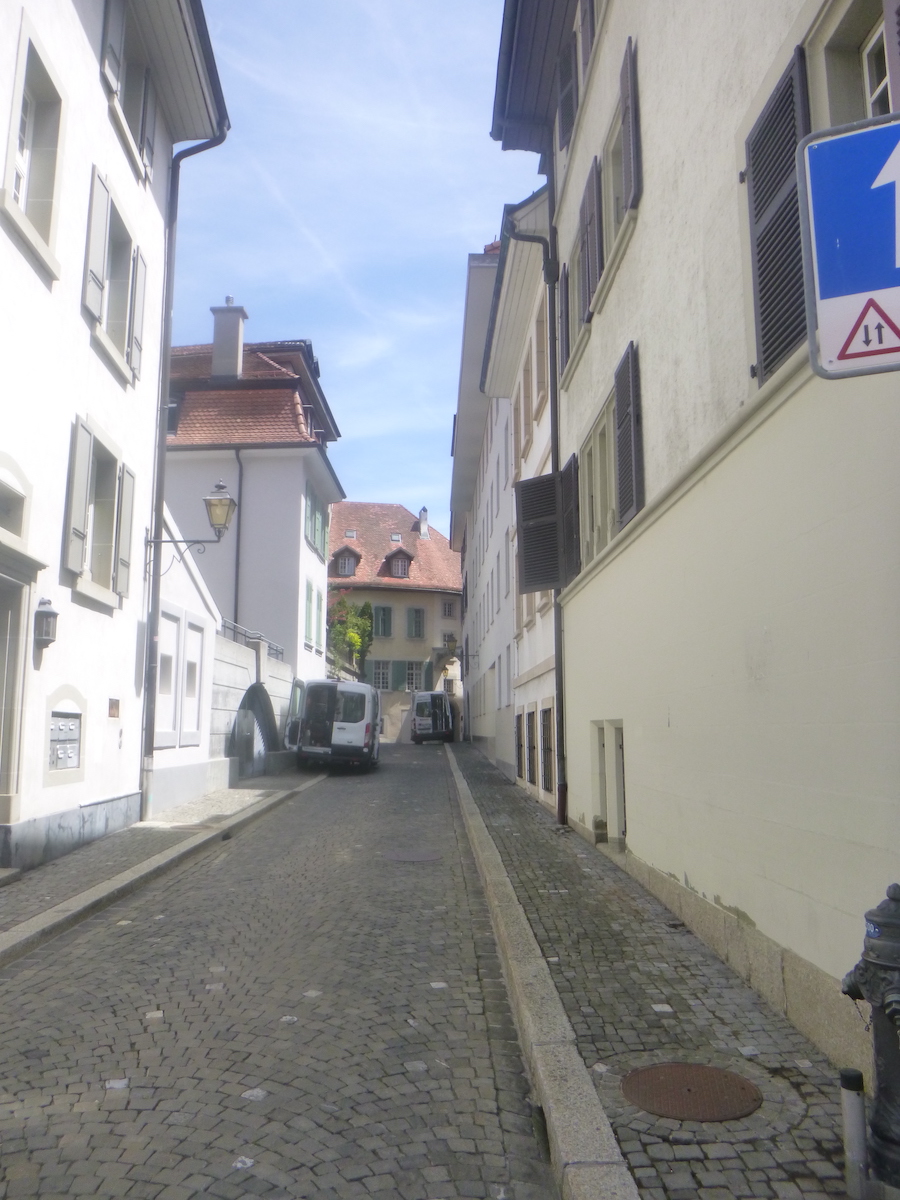 |
| The majestic Notre-Dame cathedral, built in the soft molasse sandstone, bears witness to the grandeur of Gothic art since the late 12th century. Witness to the evolution of beliefs, the church embraced the Protestant faith during the Reformation in the 16th century, remaining faithful to this tradition since 1536. In this house of worship, sobriety reigns, without flamboyant altars or ostentatious frescoes adorning its walls. But its friable material condemns it to perpetual restoration, an eternal dialogue with time, punctuated by sporadic renovations, like pauses in the symphony of centuries. |
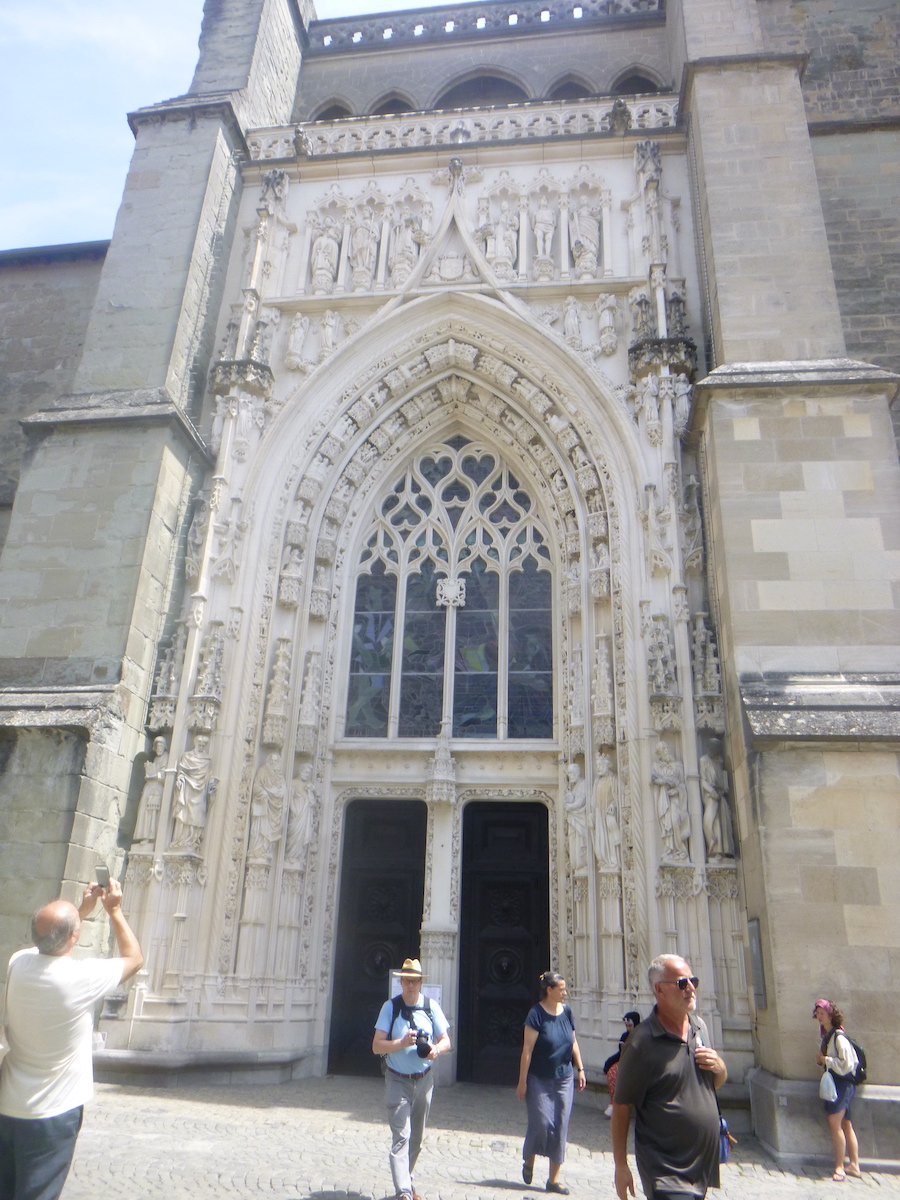 |
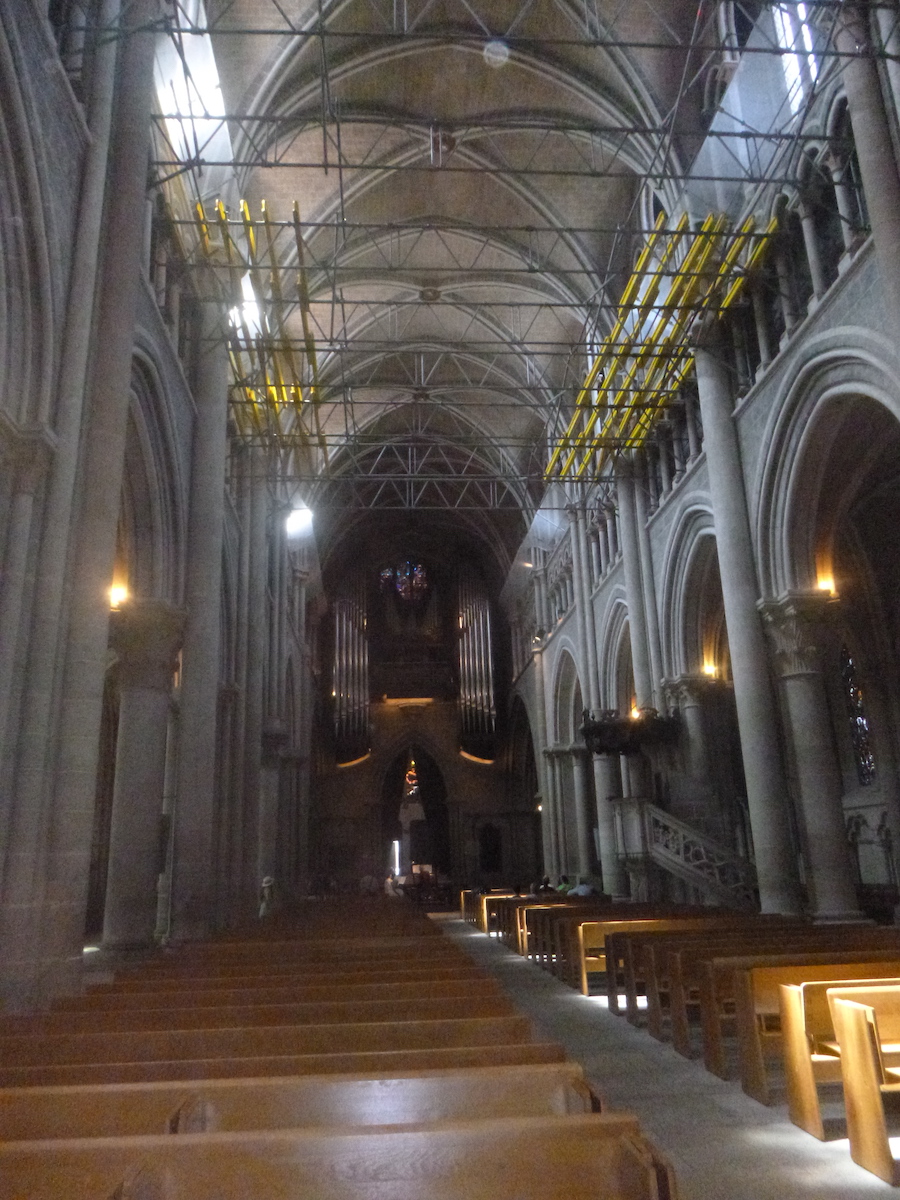 |
| From the majestic esplanade of the cathedral, a breathtaking panorama unfolds, offering an unobstructed view of the old town slumbering below and the lake. |
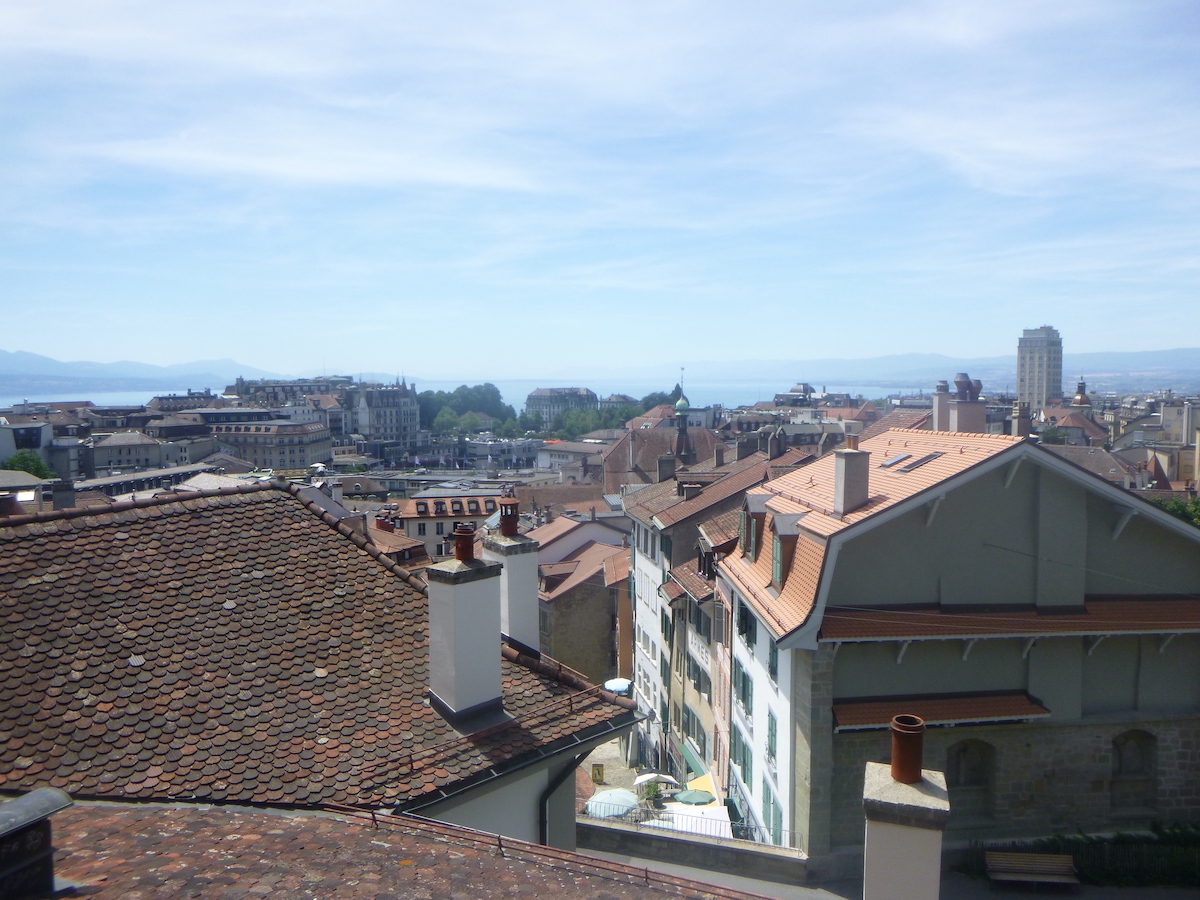 |
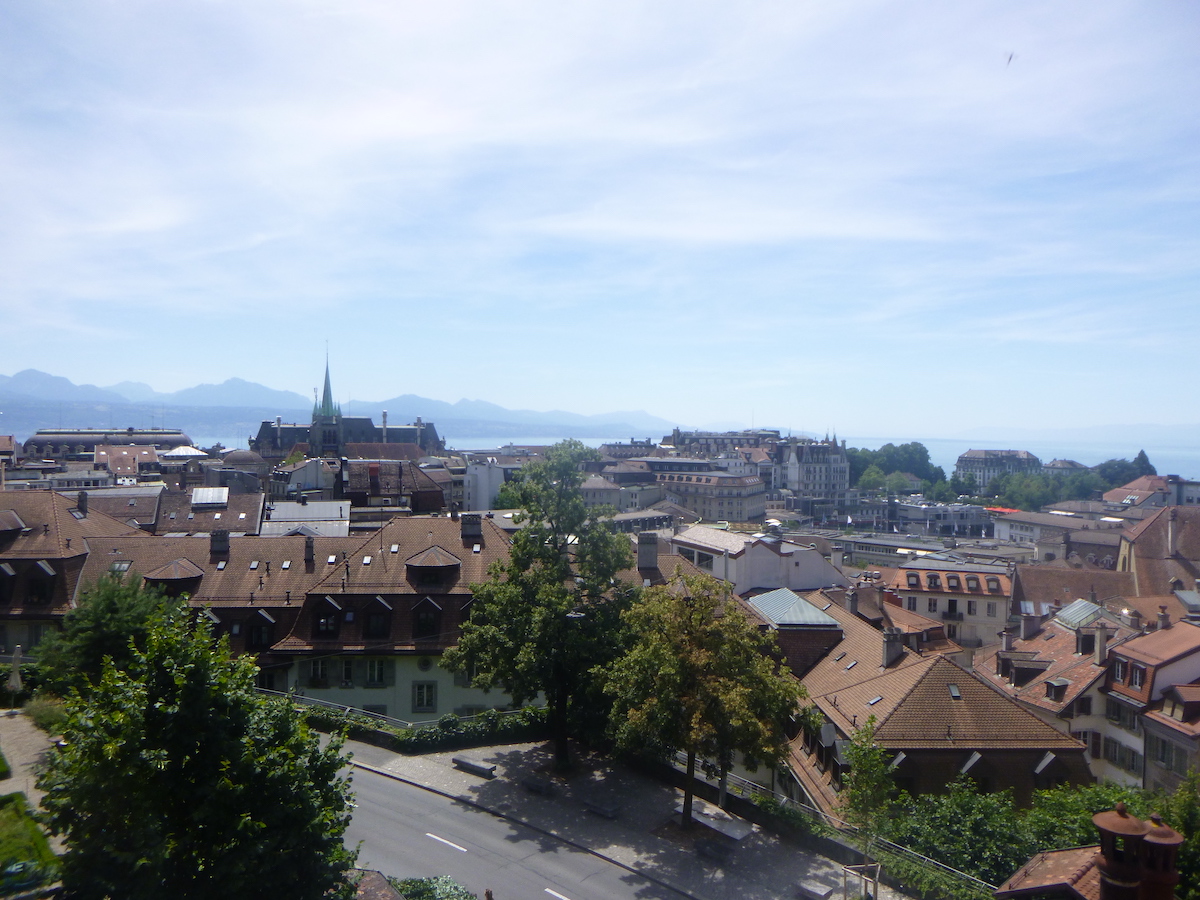 |
| Gracefully descending the wooden stairs winding through the hills, the traveler delves into the enchanting mazes of the old town, where every stone tells a story, where every alley resonates with echoes of a glorious past. The atmosphere, charged with authenticity and charm, transports the mind to a bygone era, while the enticing aromas of outdoor cafes tantalize the senses. It is here, in the heart of these timeless alleys, that the very essence of Lausanne resides, capturing the hearts of those who dare to venture forth, |
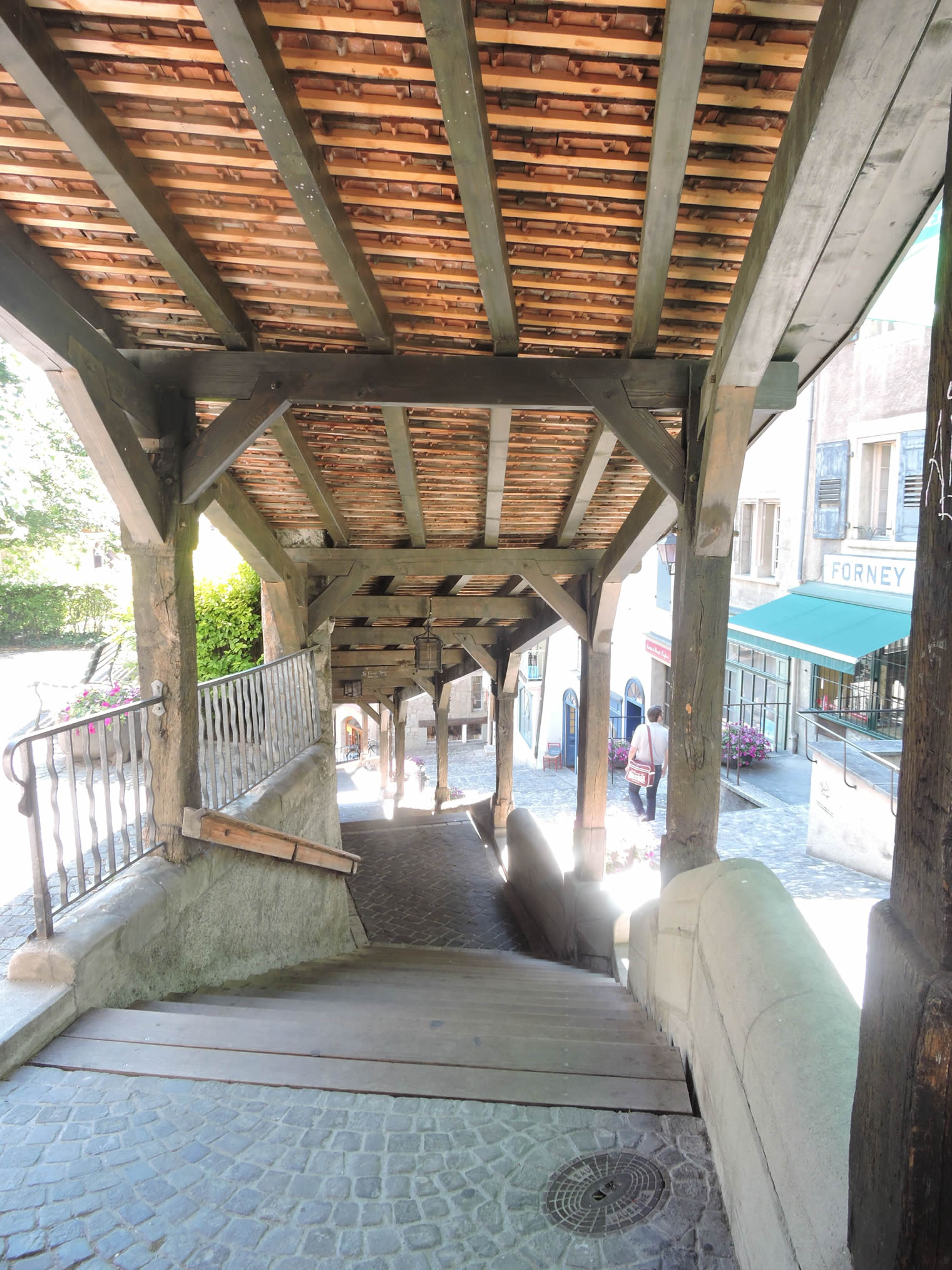 |
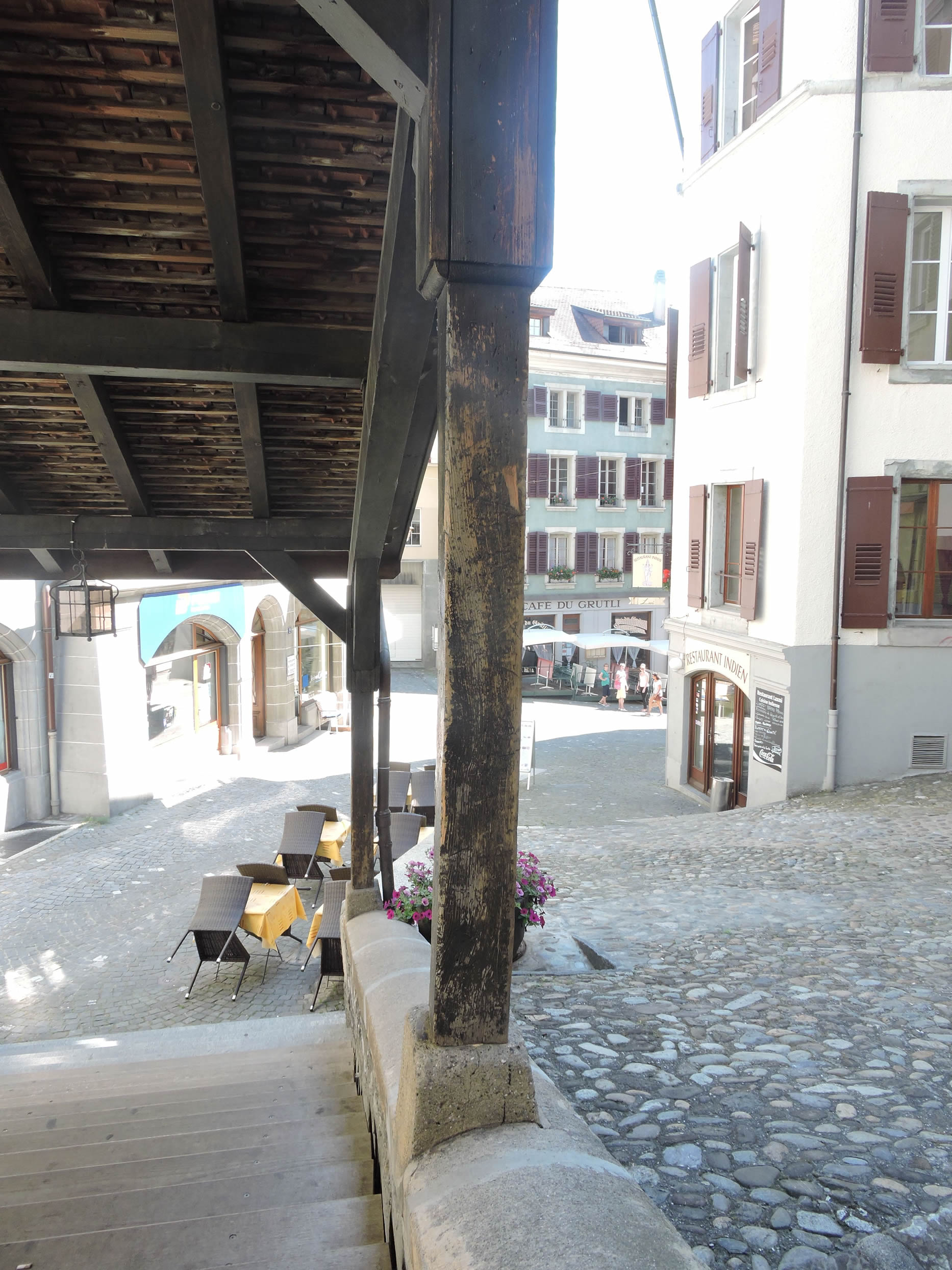 |
| At the foot of the stairs lie a few peaceful squares, bathed in the benevolent shade of ancient trees, where modest outdoor cafes nestle, silent witnesses to the incessant flow of urban life, overlooking Place de la Riponne. |
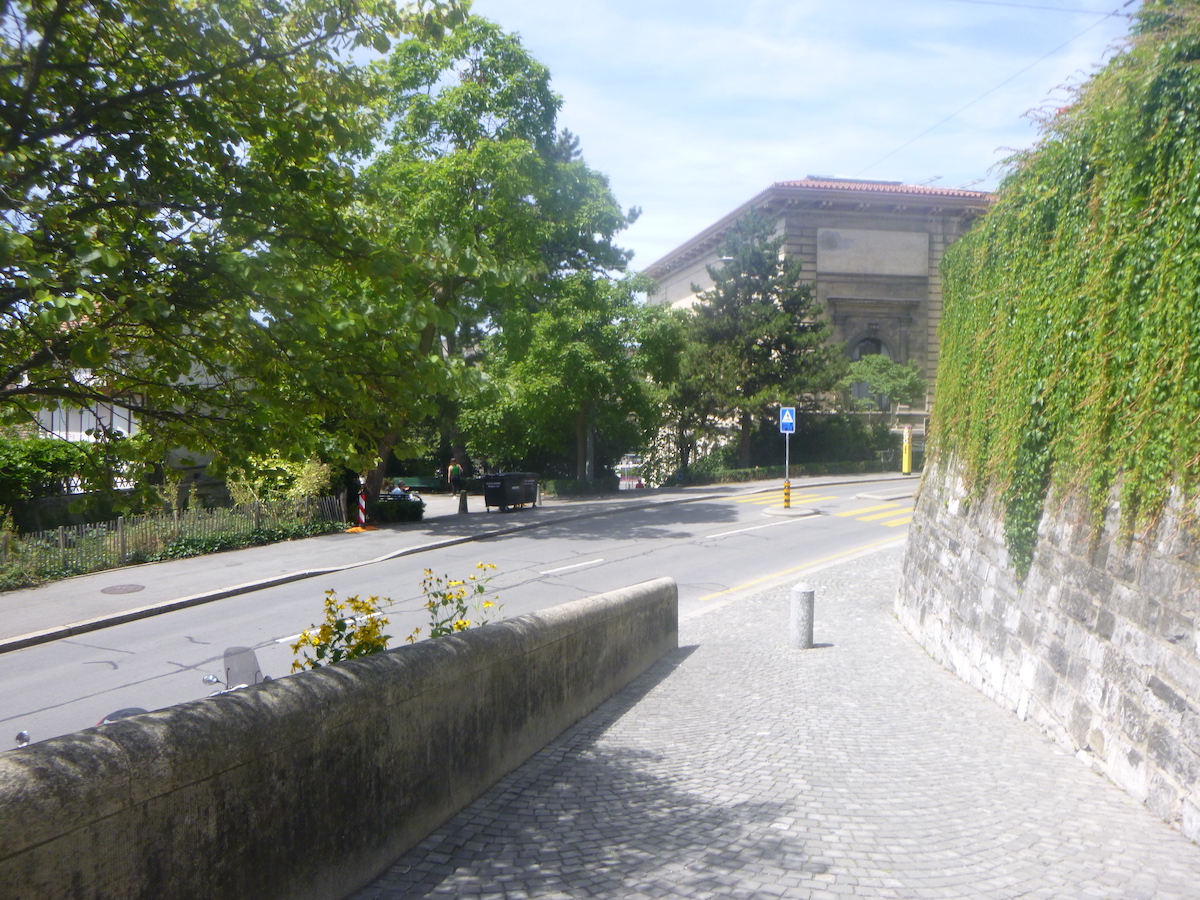 |
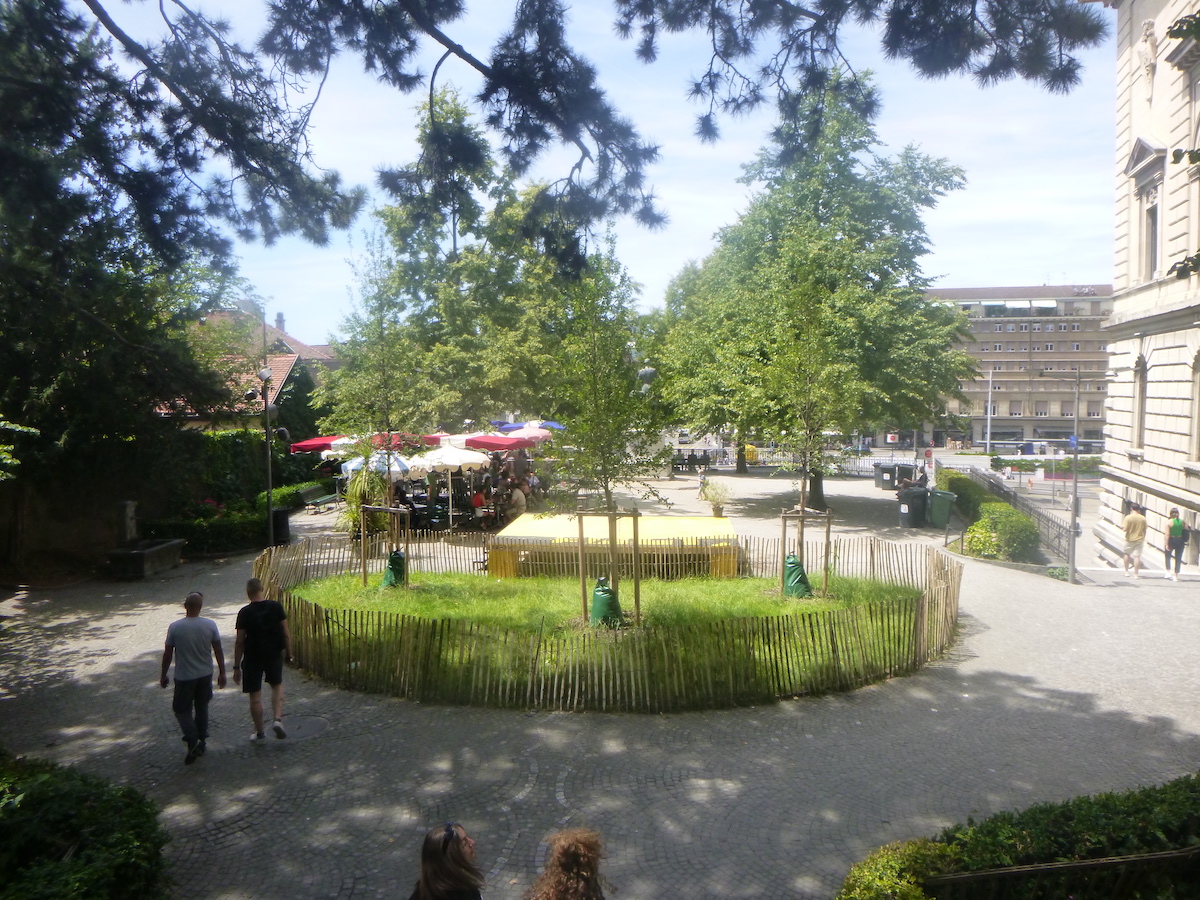 |
| Place de la Riponne, far from elegant, dates back to 1838, built on the small valley of the Louve that once flowed here, a place that was then located outside the city walls. The Rumine Palace was completed in 1904, which became a large part of the University. The University has now moved to a large campus near the lake. The square is pedestrianized, with a large underground car park. The outdoor market takes place every Wednesday and Saturday, on the square and adjacent streets. |
 |
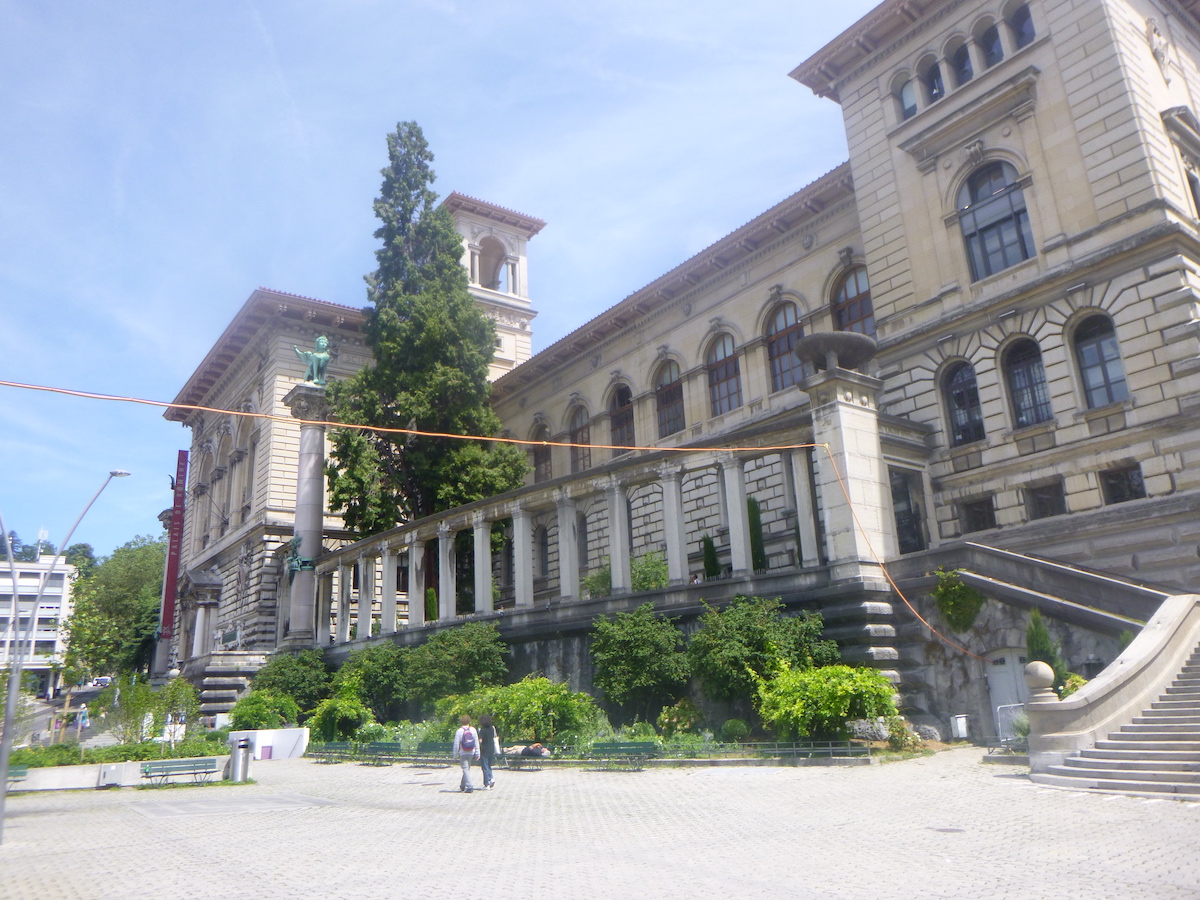 |
| Descending the cobbled street of La Madeleine, the traveler is guided by the intoxicating scents of colorful stalls, plunging into the heart of urban bustle. At the turn of each shop window, Lausanne’s trading spirit, vibrant and authentic, is revealed. It is here, at the crossroads, that the majestic Place de la Palud stands, the true epicenter of the old town, where history and daily life intertwine in perfect balance. |
 |
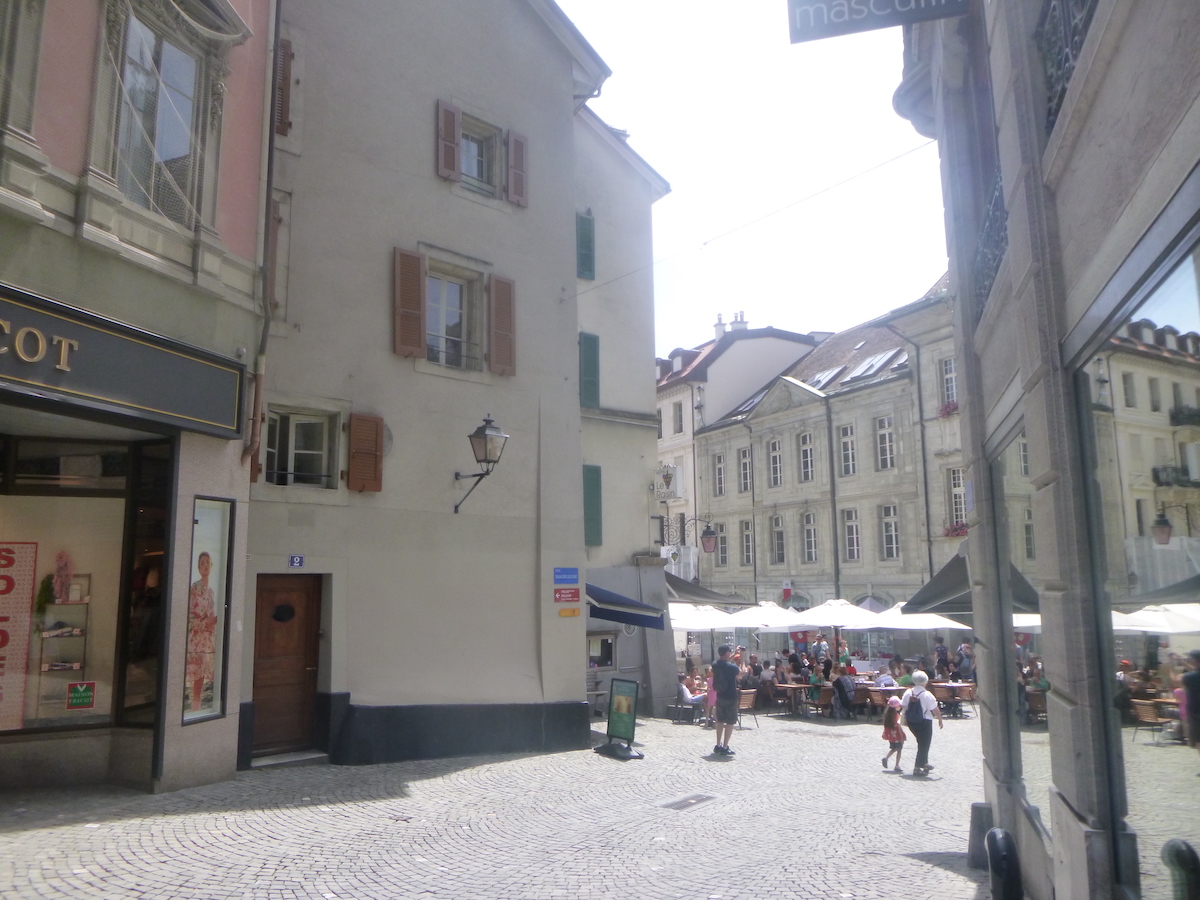 |
| At the heart of the old town, Place de la Palud is the city’s administrative center. |
 |
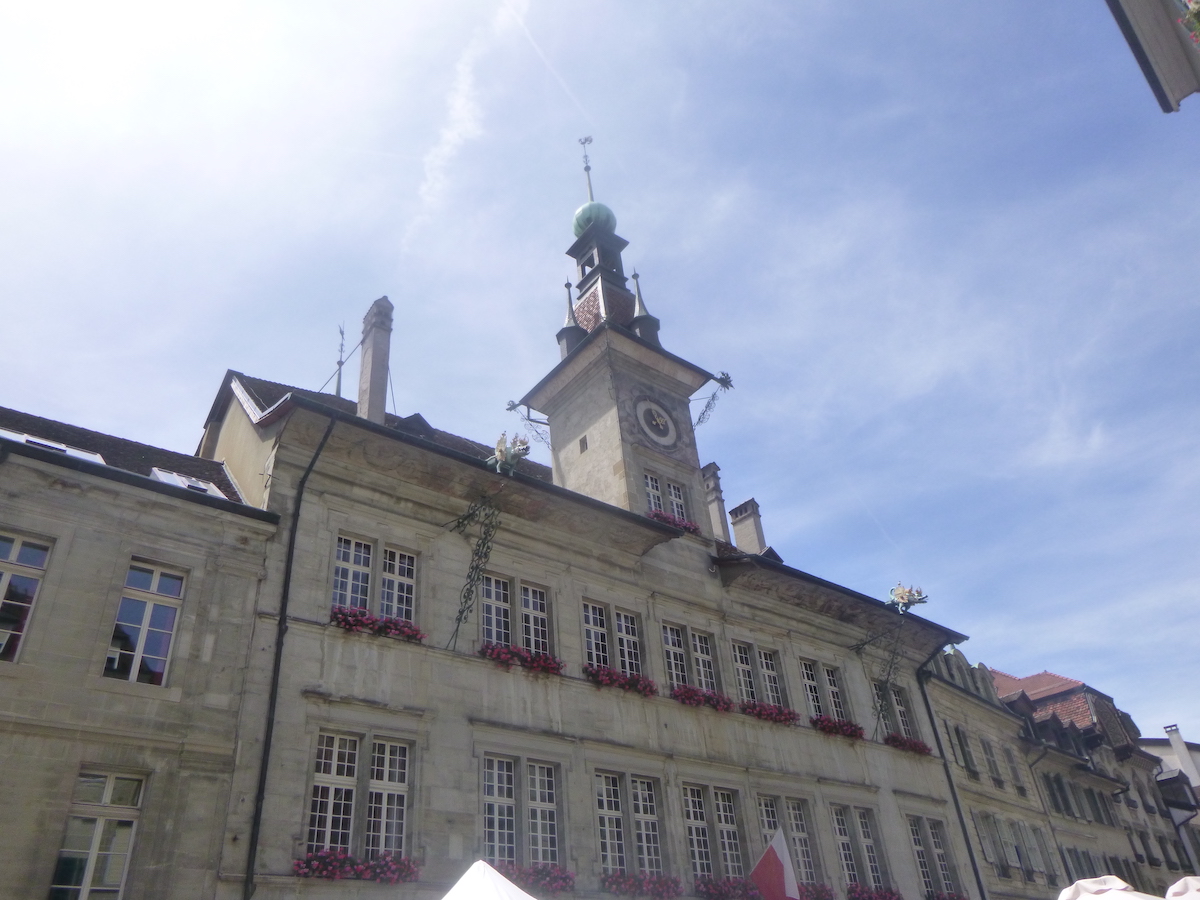 |
Dominated by the majestic Fountain of Justice, an immutable symbol of the city’s past grandeur, this historic square embodies the very essence of Lausanne life. In its surroundings, picturesque alleys invite strolling, offering a peaceful refuge away from urban hustle and bustle. Just a few steps away, department stores open their doors.
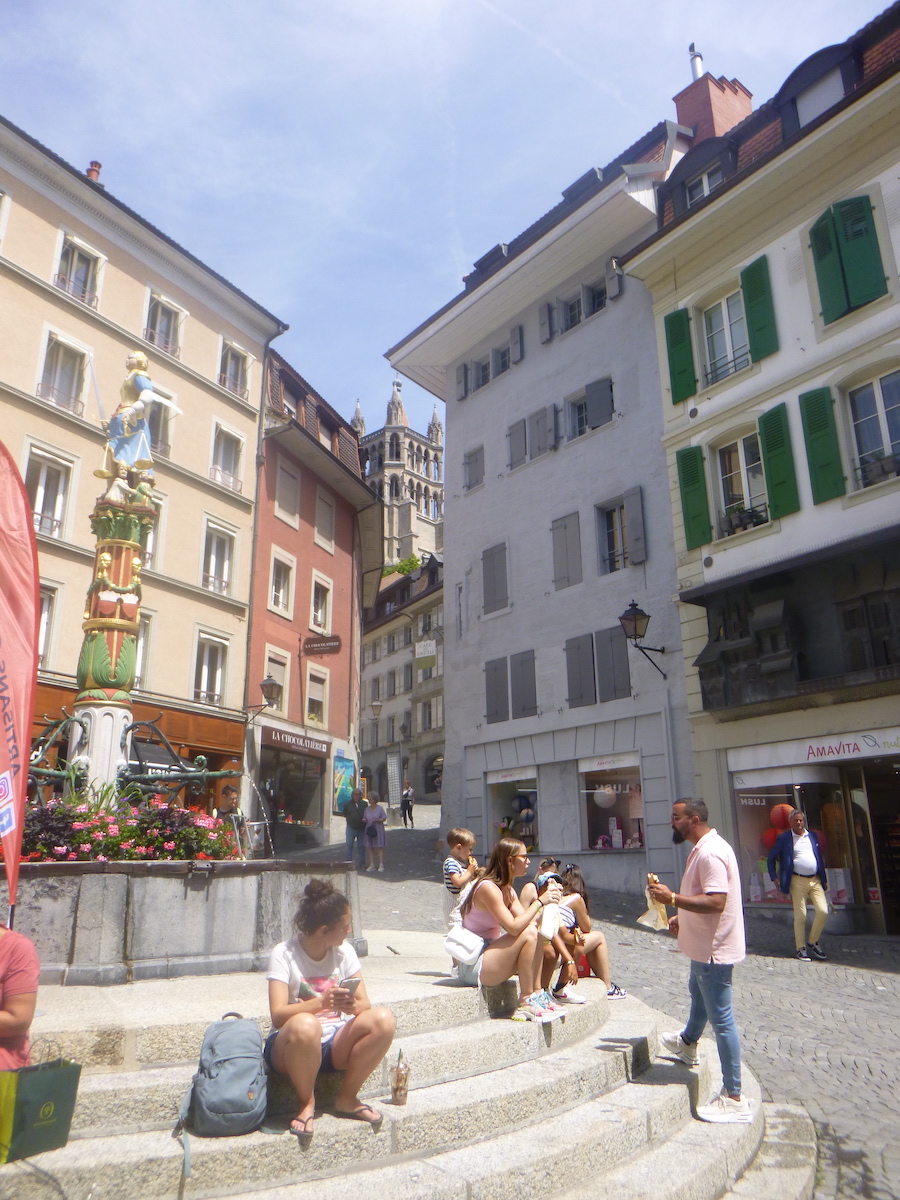
| In the streets of Lausanne, each path seems to bend with the city’s topography. Especially in the center, where the streets stretch in uphill and downhill directions. Imagine yourself at Place de la Palud, wanting to reach the train station. You start by going down Rue du Pont, then you climb the steep slope of Rue St François. Once up there, you still have to go down further, this time through Rue du Petit-Chêne, a descent that tests the endurance of your legs. It’s a journey that requires some courage and good physical condition, but it’s also part of Lausanne’s unique charm, where every place tells a story of ascents and descents, valleys and steep slopes. |
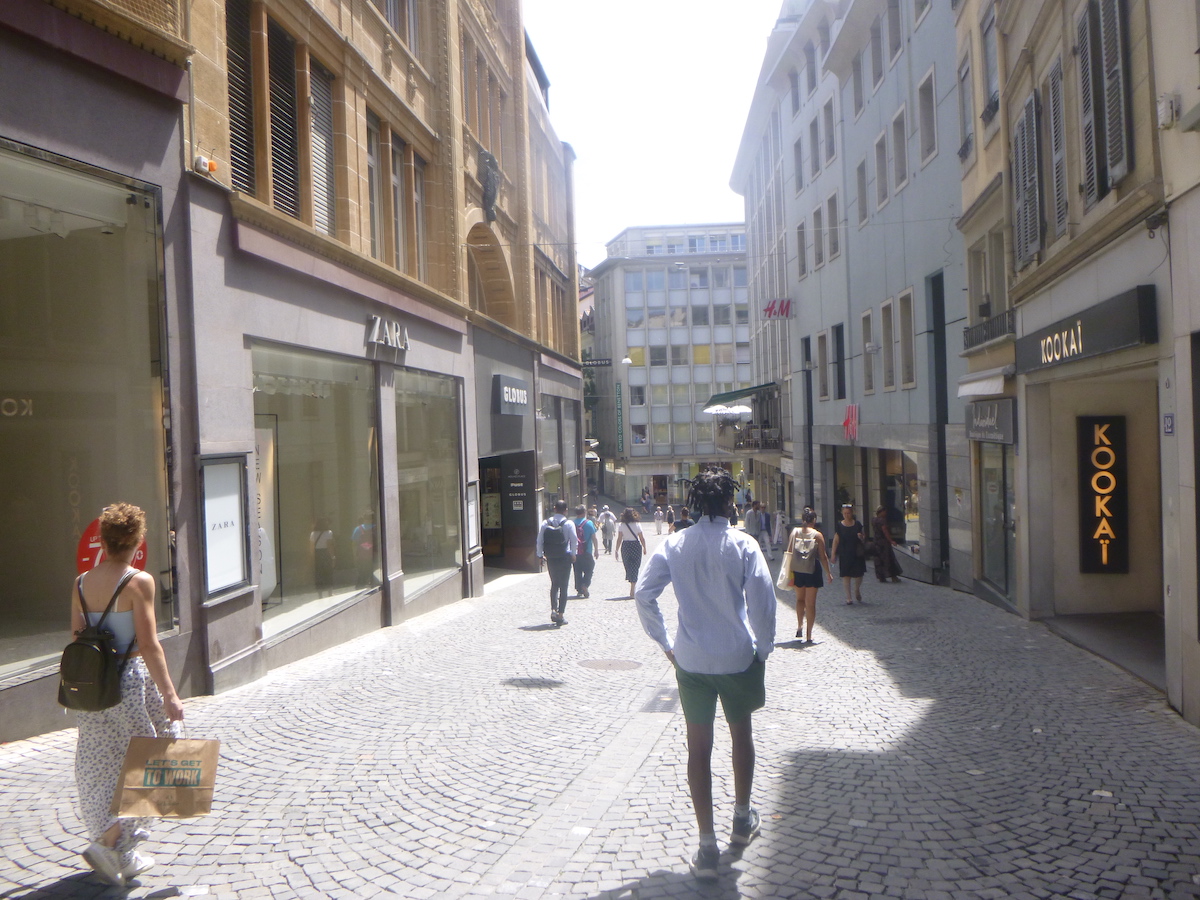 |
 |
| At the top of Rue St François, Rue du Bourg stretches majestically, like a ribbon of elegance and charm, imposing itself as the epicenter of urban distinction, where ancestral facades whisper stories of nobility and refinement. |
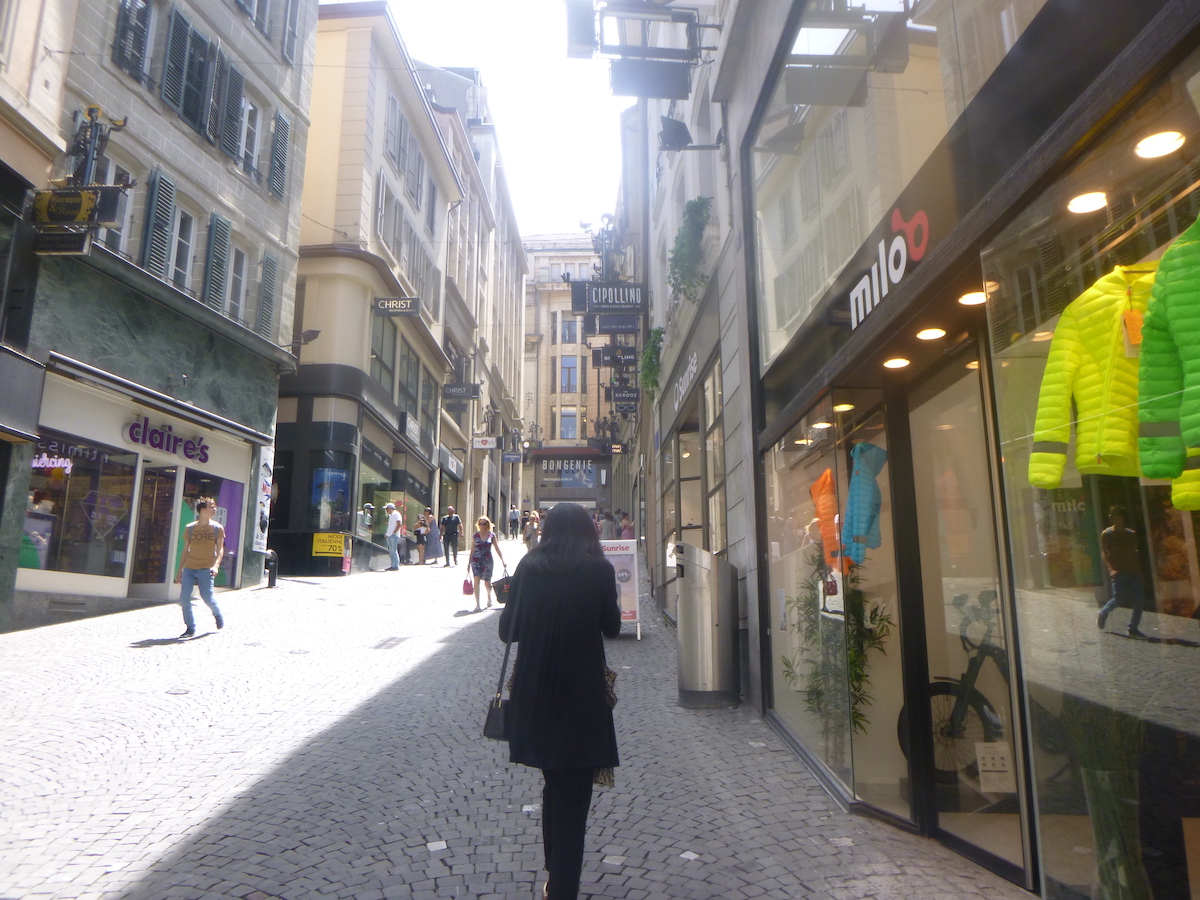 |
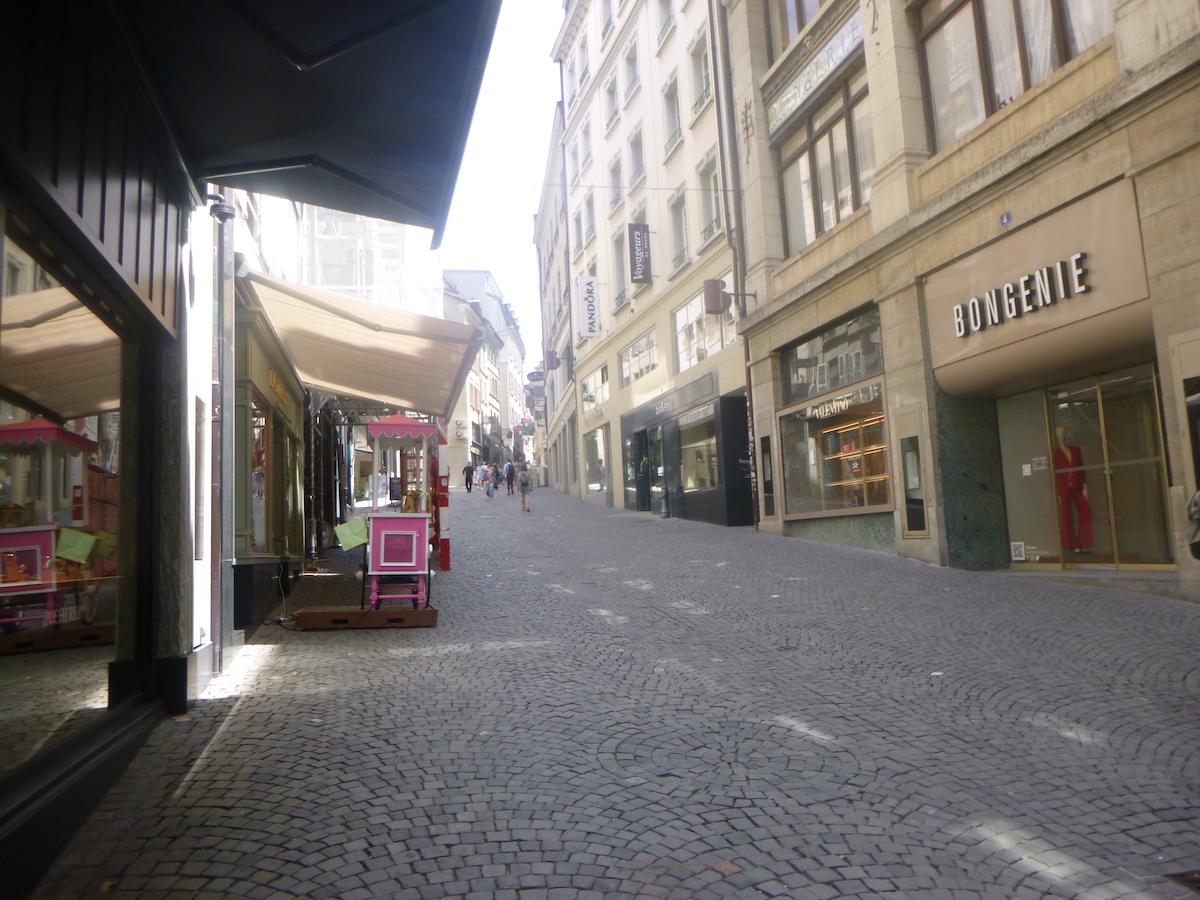 |
Esplanade St François reveals itself to you as a theater of history, where every stone is witness to a past as rich as it is tumultuous. Once a haven of piety, the majestic Franciscan church, built in the 13th century, was the cradle of the Reformation, teeming with theological revolts and fiery debates. Under the aegis of the Vaudois reformer Pierre Viret, the murmurs of the Reformation rose for the first time in this sacred sanctuary, sweeping away secular precepts in favor of a new faith. Calvin, like an architect of the soul, sketched the plans of the Dispute of Lausanne there, where the titanic struggle between Reformists and emissaries of Catholic dogma played out. In the echo of the debates, the stones resonated with the victorious clamor of the Reformers, thus crowning the forced conversion orchestrated by the Bernese, who came to impose their Protestant worship on Vaudois lands. The Franciscans, deprived of their holy abode, were thrown to the winds of exile, their goods confiscated by a city in full metamorphosis. In the light of the 19th century, the millennial ramparts collapsed, giving way to galloping modernity, and the dependencies that encircled the church were engulfed by the tide of urban transformation. Thus, Saint-François, like the phoenix rising from its ashes, saw itself restored to the splendor of its past glory.
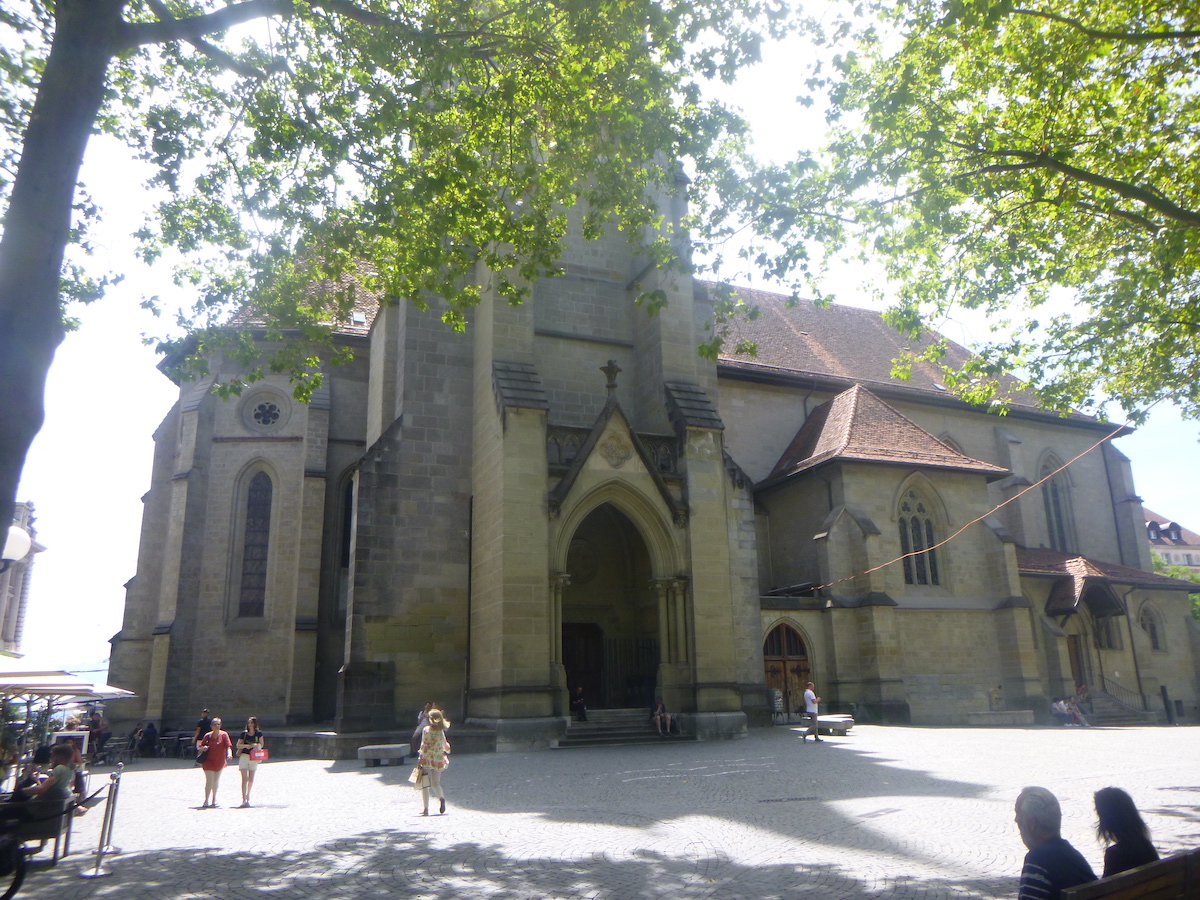
| From the belly of the church, an underground labyrinth opens at your feet, offering a secret passage to Petit-Chêne, like an enigmatic alley through the bowels of the city. |
 |
 |
| Descending the steep slope, you tread the ancestral cobblestones of Petit-Chêne, a true challenge to verticality. |
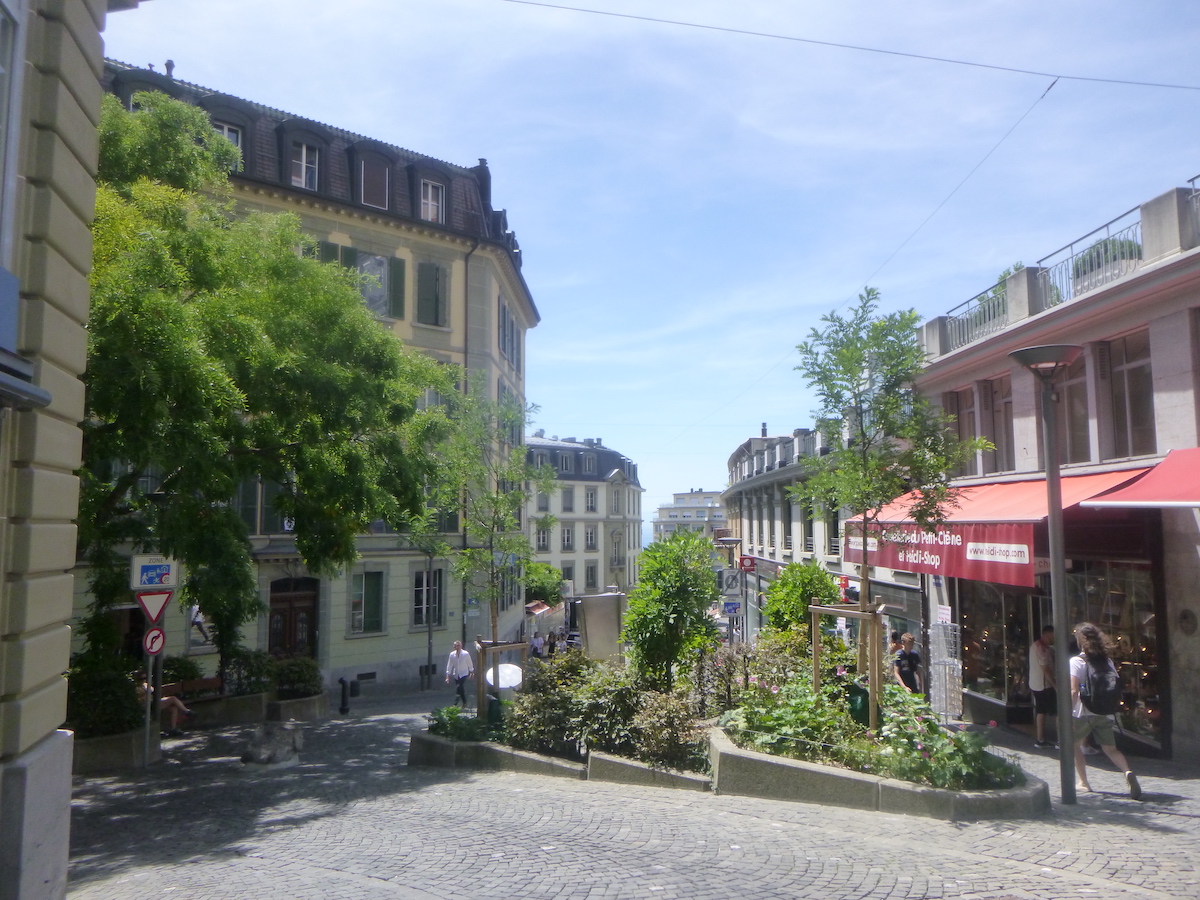 |
 |
At the foot of the descent stands the train station, the pulsating epicenter of a city in perpetual motion. From there, it is best to take the metro to reach Ouchy, by the lake. Lausanne has several metro lines, mostly underground, which also take you to Epalinges, north of the city.

Accomodation on Via Jacobi
- Martha Godel, Moulin de Bressonaz, Bressonaz; 079 485 95 20; Guestroom, breakfast
- Michel Comte, Relais de Bressnaz, Bressonaz; 021 905 13 13/079 448 55 89; Guestroom, breakfast
- Annie Beck, Les Brits, Syens; 021 903 20 78/079 389 83 08; Guestroom, cuisine
- B&B Beguin Risold, Route du Village 11, Vucherens; 021 905 71 67/079 216 95 43; Guestroom, breakfast
- B&B Bünzli, Route du Village 9, Vucherens; 021 781 19 62/077 431 52 25; Guestroom, breakfast
- Espace JayKay, Route de l’Ecorcheboeuf 20, Ussières; 079 239 69 87; Guestroom, dinner, breakfast
- Terre des Ames, Route d’Ecorcheboeuf 20, Ussières; 076 512 36 76; Guestroom, breakfast
- Gîte El Jire, Chemin de l’Eglise 12, Montpreveyres; 077 533 93 29; Accueil jacquaire
- Hostellerie Les Chevreuils, Route du Jorat 80, Vers-chez-Les Blanc; 021 785 01 01; Hotel***, dinner, breakfast
- Hôtel La Marmite, Route de Berne 285, Epalinges; 021 784 19 03; Hôtel*, dinner, breakfast
- Hôtel L’Union, Chemin des Croisettes, Epalinges; 021 653 89 89 ; Hotel*, dinner, breakfast
- Paroisse catholique St Amédée, Route du Pavement 97, Lausanne; 021 647 22 32; Accueil jacquaire, dinner, breakfast
- Jeunhotel, Chemin du Bois de Vaux 36, Vidy/Lausanne; 021 626 02 02; Youth hostel
There are numerous accommodations in a big city. So, for other accommodations that are not gîtes, check online or contact the Lausanne Tourist Office (021 613 73 21).
Feel free to add comments. This is often how you move up the Google hierarchy, and how more pilgrims will have access to the site.
 Next stage: Stage 18: Lausanne to Rolle
Next stage: Stage 18: Lausanne to Rolle
|
 |
Back to the menu |


















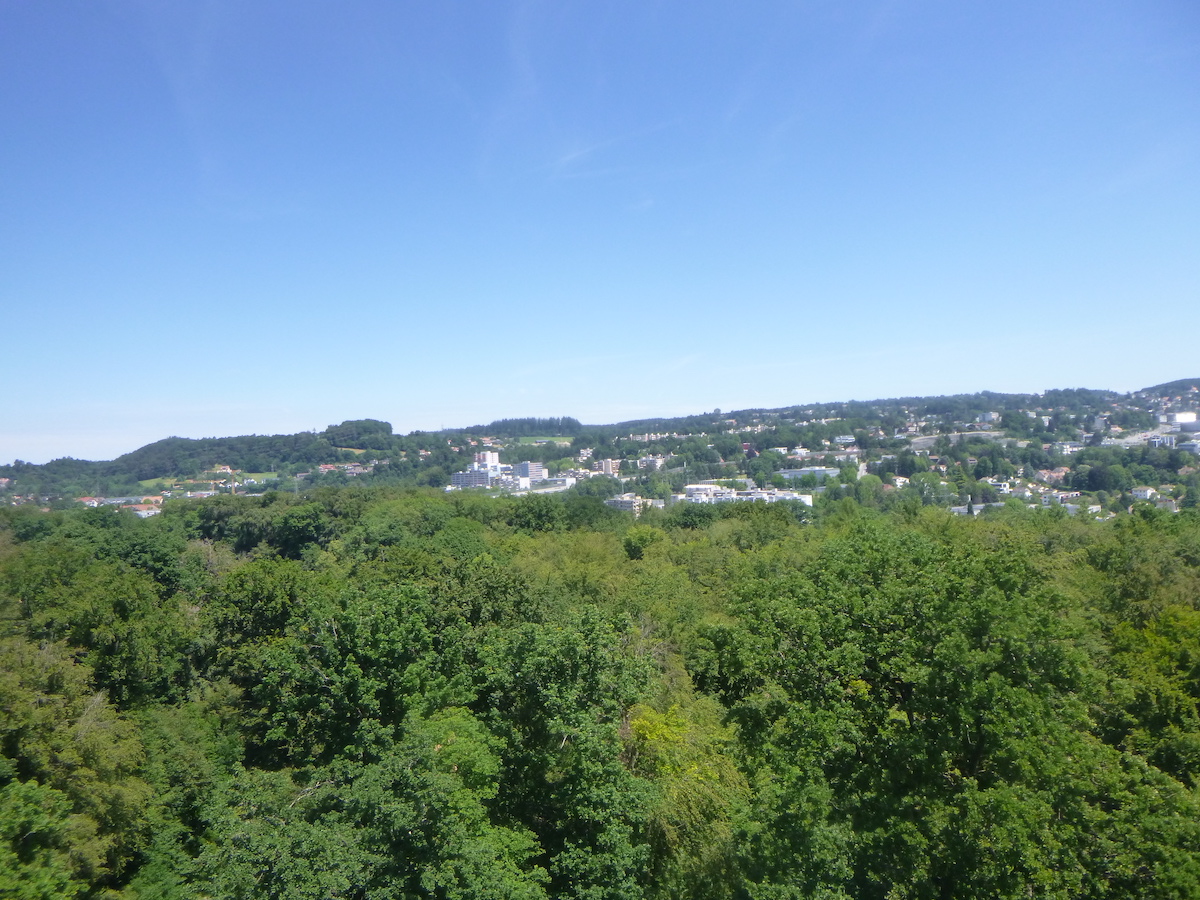
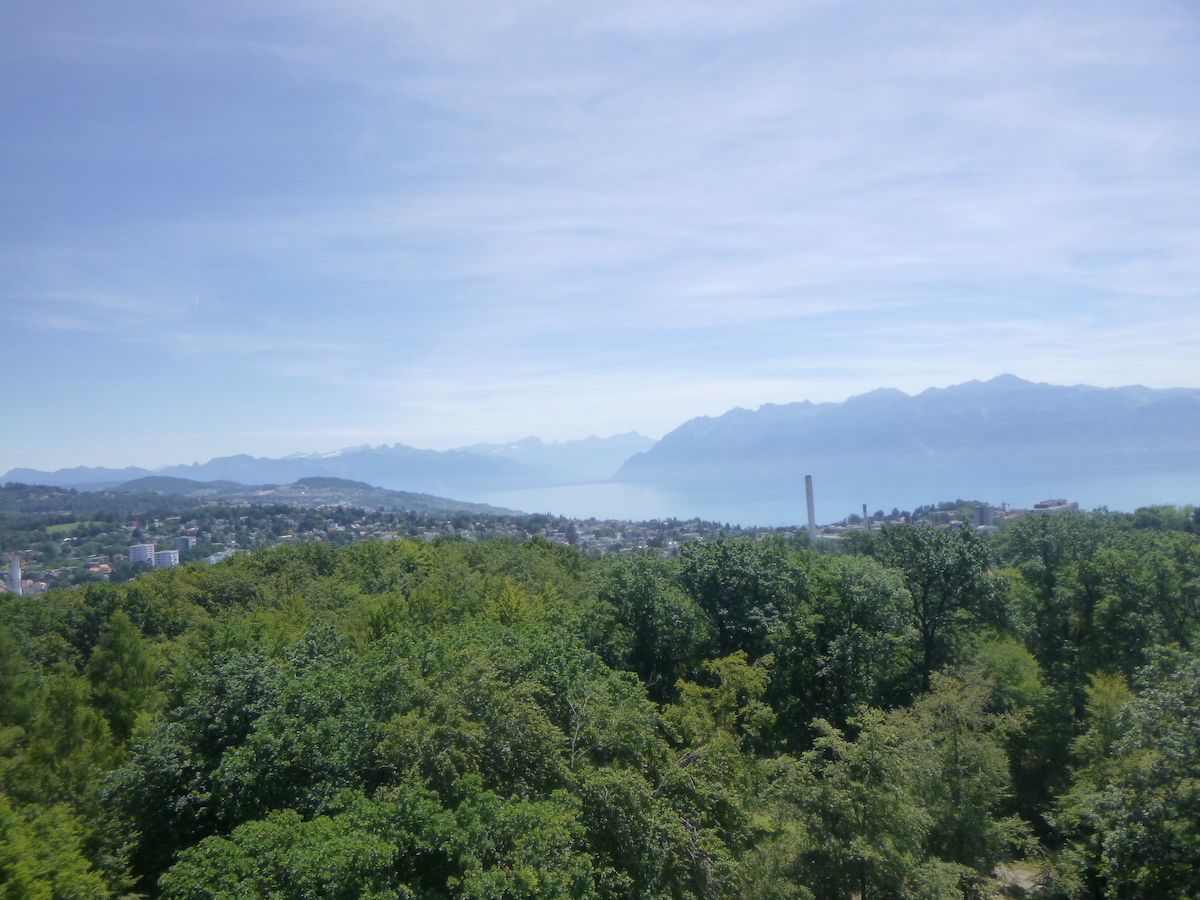


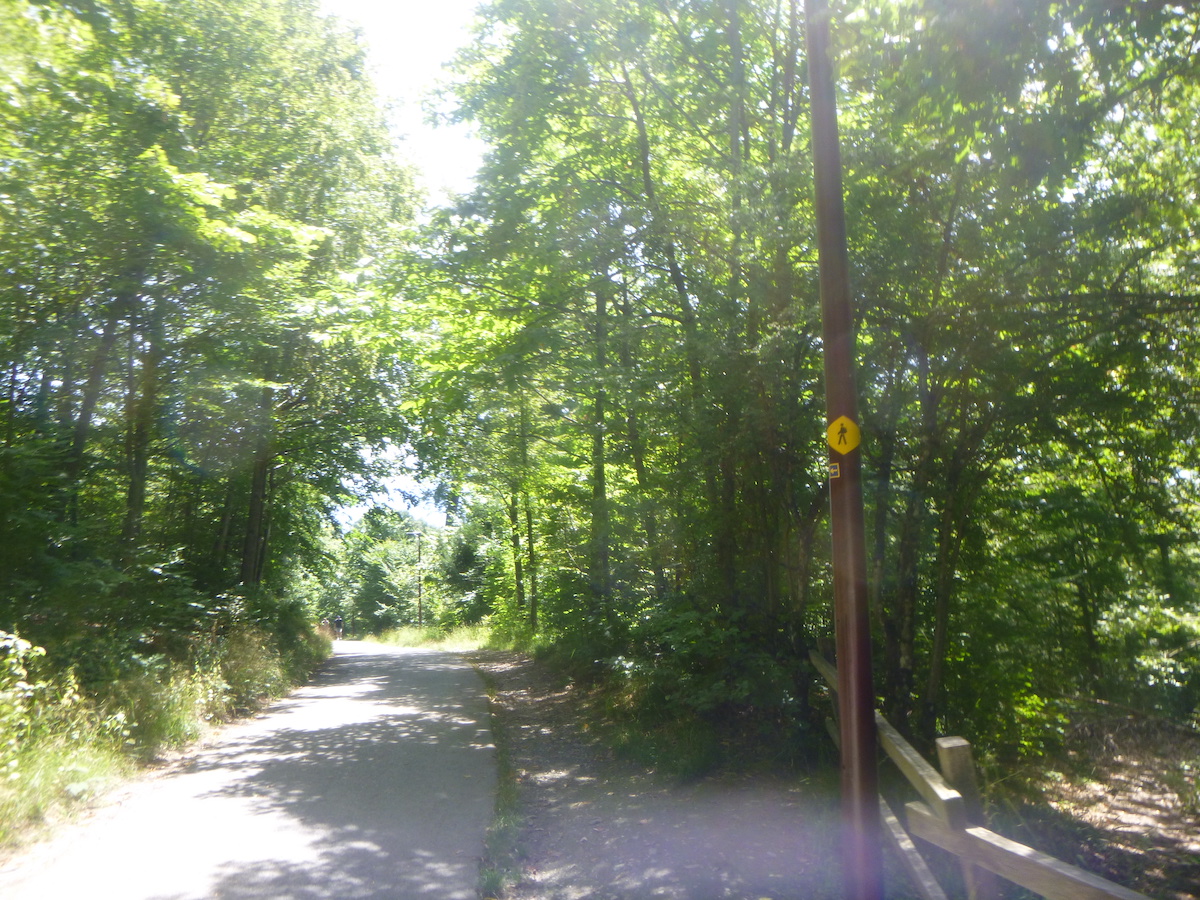



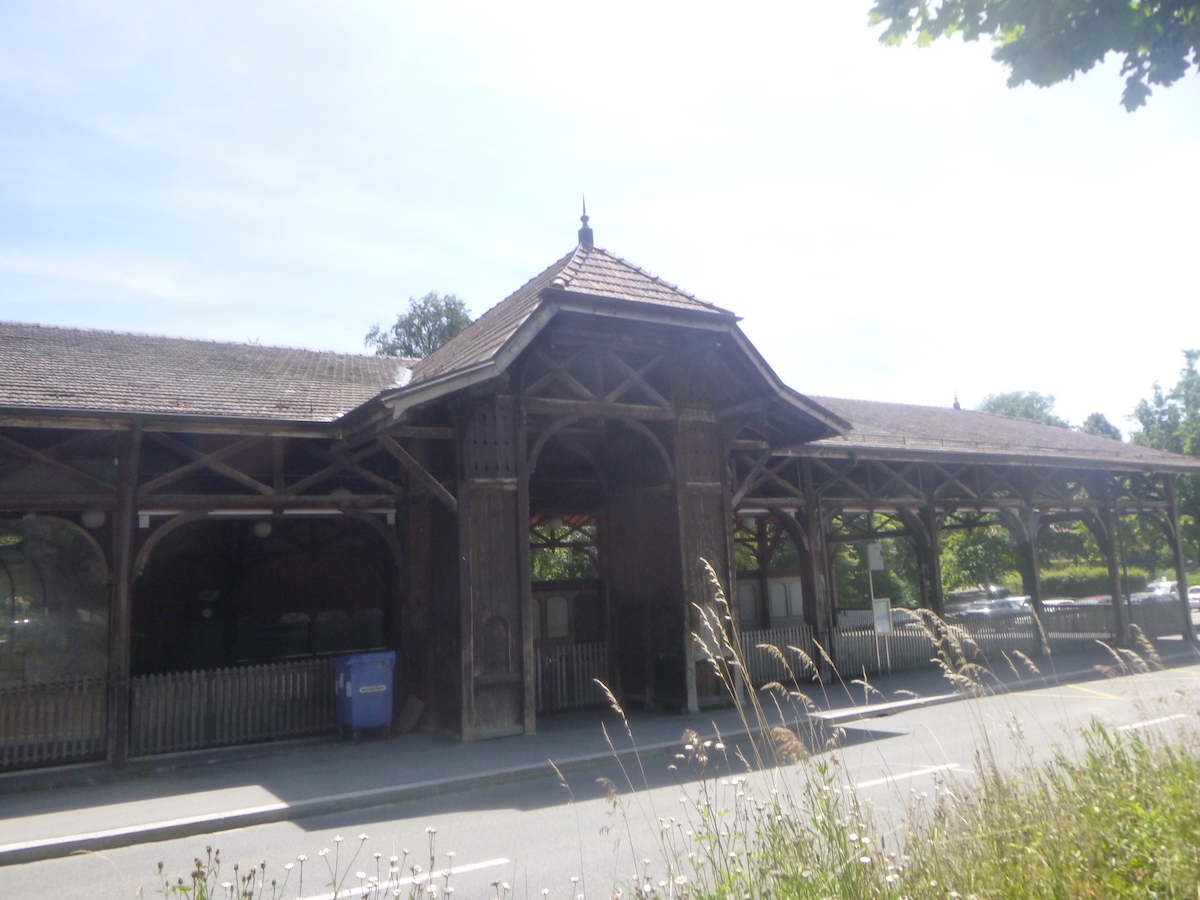
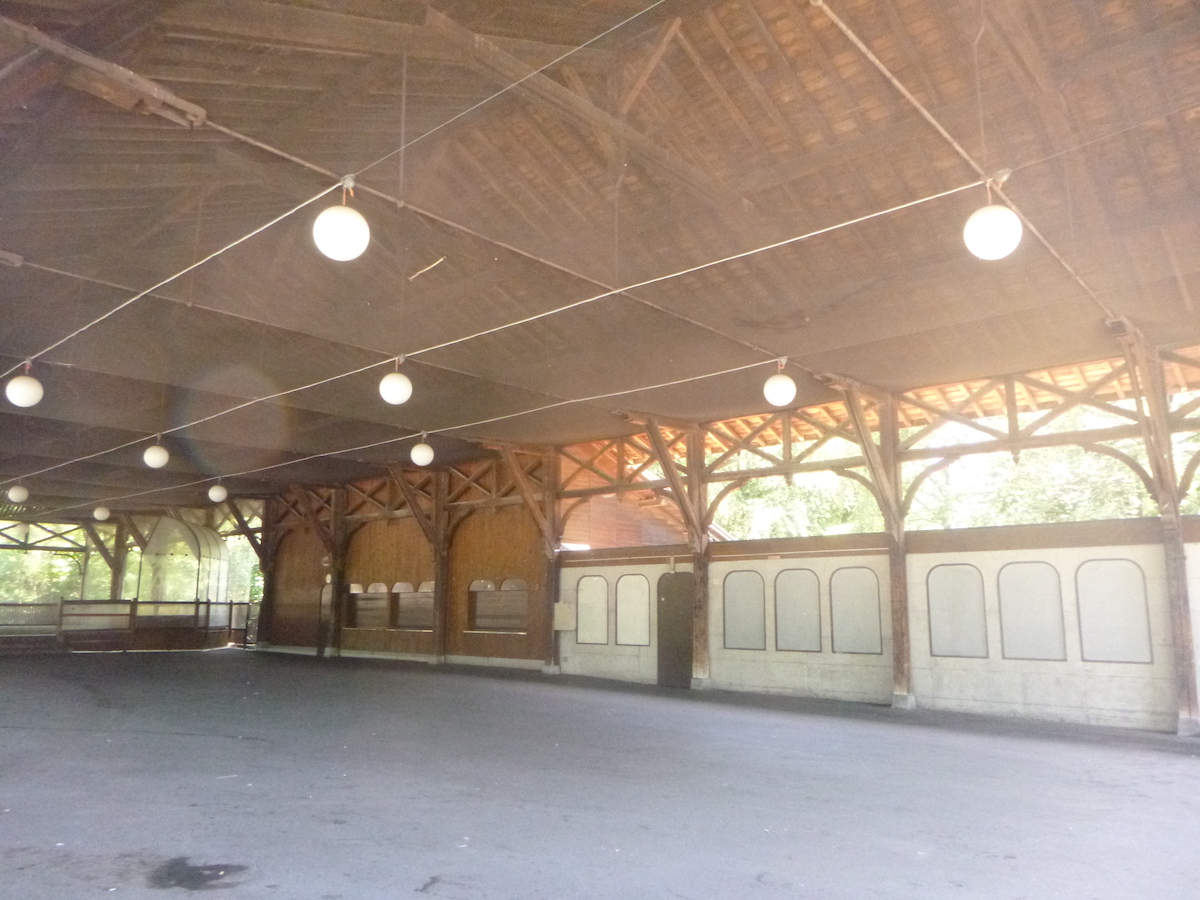







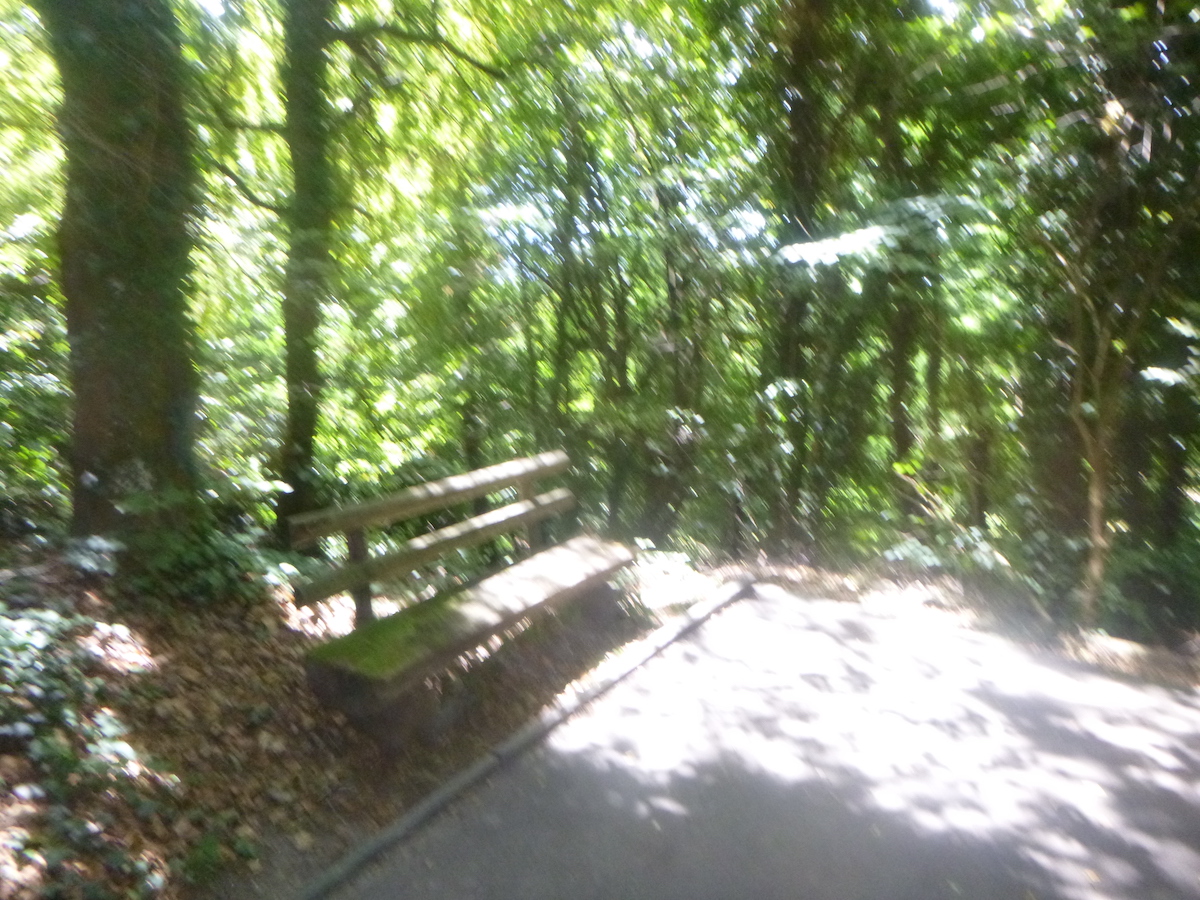
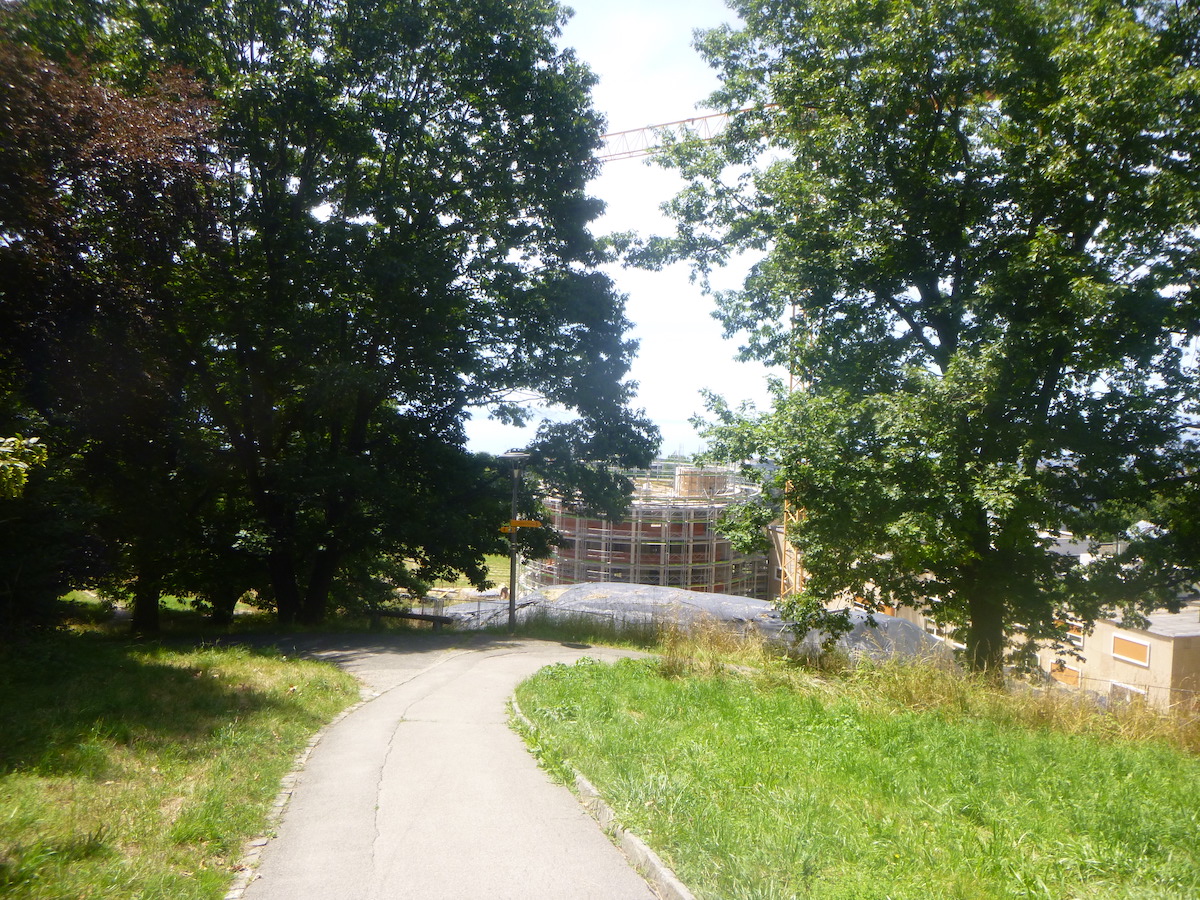












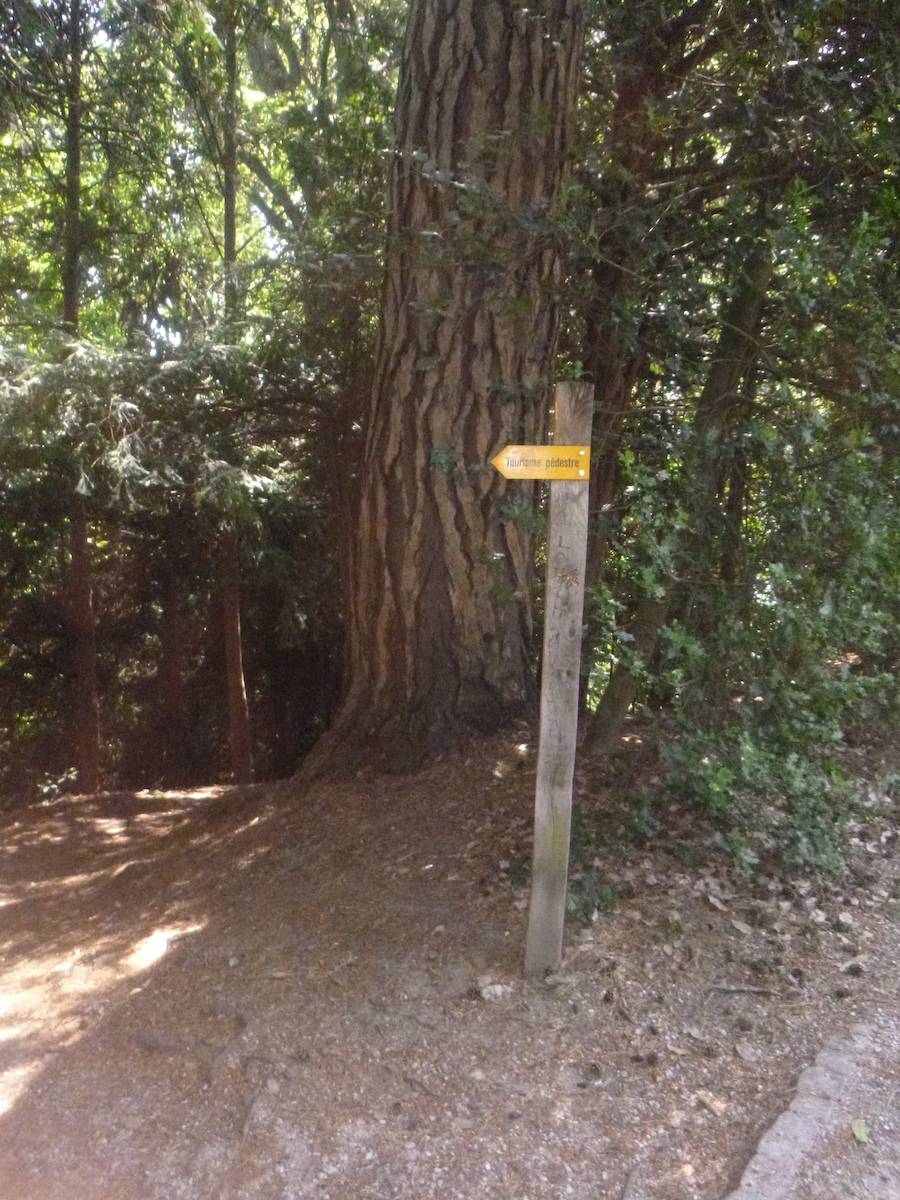
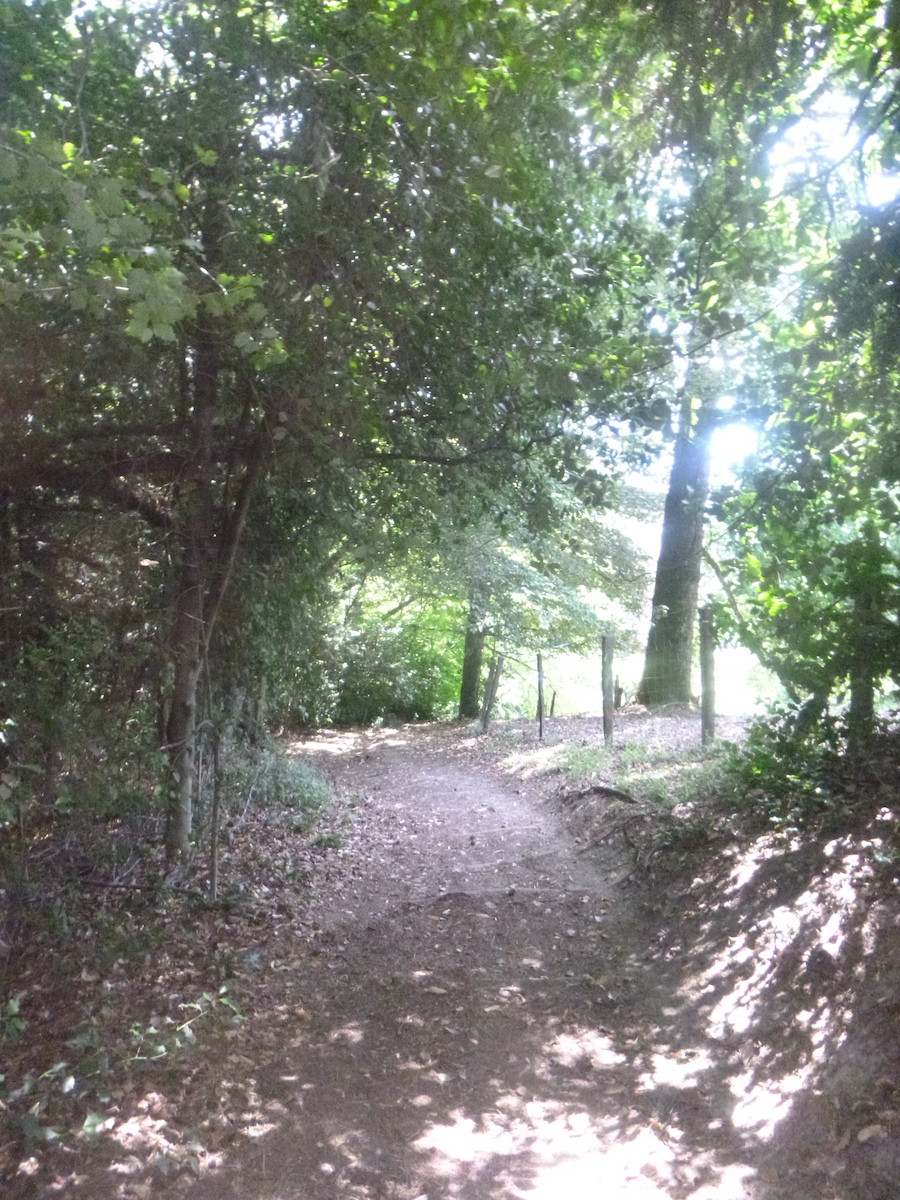






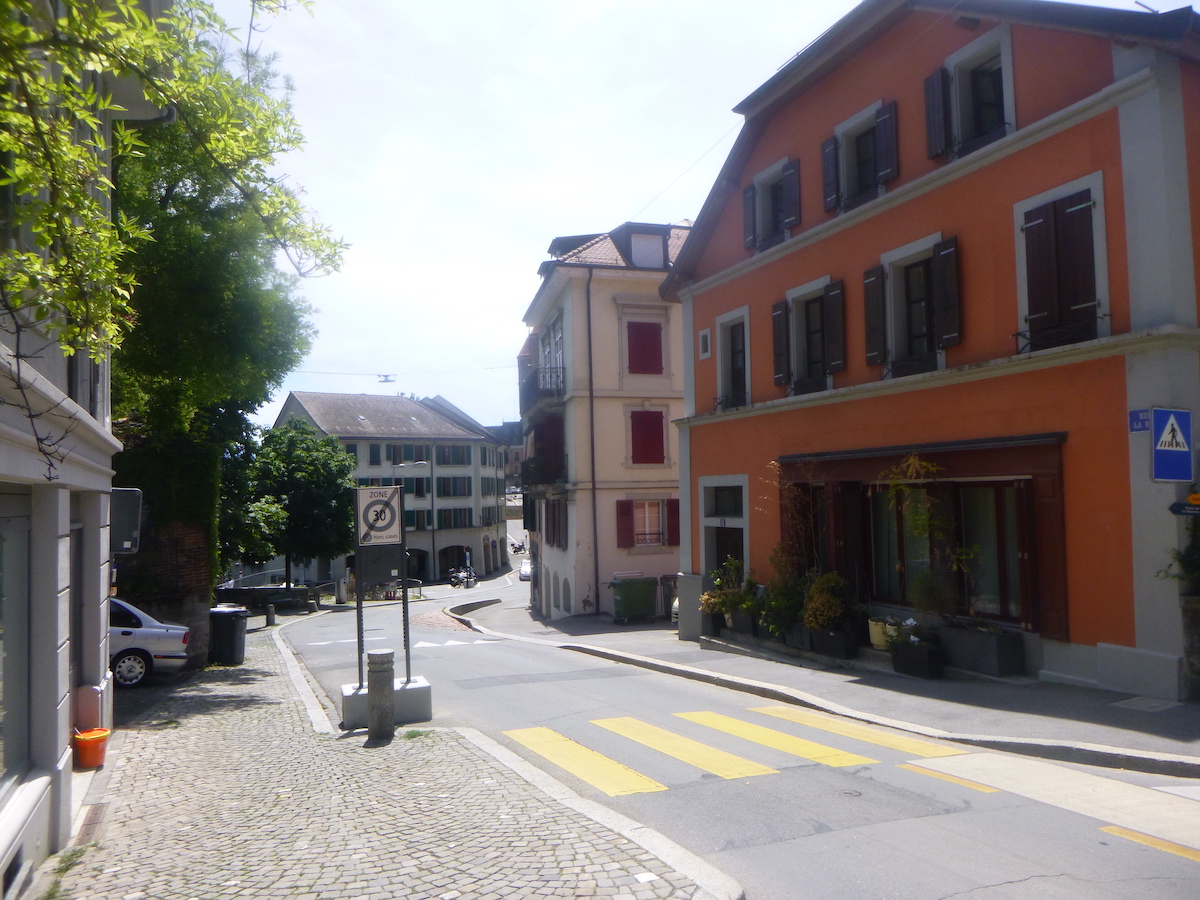
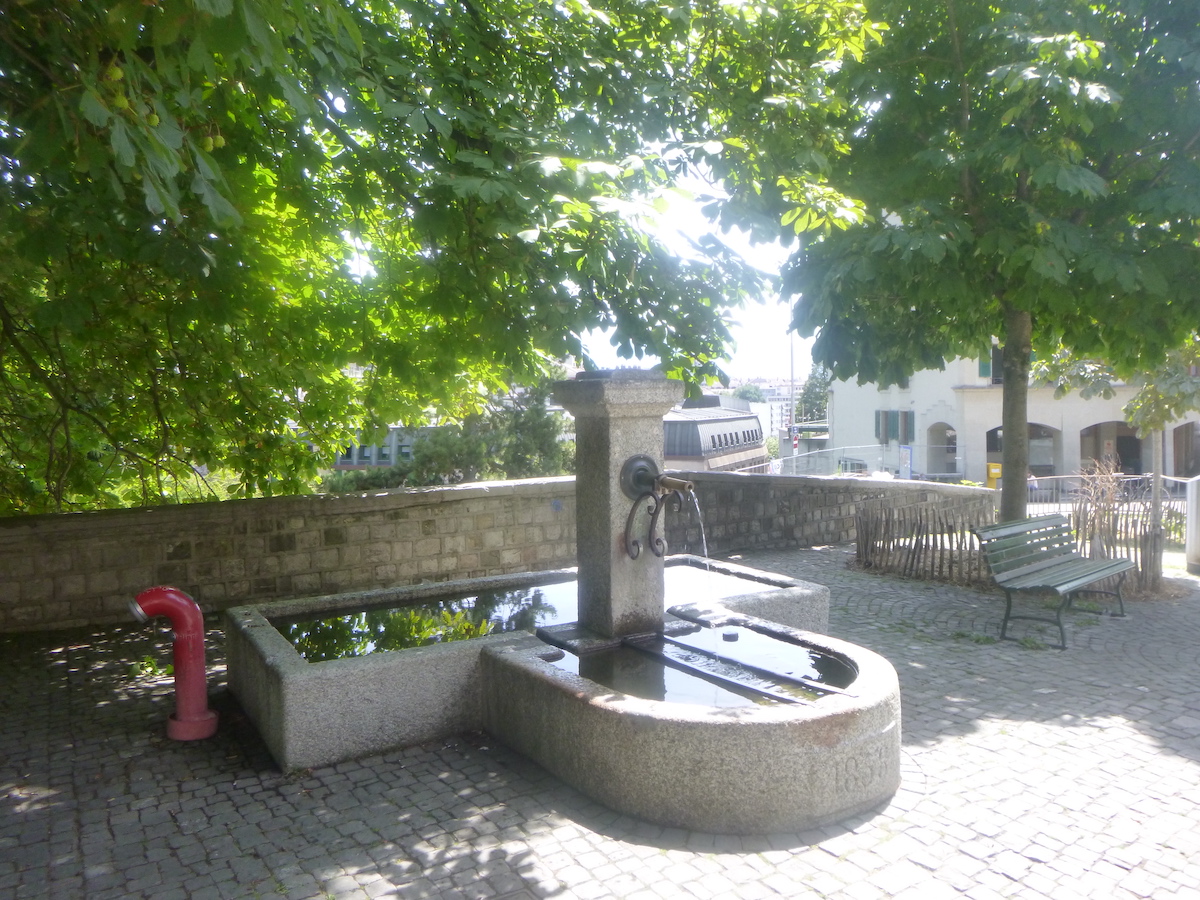






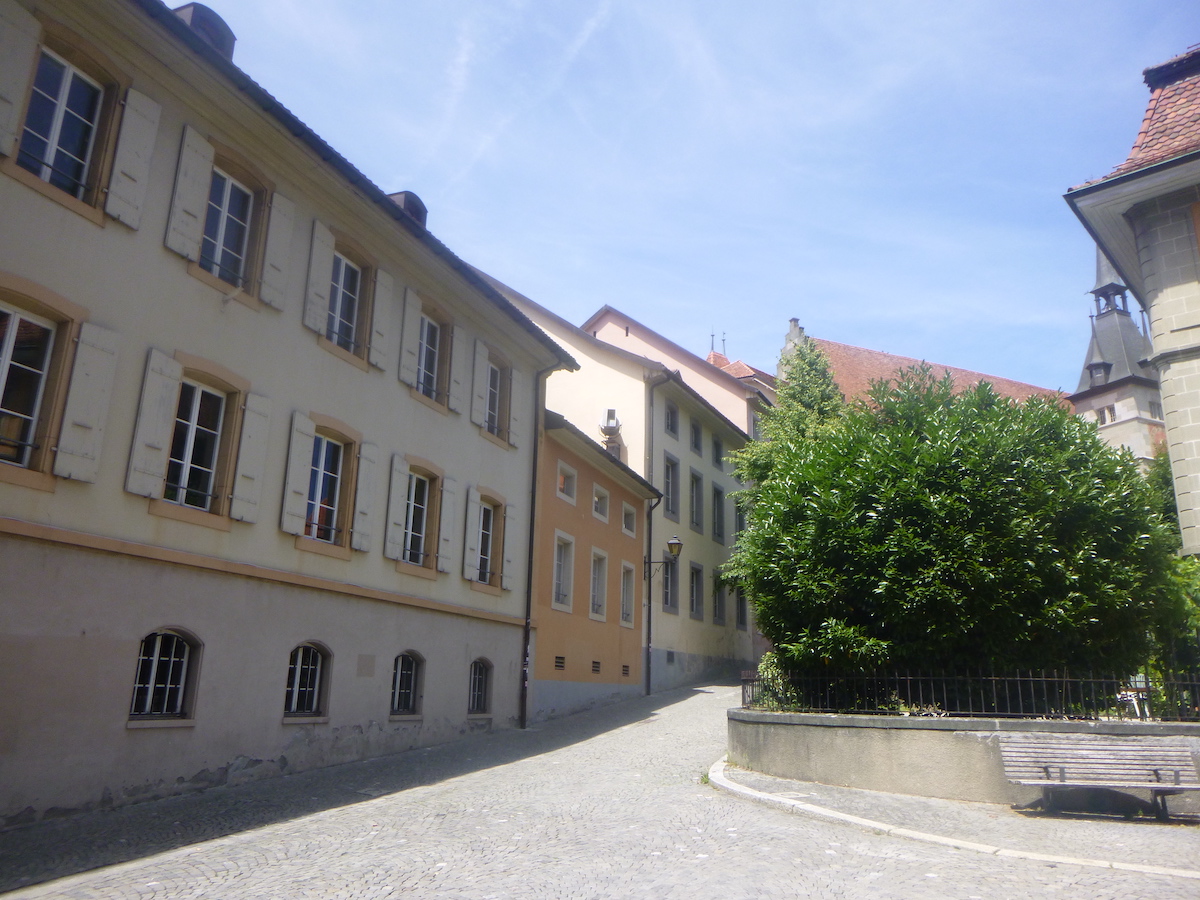
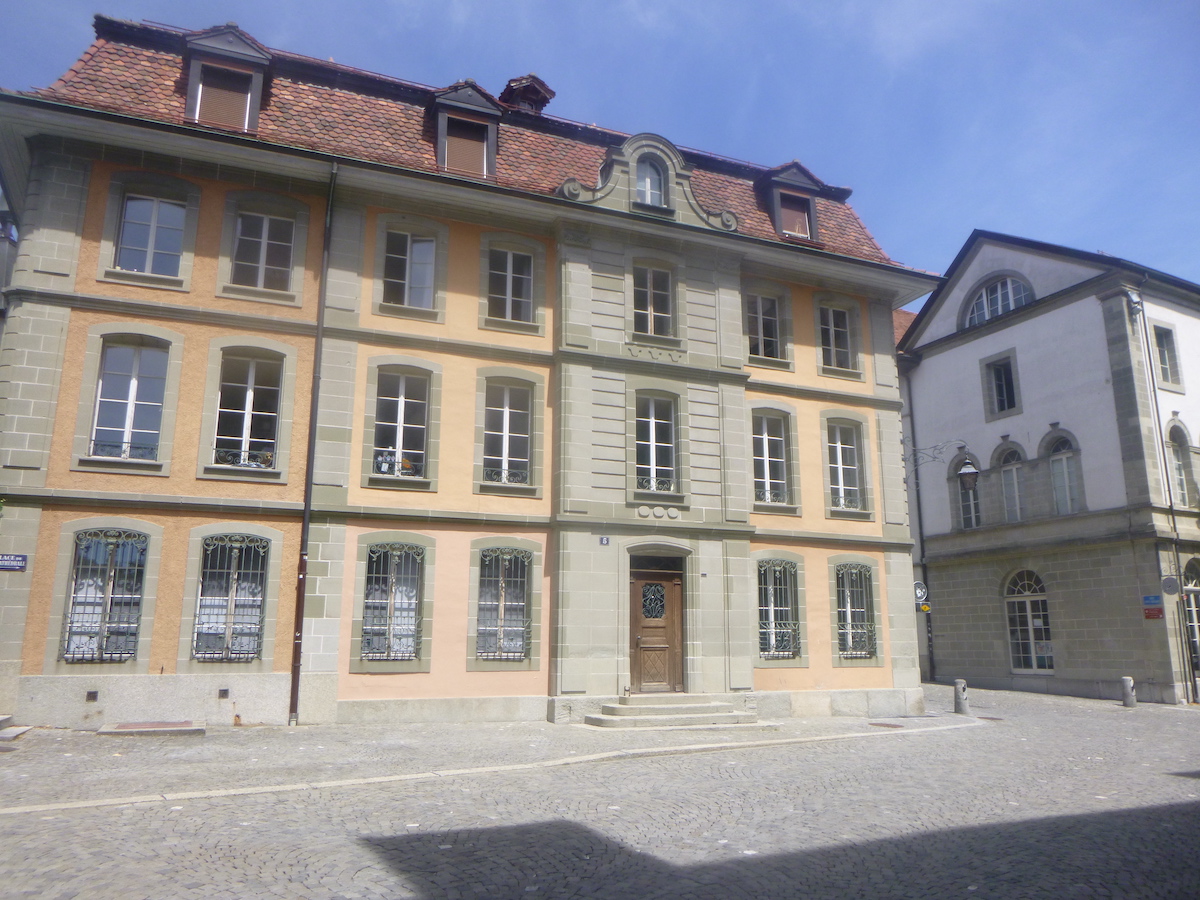




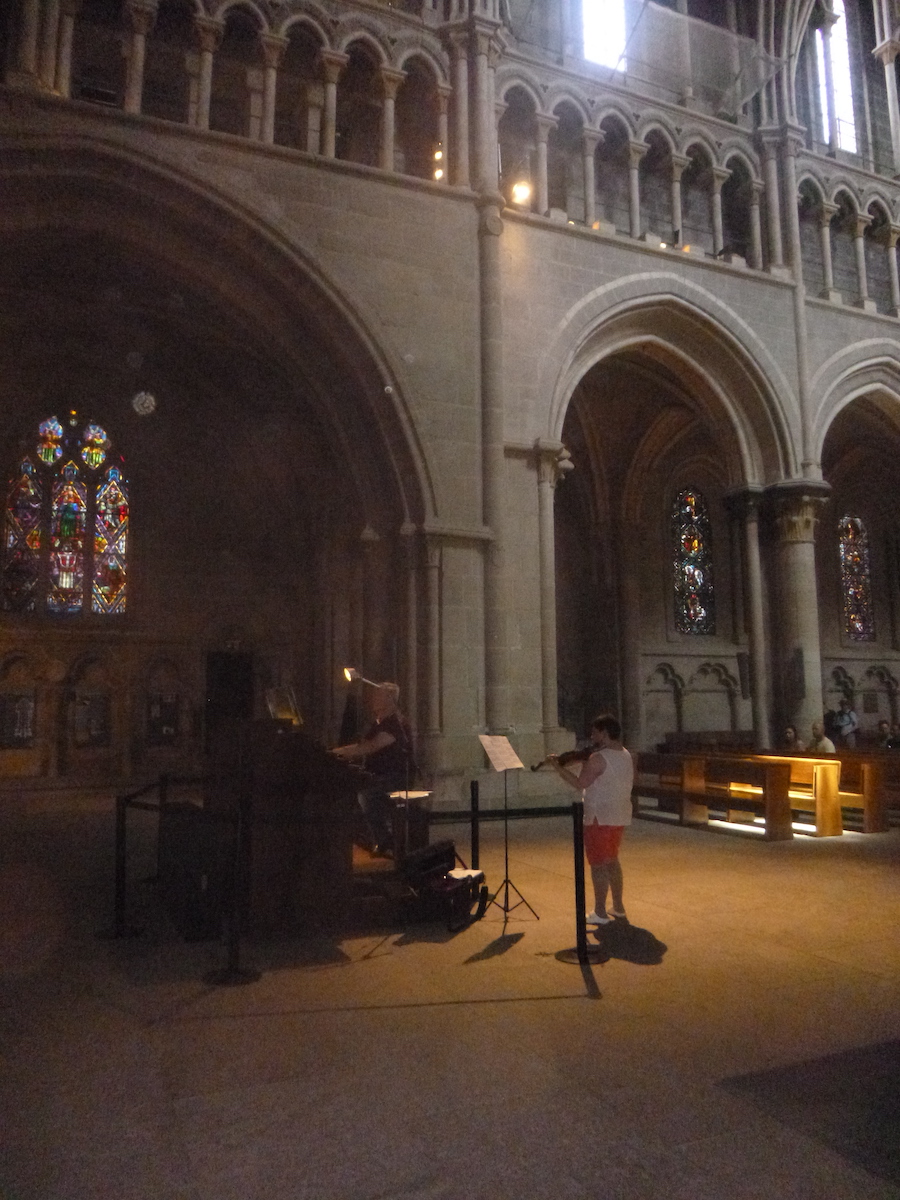
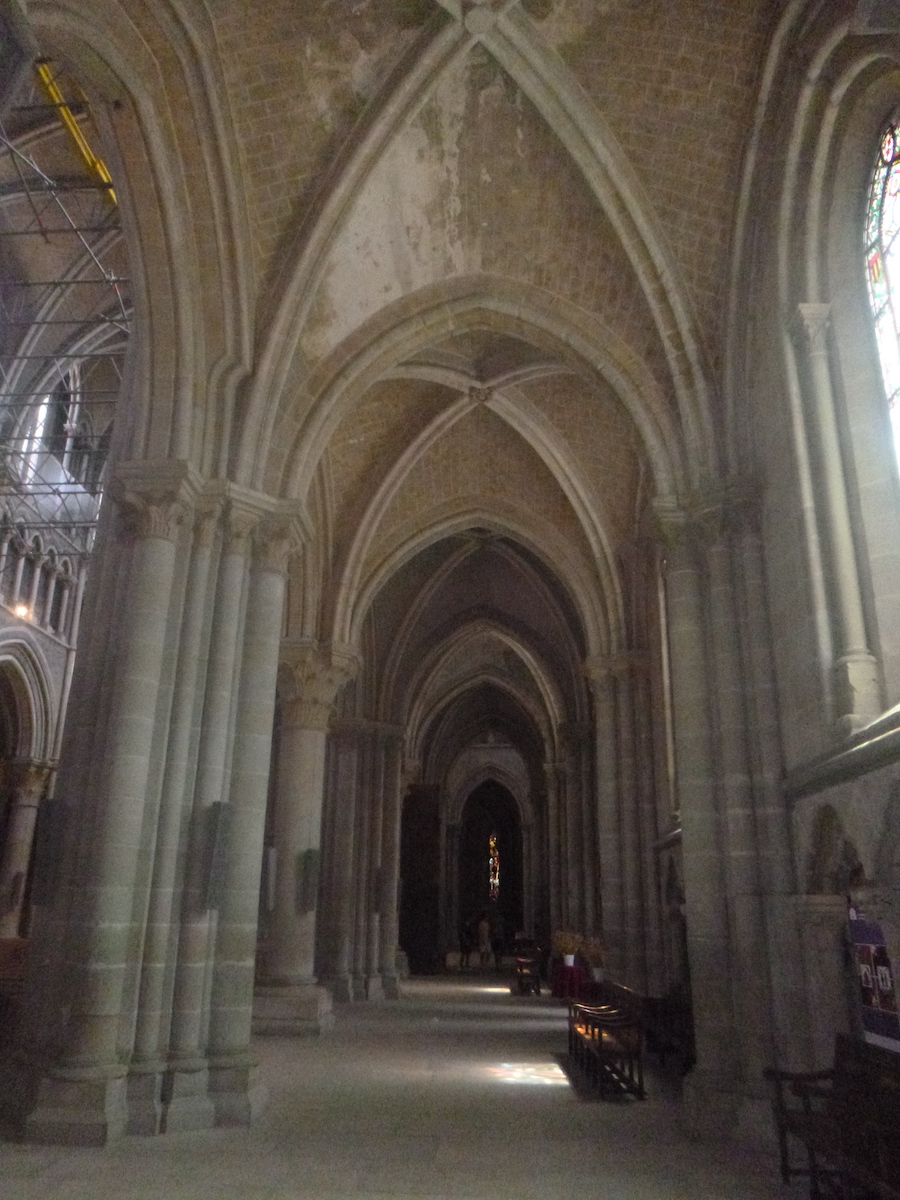























 Next stage: Stage 18: Lausanne to Rolle
Next stage: Stage 18: Lausanne to Rolle
